
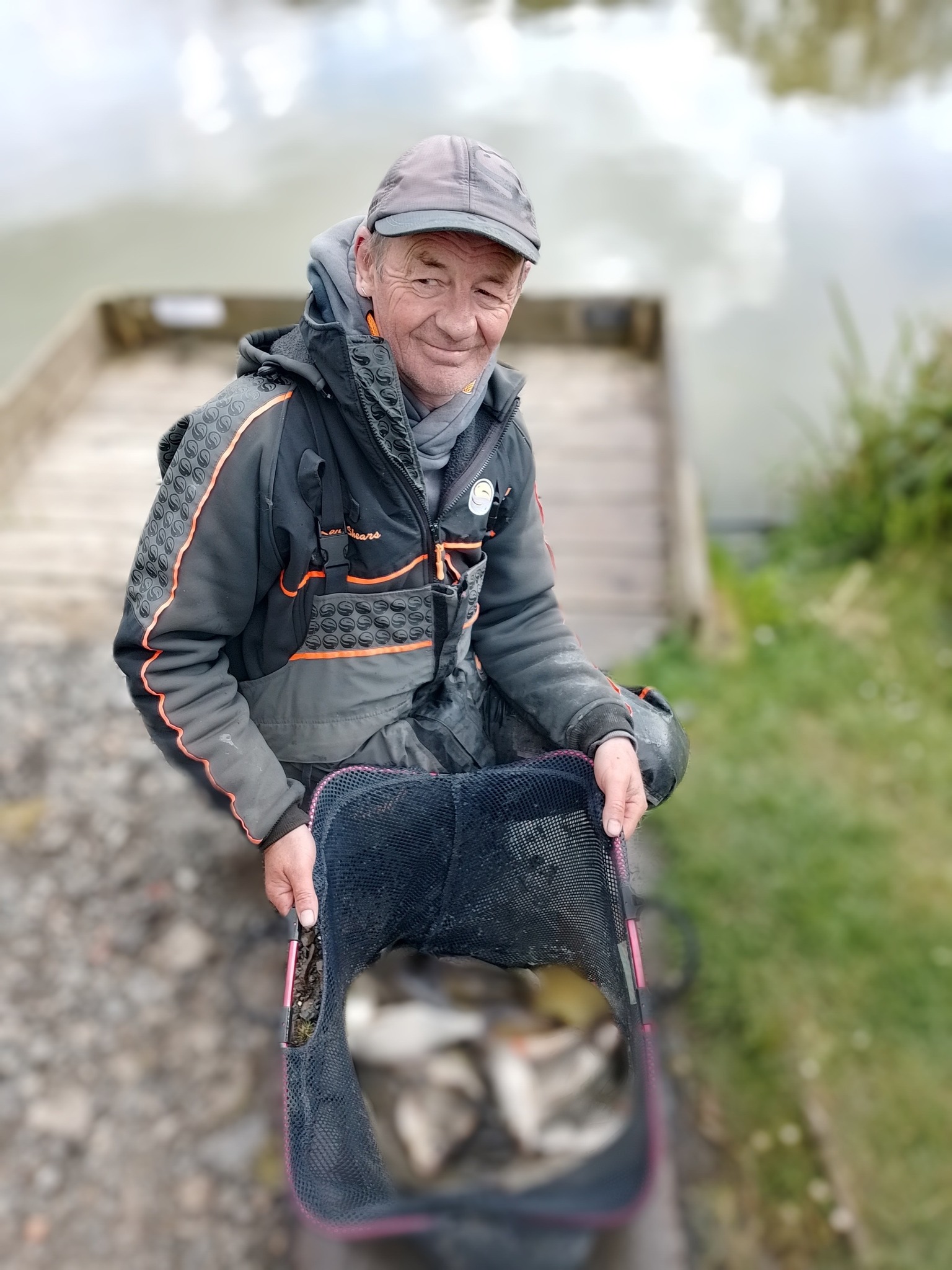
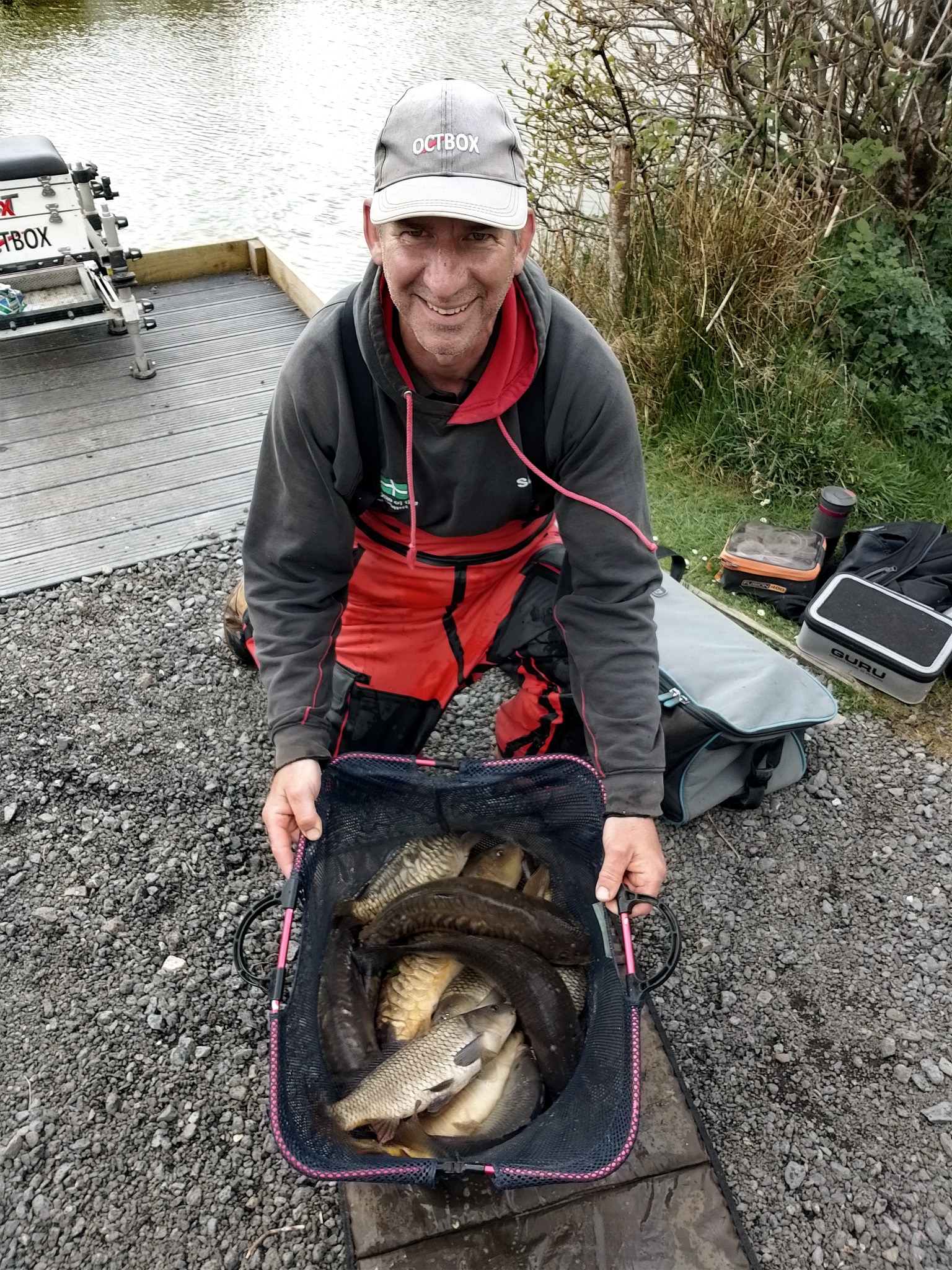
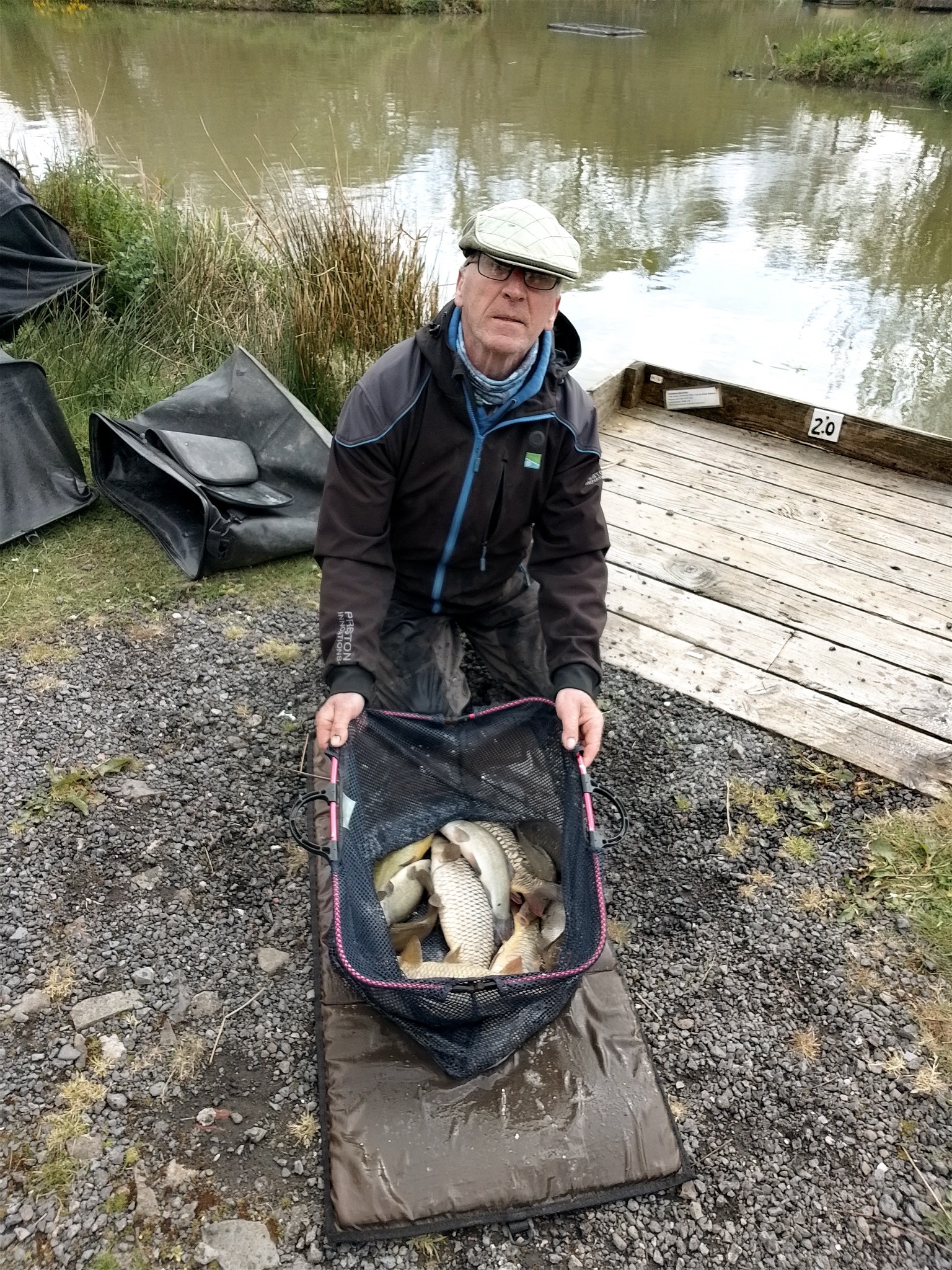
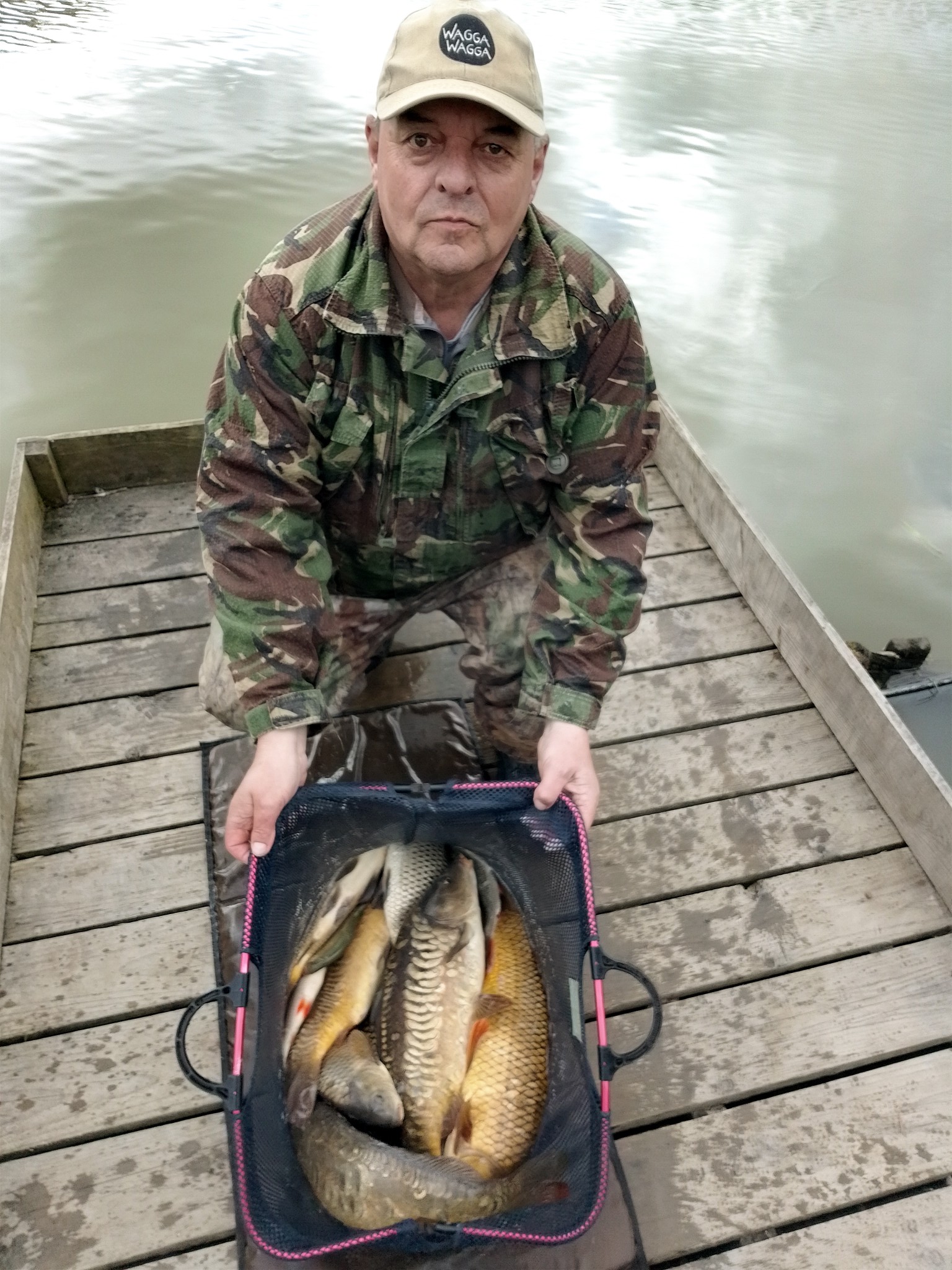
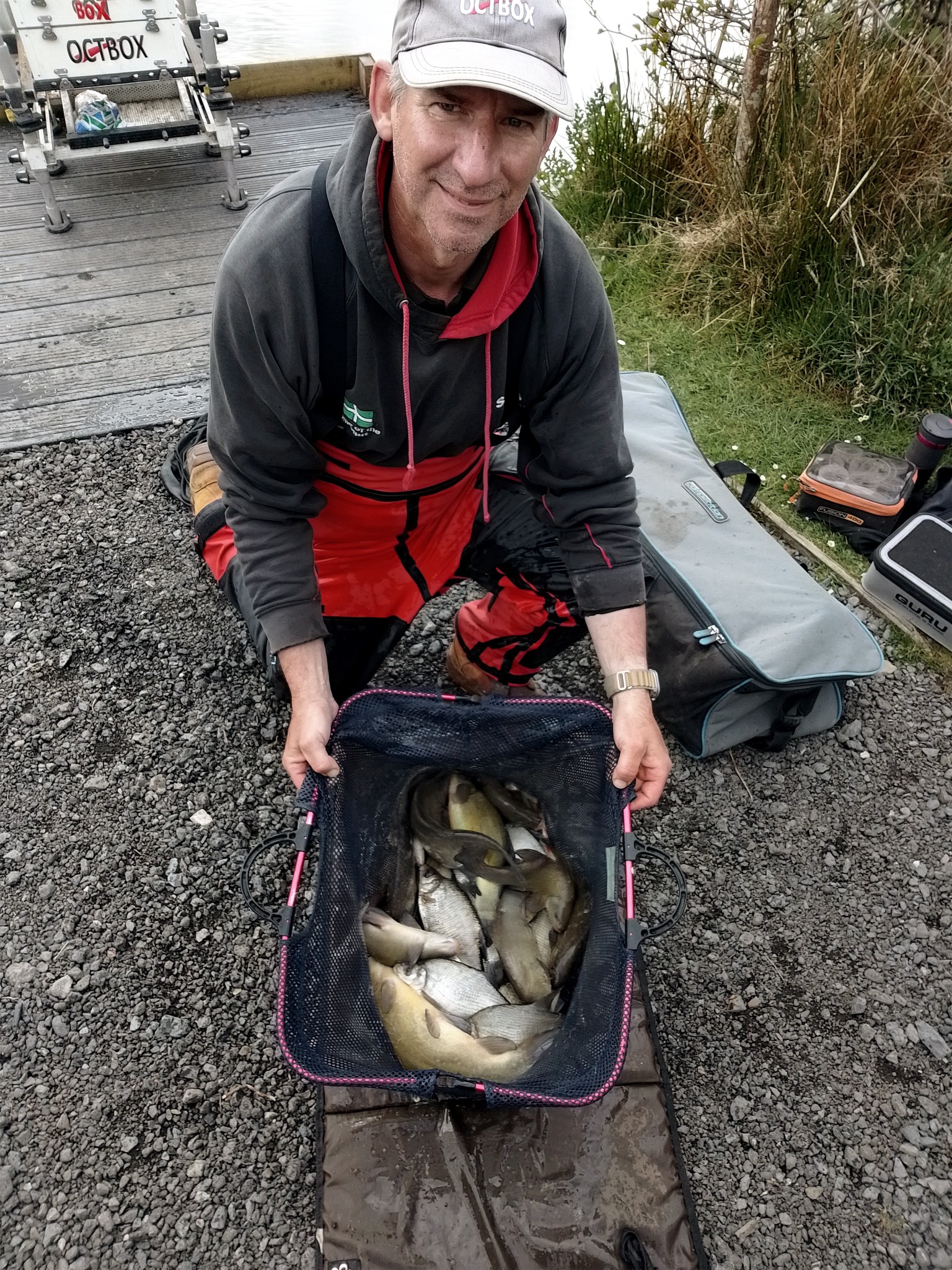
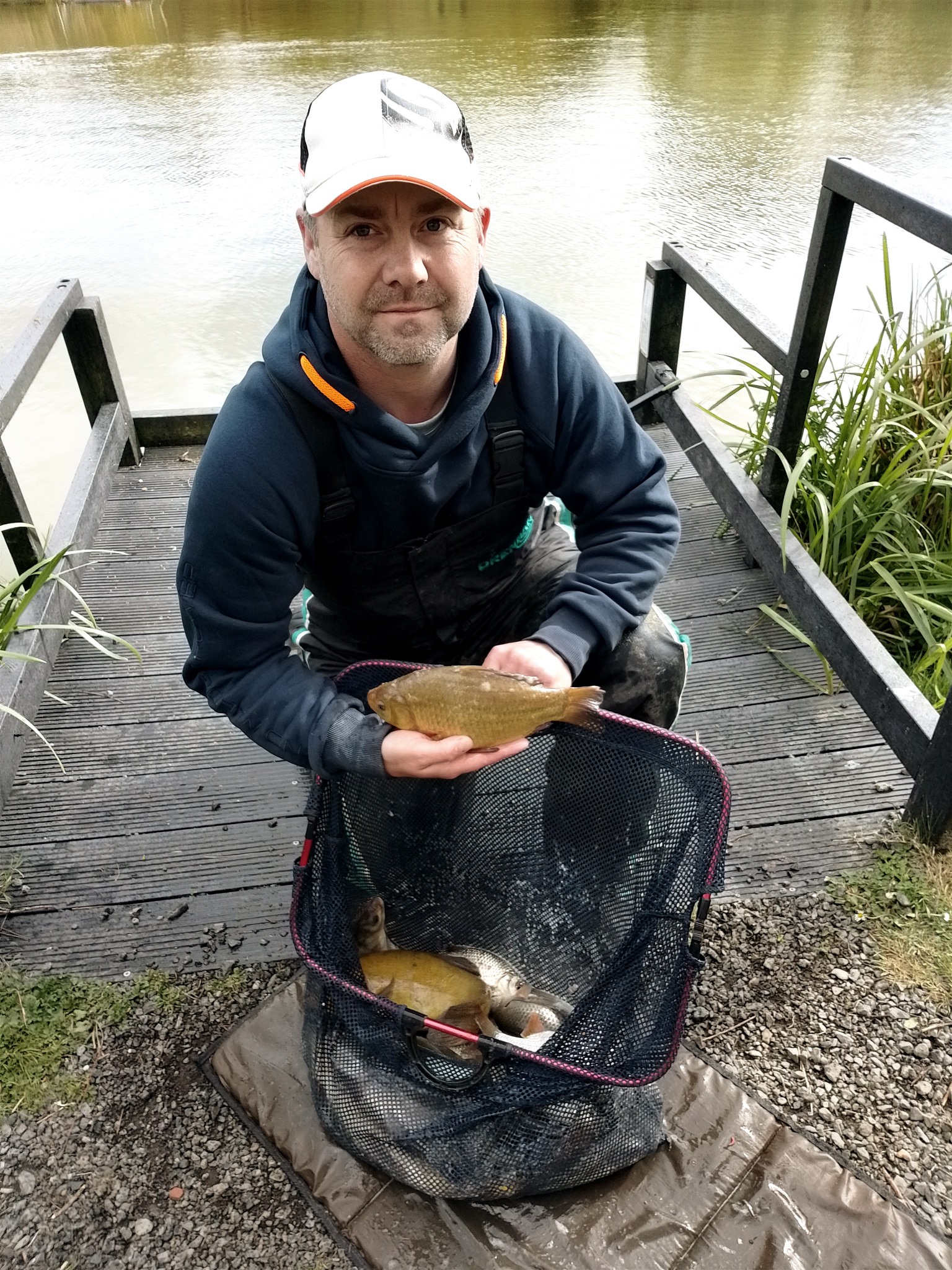
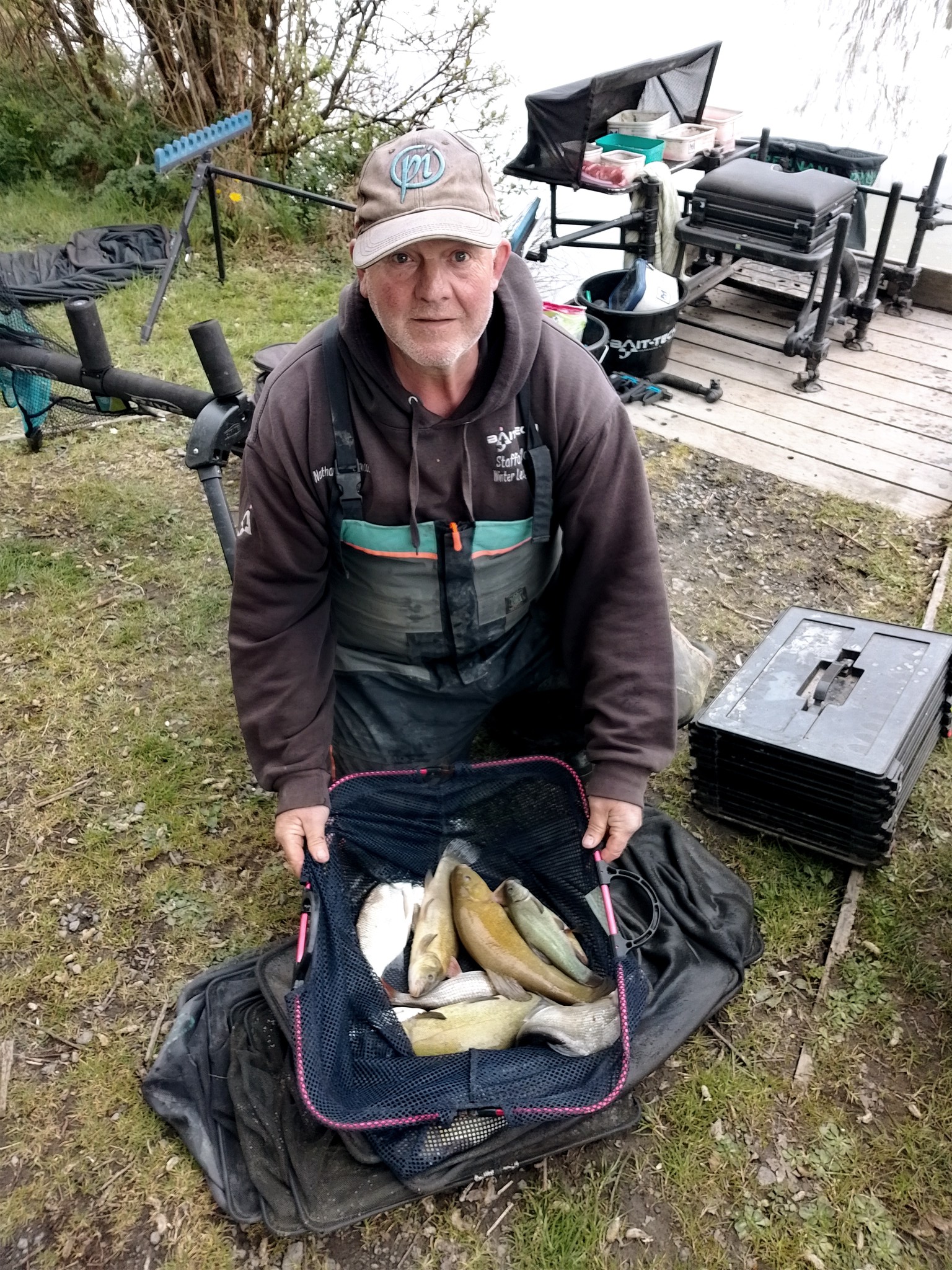
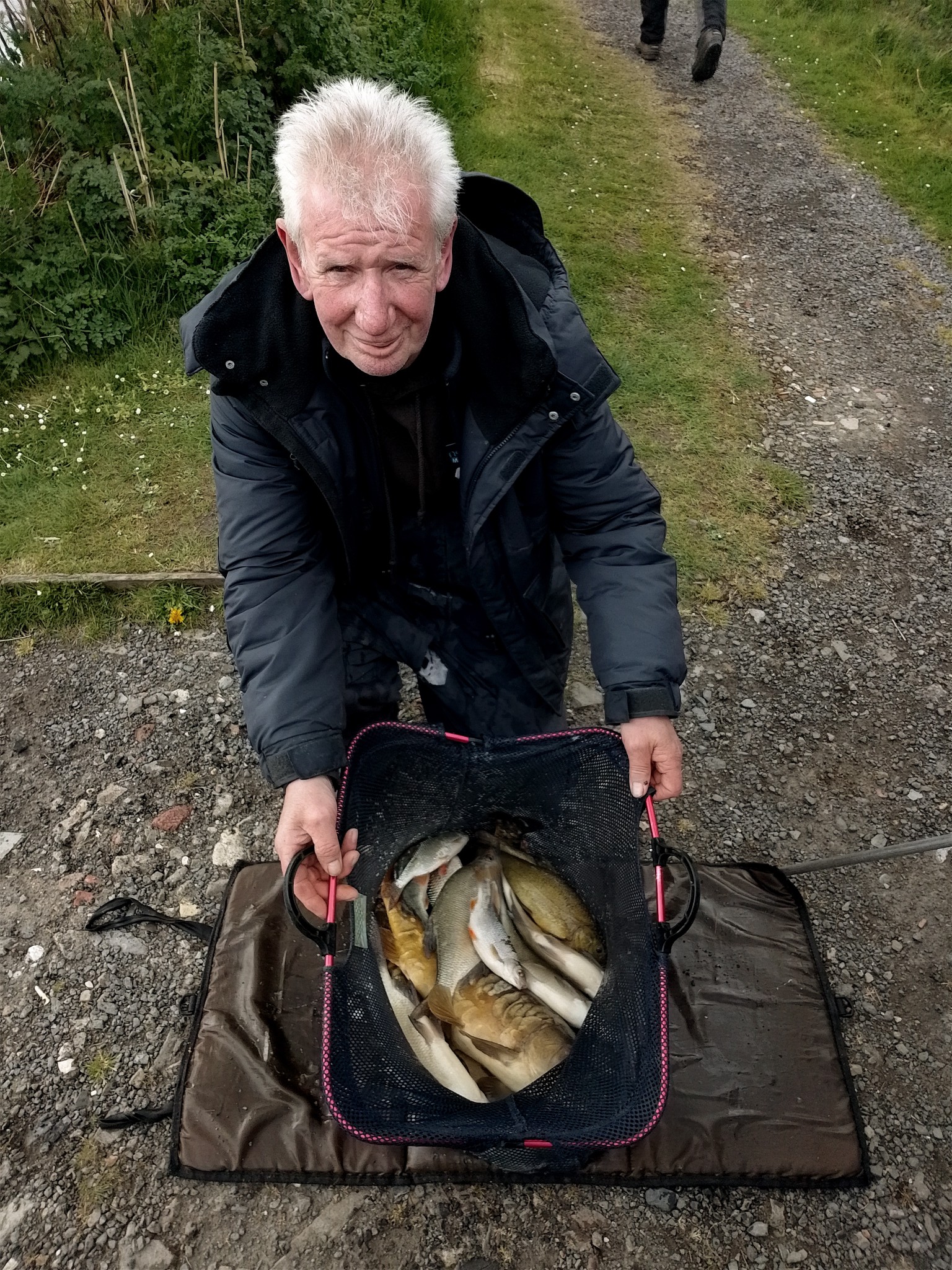
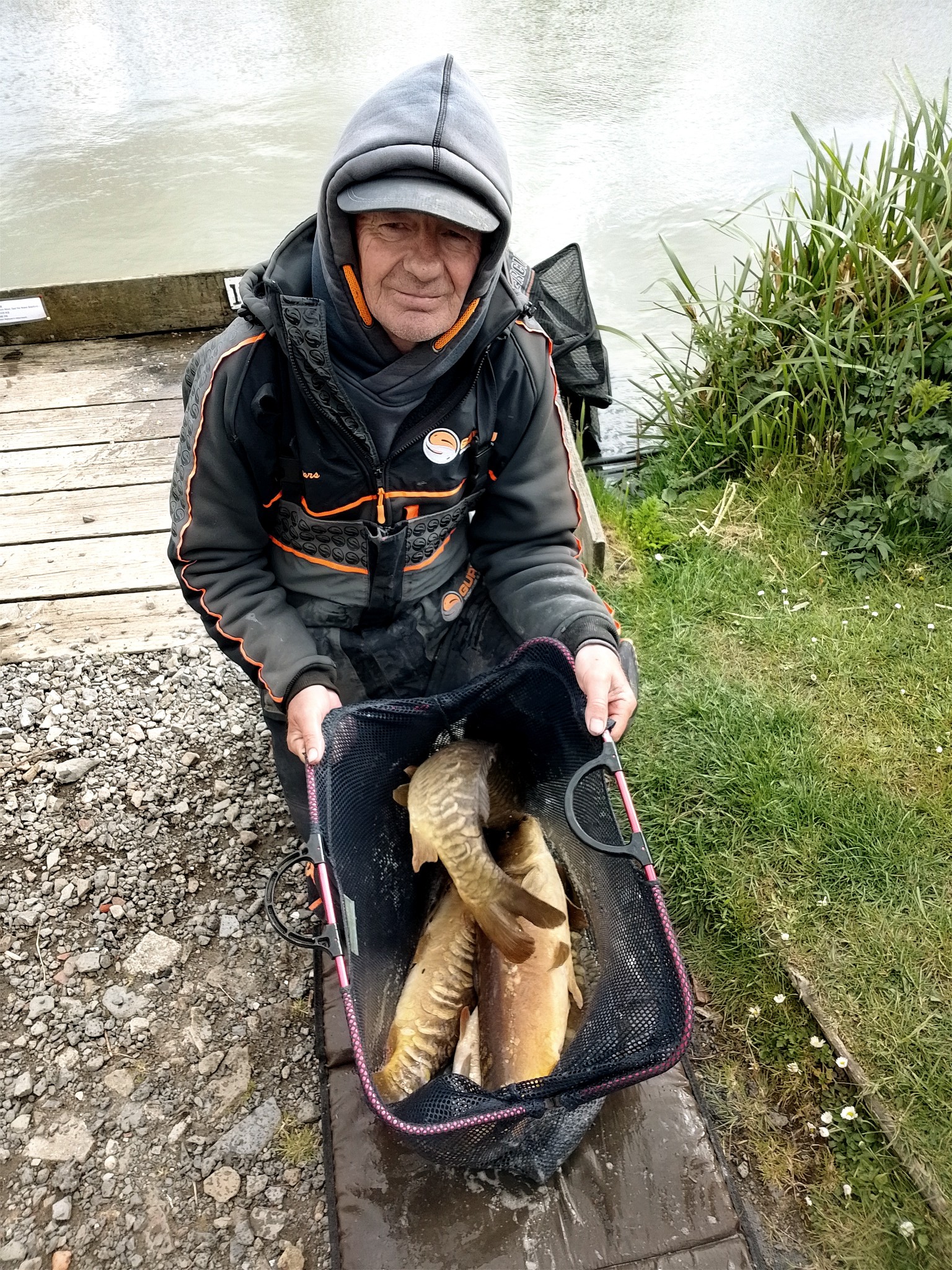
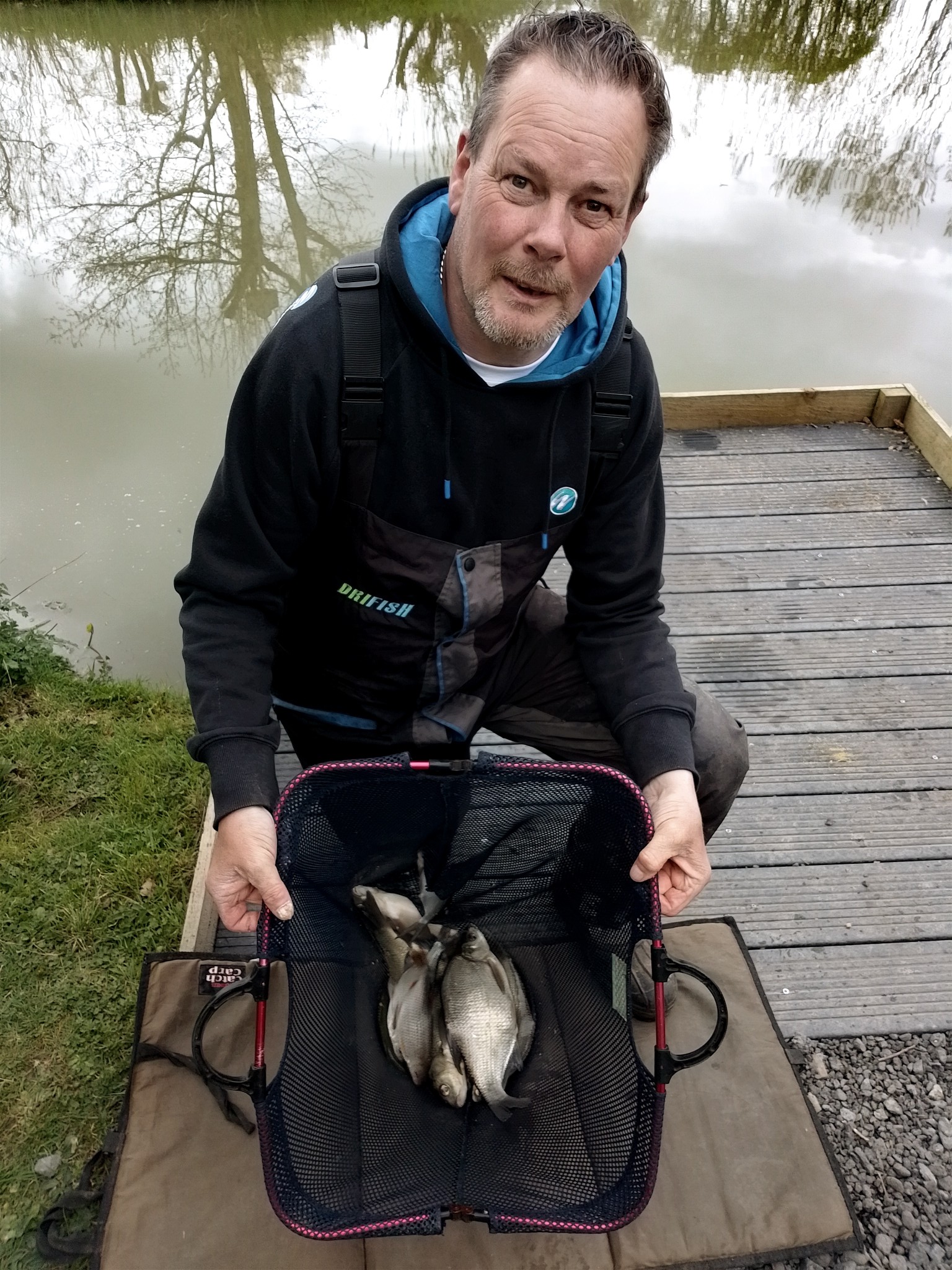
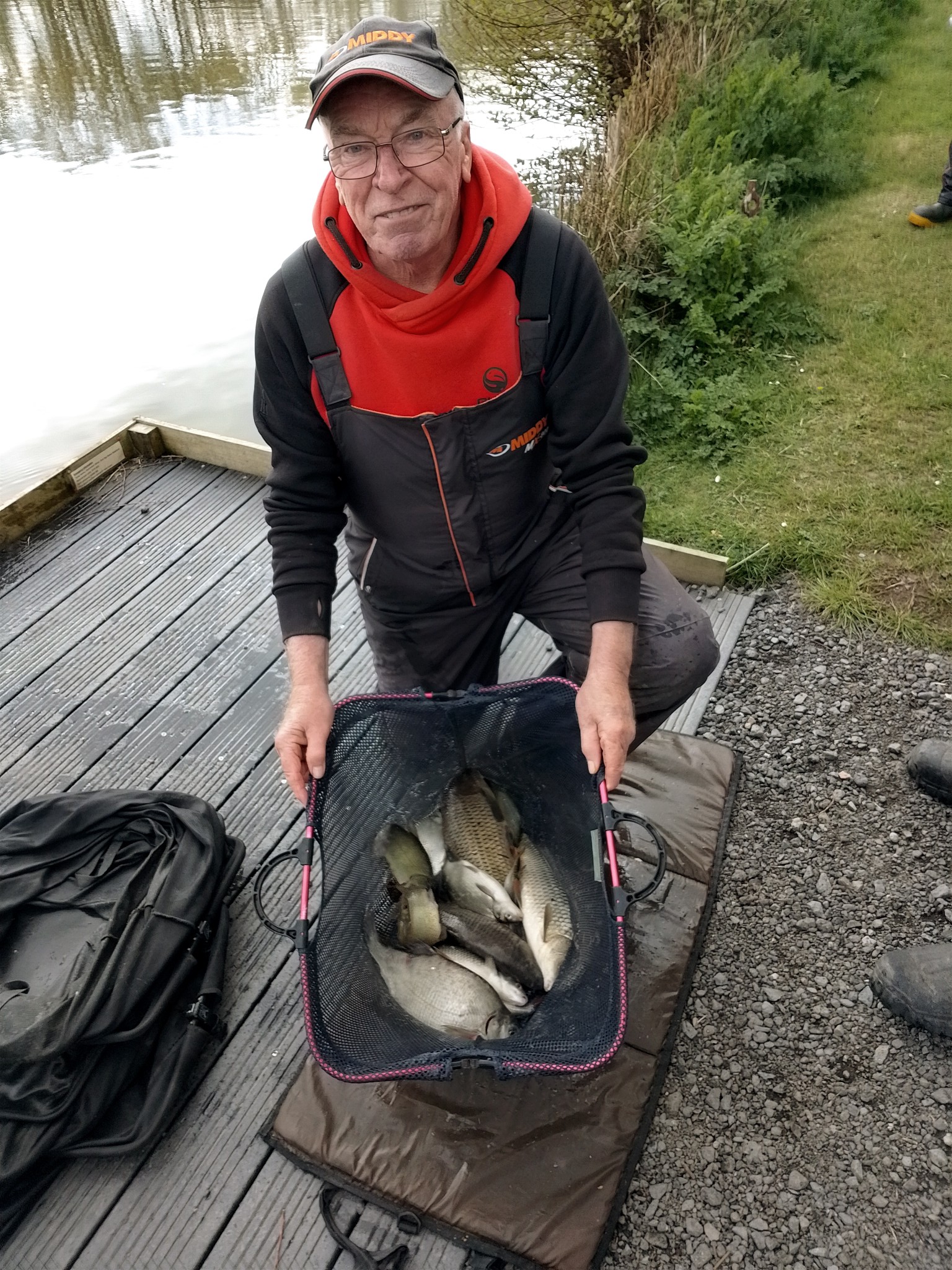
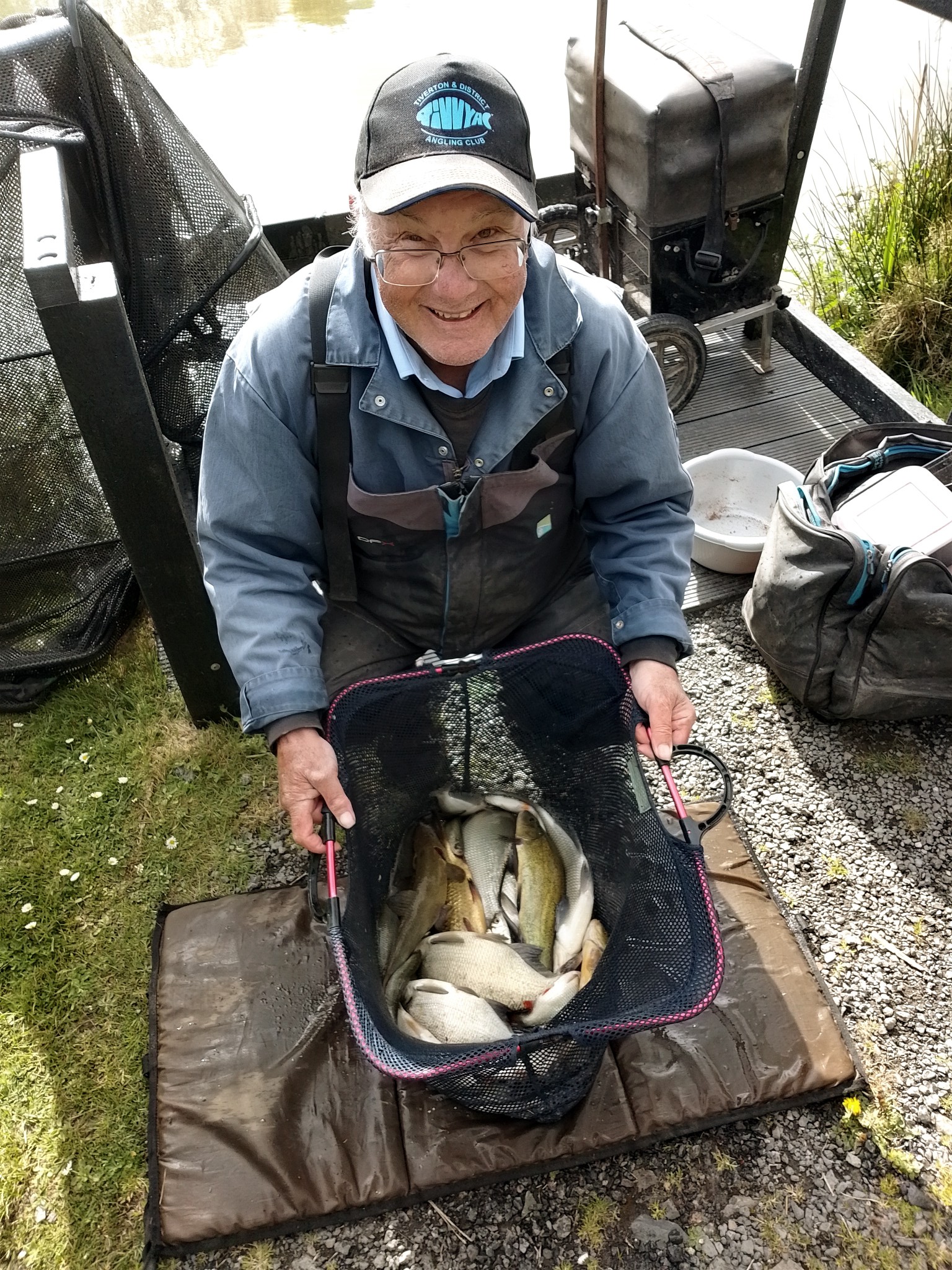
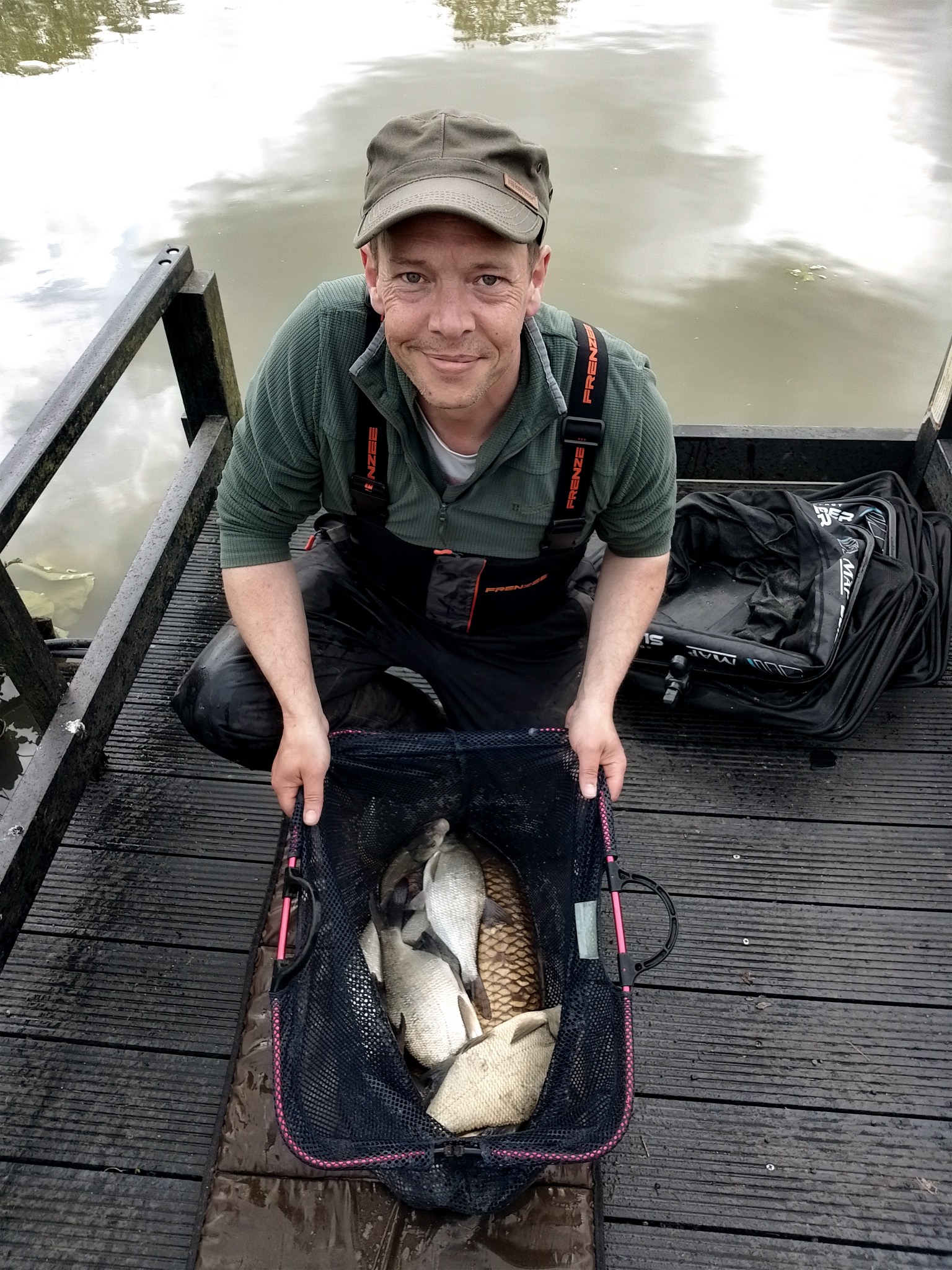
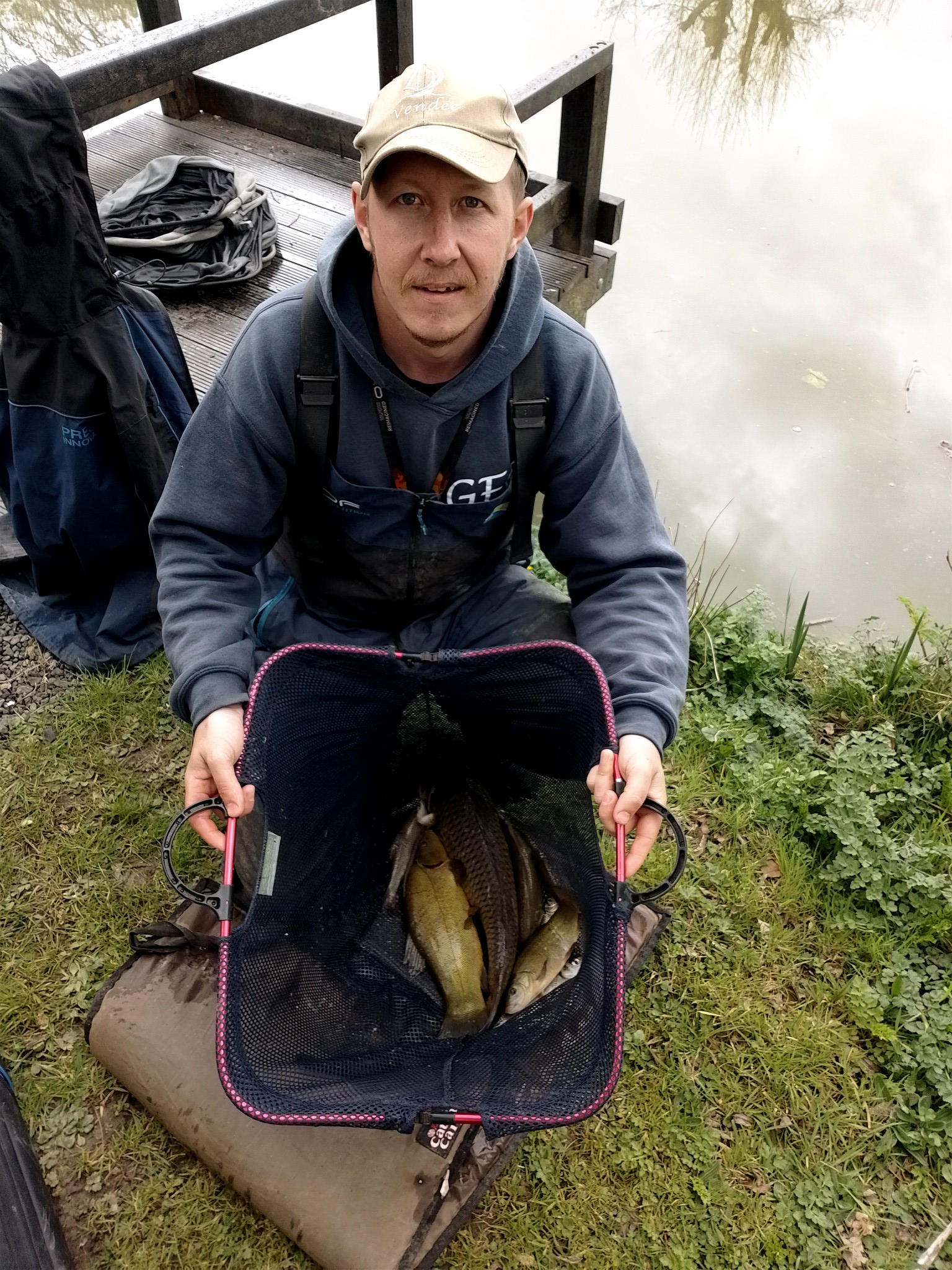
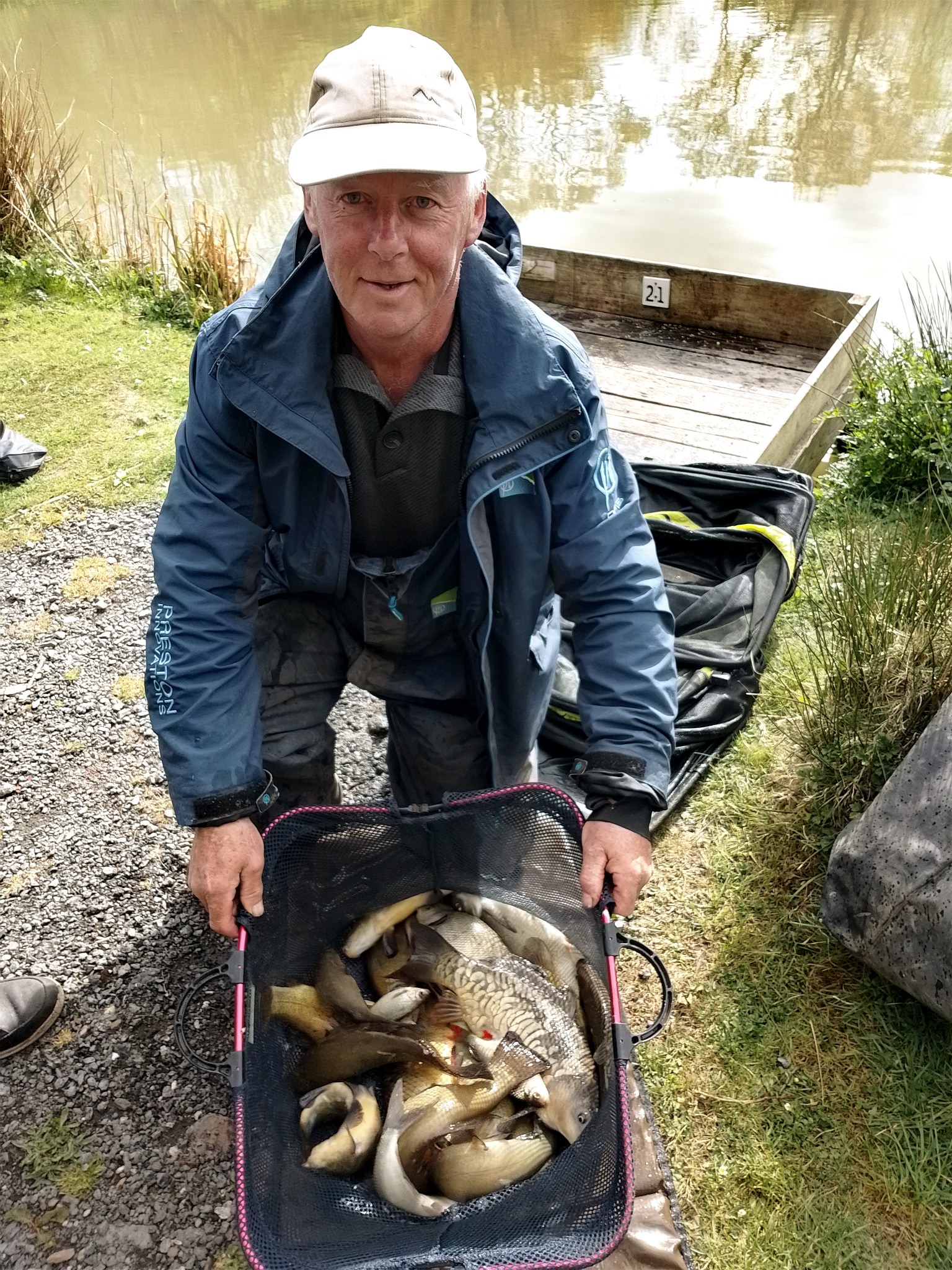


















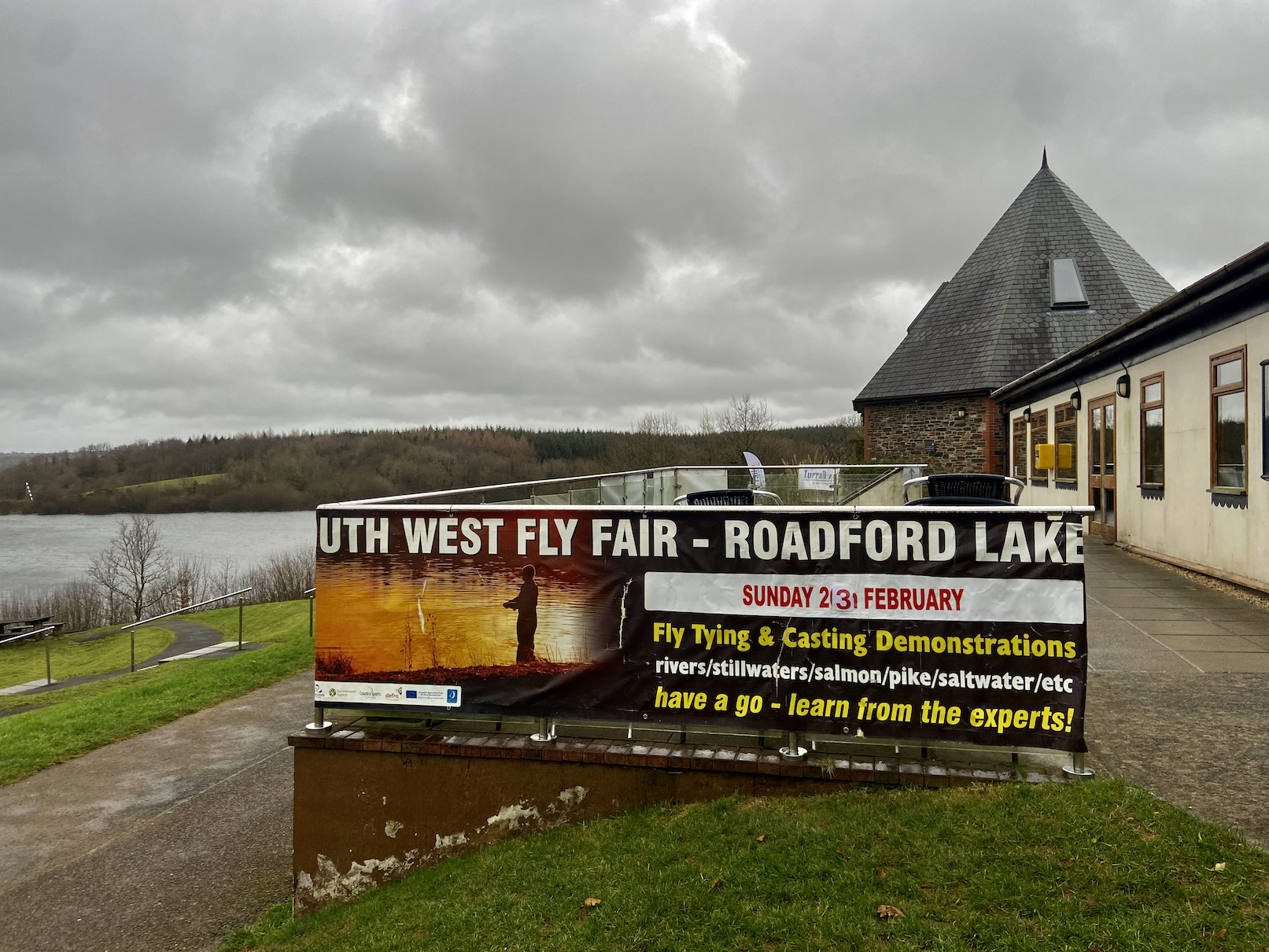
The South West Fly Fair hosted by South West Lakes Trust and held at Roadford Lake has become a popular fixture in the West Country angling calendar and is seen by many as the curtain raiser to the season ahead. I have been attending the event for many years and always enjoy the opportunity to catch up with familiar faces and forge further connections within the fly fishing community. The main sponsors for this year’s event were once again Turrall, Chevron Hackles and Snowbee.
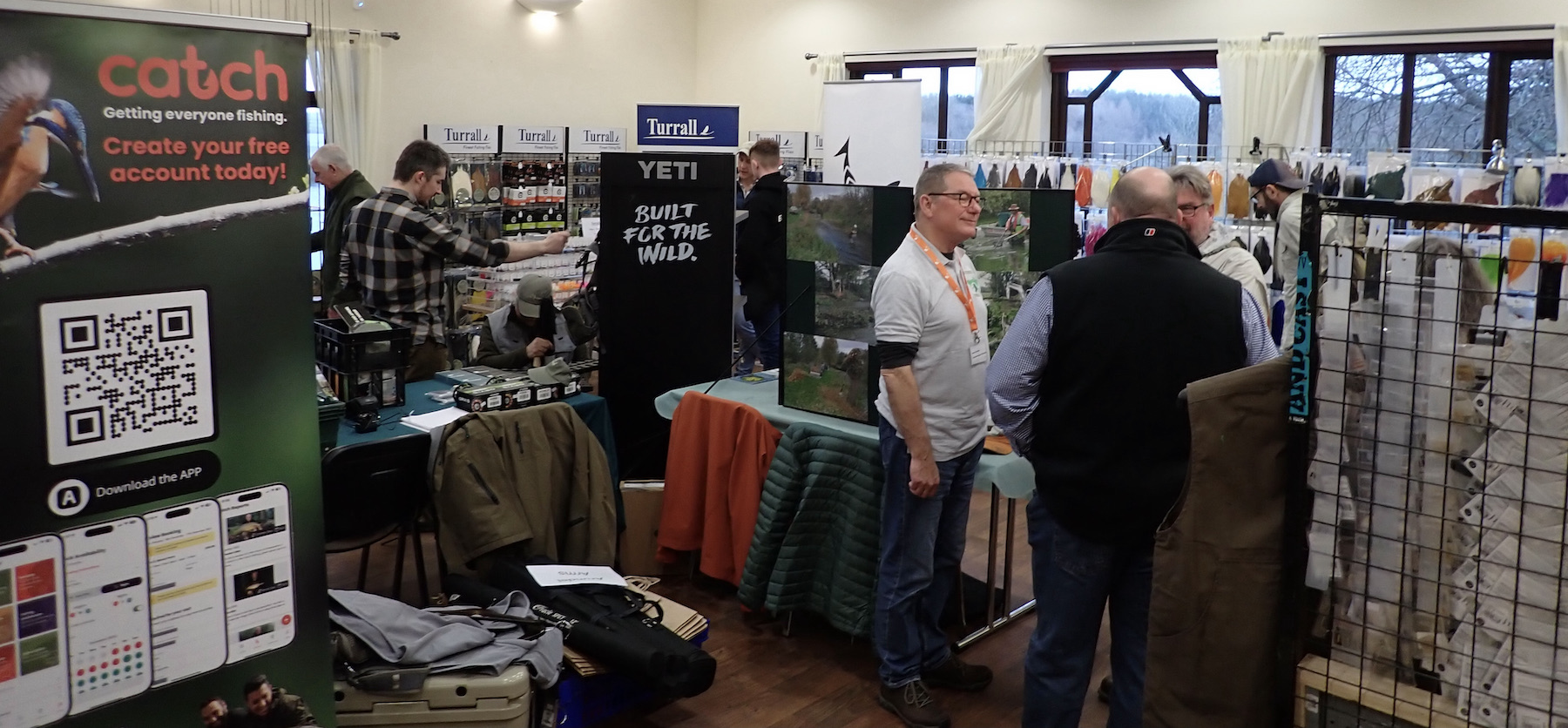
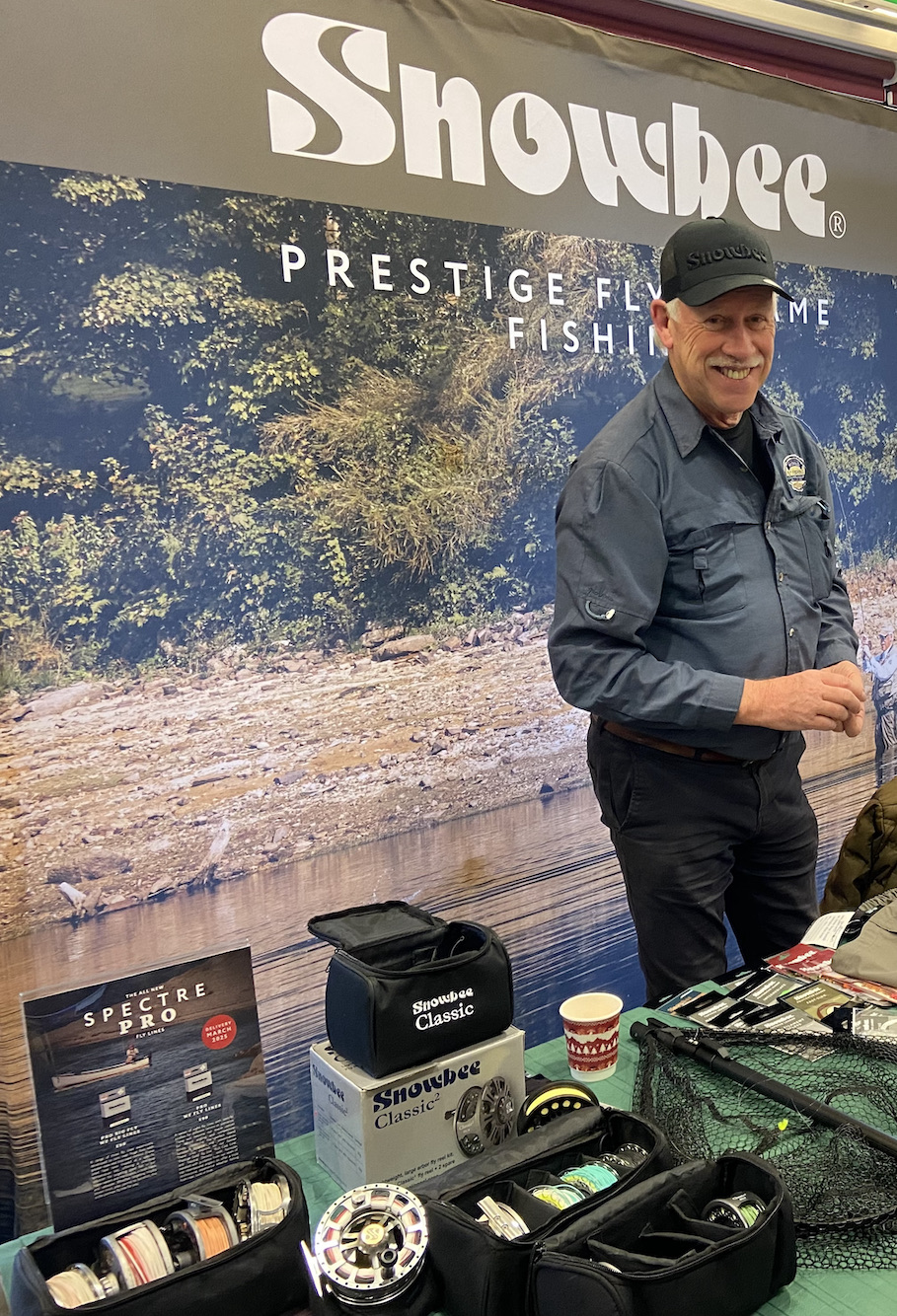
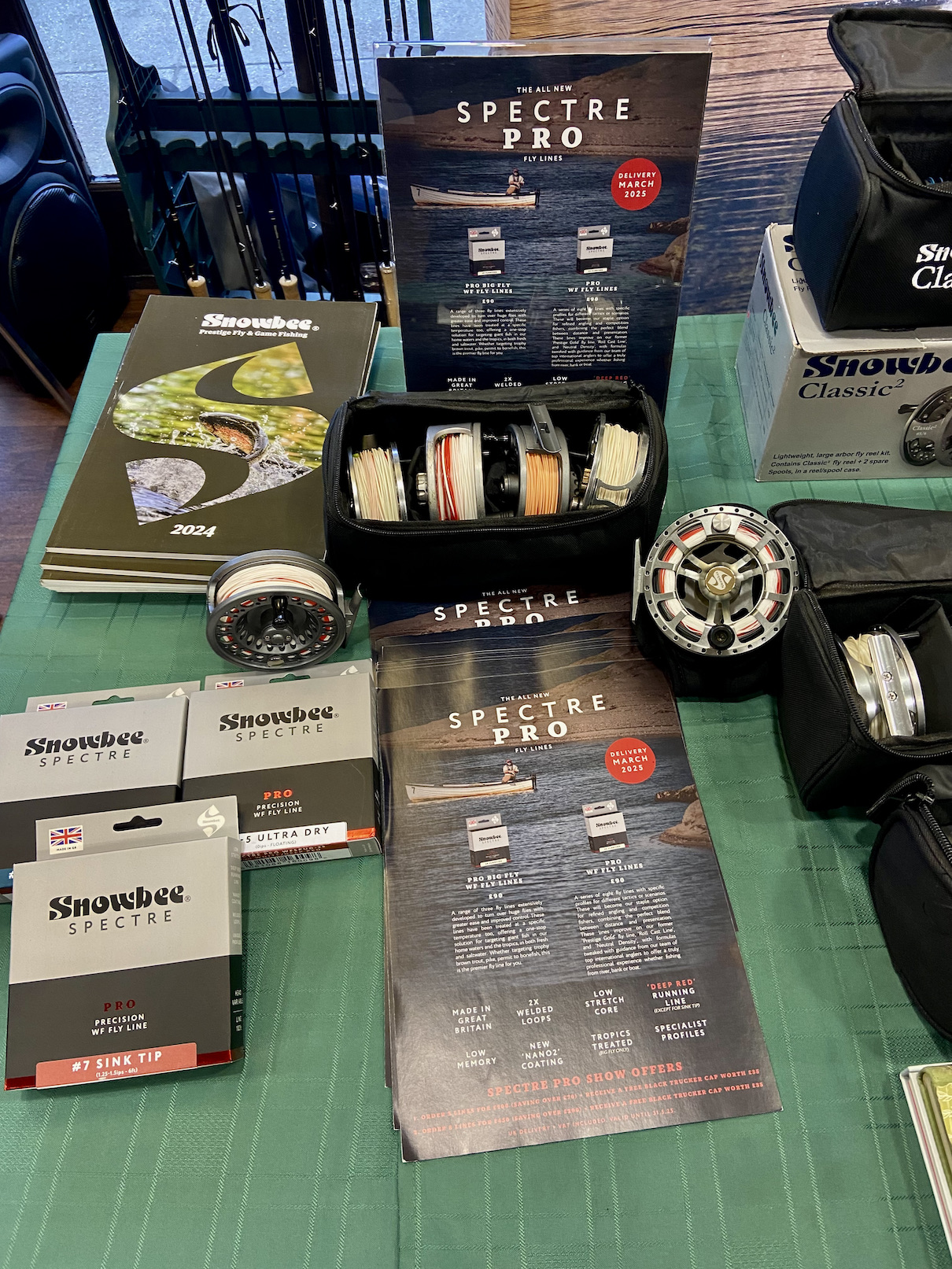

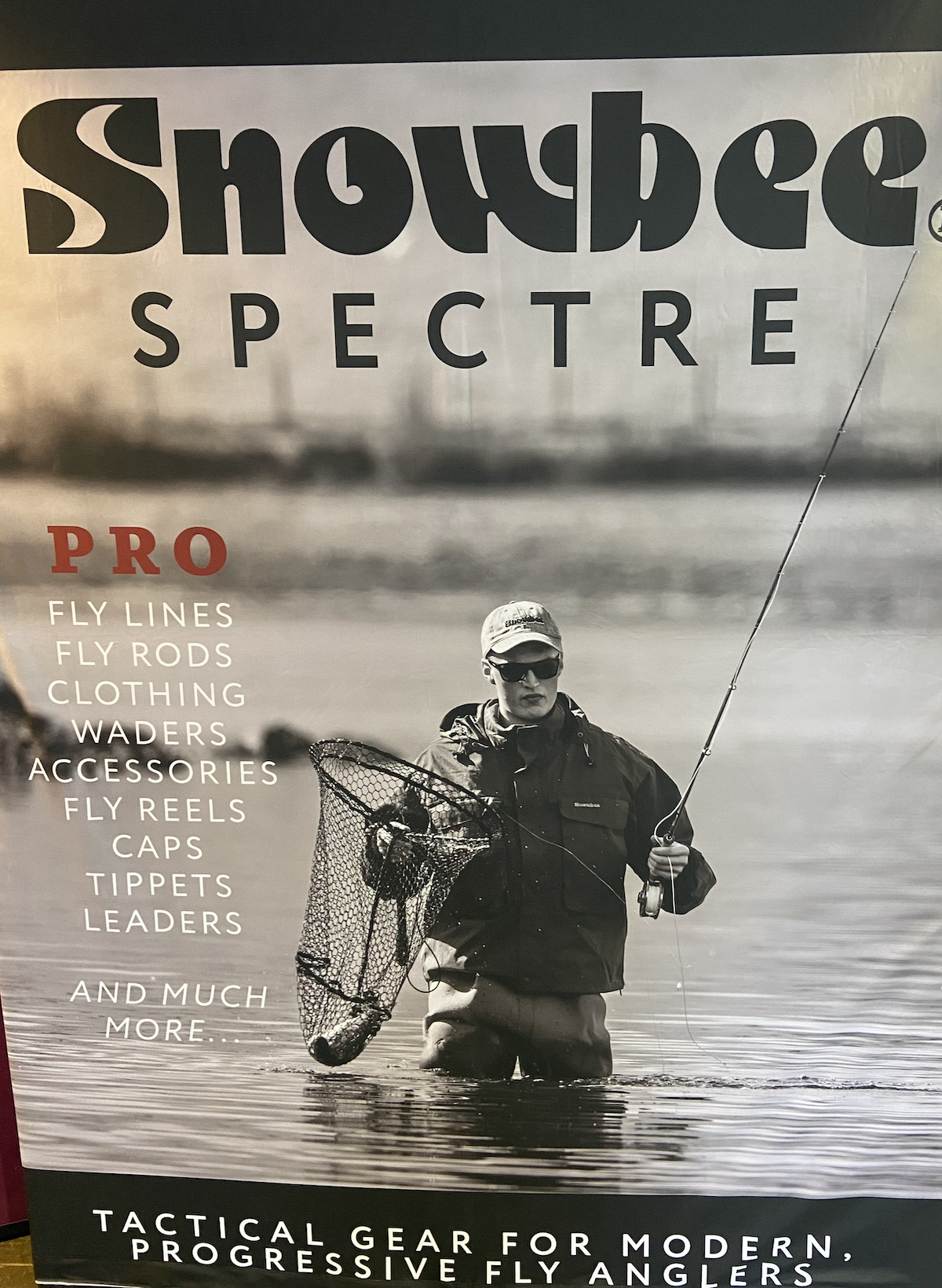
Gale force winds and heavy rain failed to dampen enthusiasm as keen fly fishers gathered around the many stalls within the spacious conference rooms. There was an impressive array of tackle, clothing and fly tying equipment on display along with representation from local angling clubs, associations and the hospitality sector. As always river conservation was high on the agenda with a real passion for the preservation of our rivers and wildlife within.
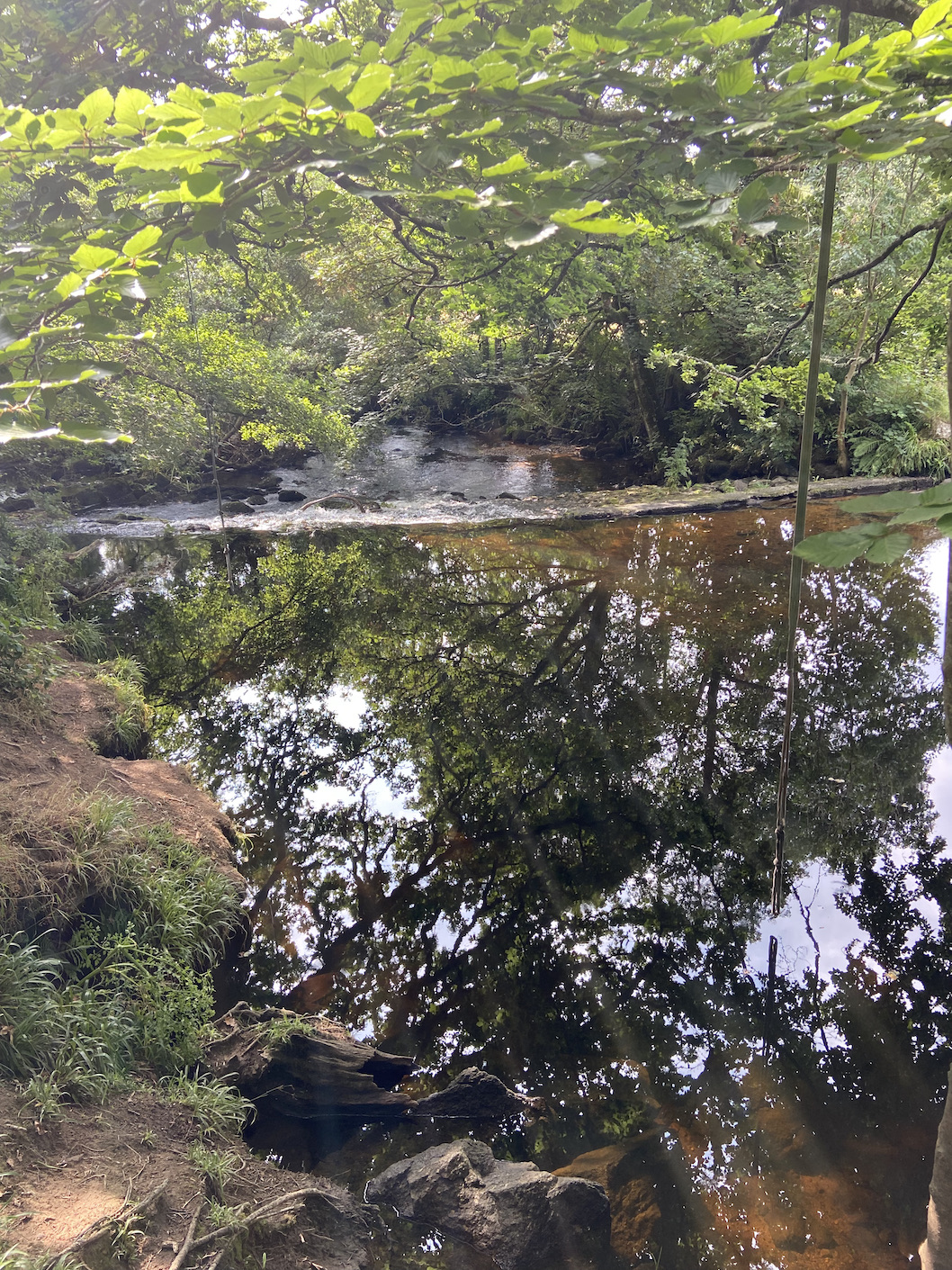
The River Teign Restoration Project that brings a story of salmon decline and the efforts to restore the river to its former glory was of particular interest to myself and I look forward to reading all about it in ‘The Teign Book’ written by local angler Neil Yeandle. The book now sits on my desk ready to read over the coming weeks. Glancing through its pages I can already see that it is an evocative story of catastrophic decline and sterling work to restore habitat that brings hope for the future.
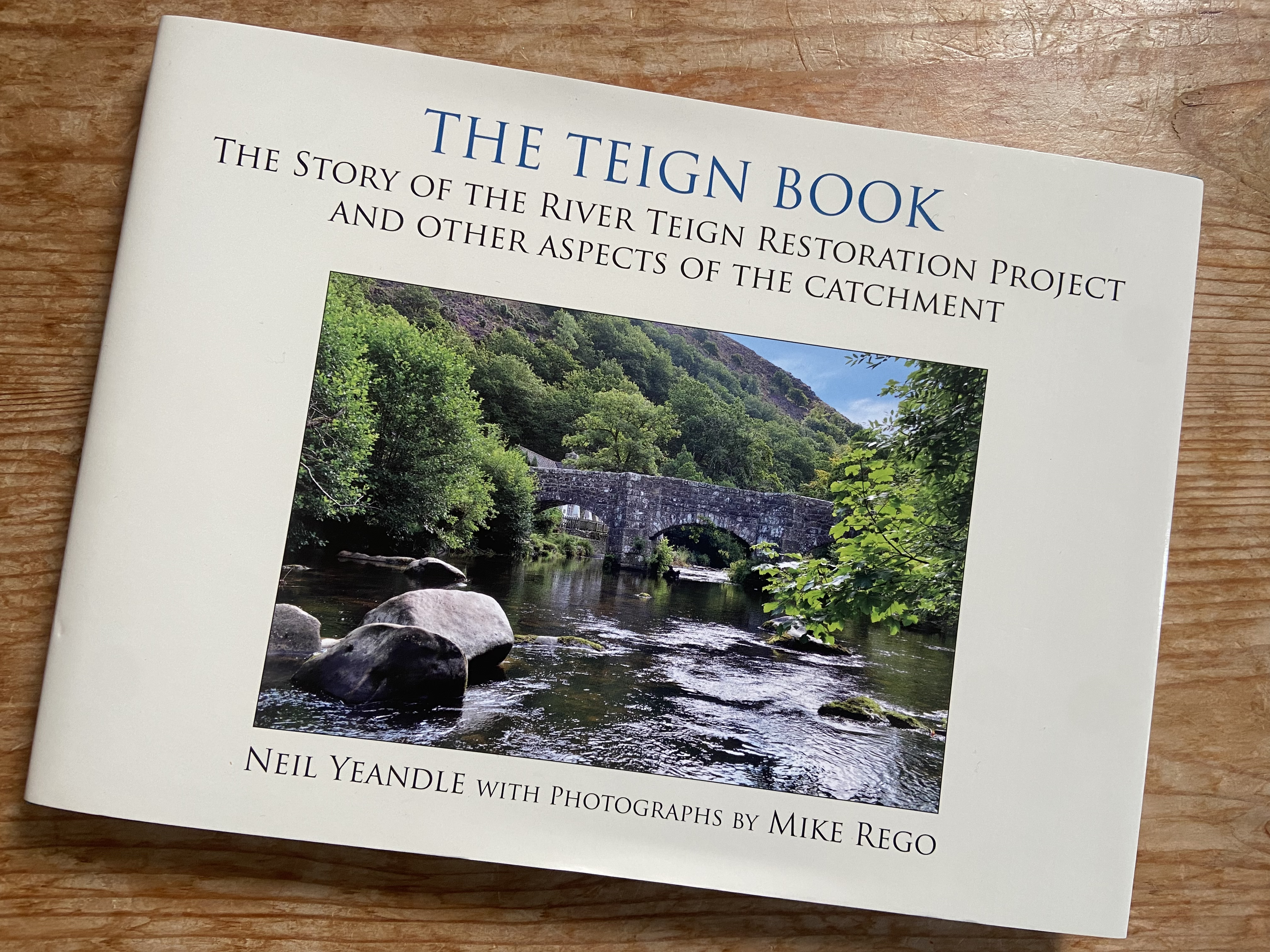
Former head of angling at South West lakes Trust Ashley Bunning was present with South West Waters Invasive species team highlighting the threats posed to our environment and native species. https://www.southwestwater.co.uk/about-us/latest-news/tackling-invasive-non-native-species-to-help-protect-our-wetlands
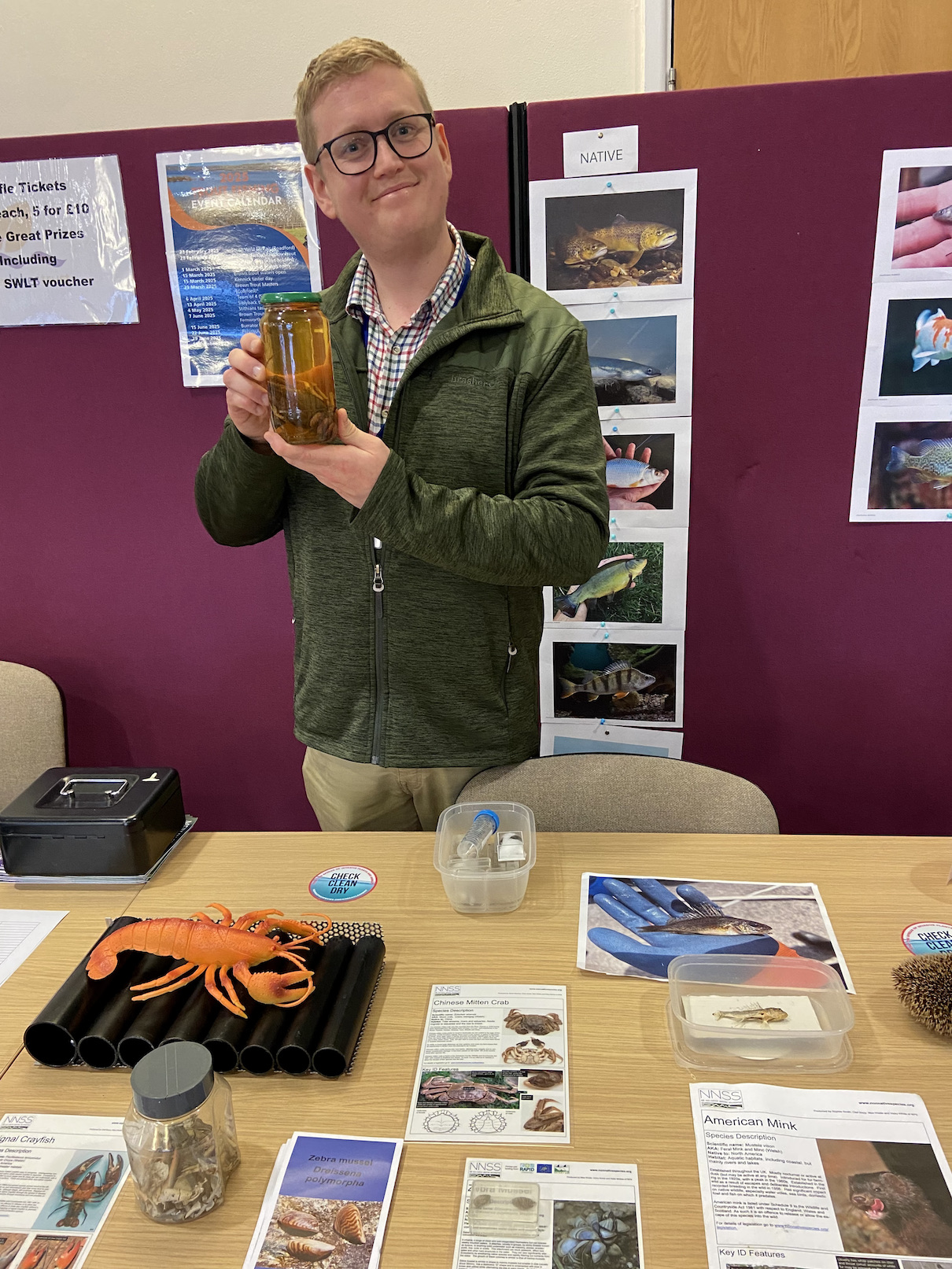
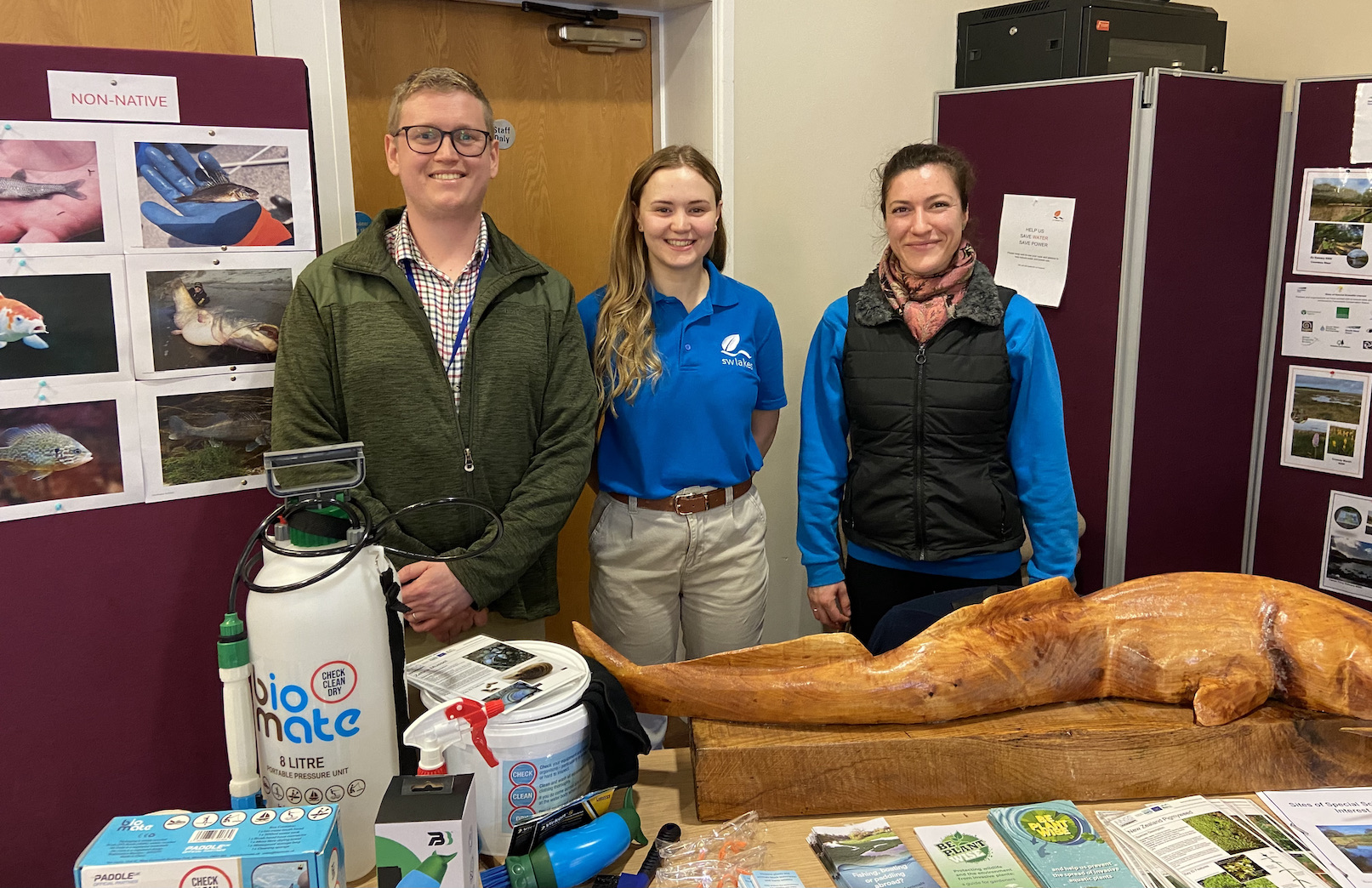
Talking with various organisations it would seem that 2025 is set to be a busy year for the regions anglers with plenty of events planned.

The Arundell Arms is set to host several events over the coming months starting on March 5th with a grayling day and showing of Jack Perks acclaimed film ‘Britain’s Hidden Fishes’. This Country Hotel steeped in angling history since 1932 has a sound future with the vastly experienced David Pilkington working with new fishing guide James Christoforou.

Leon Fisher is the new head of fishing at South West Lakes Trust and welcomed well respected angler and long-time supporter of the show Charles Jardine to open proceedings. Shortly after Charles took to the wet and windy outdoors to demonstrate the art of fly casting. Charles as always wielded his fly rod with deceptive ease to propel the fly line into the gale force gusts whilst casting valuable advice to the anglers sheltering in the porch area.
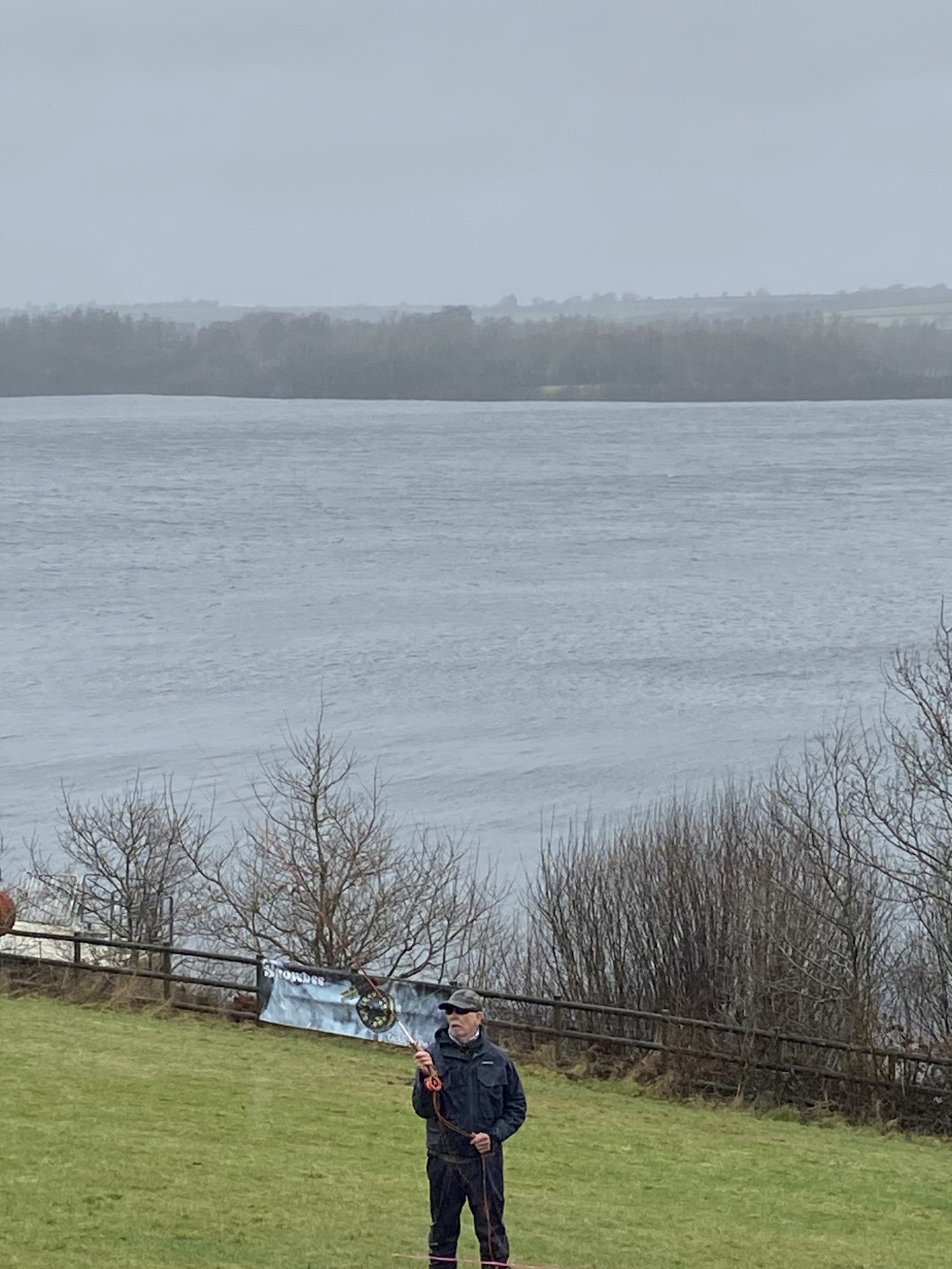
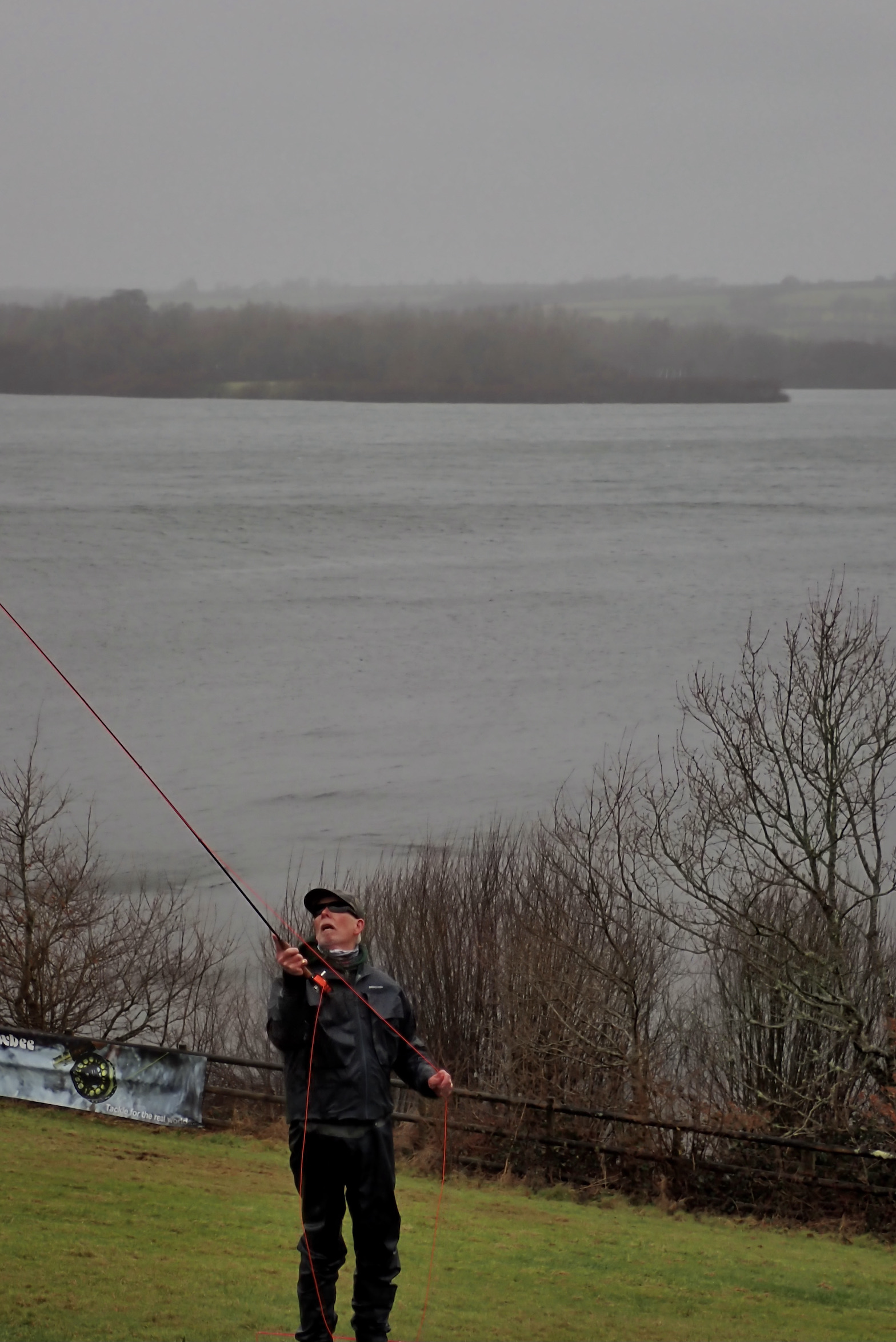
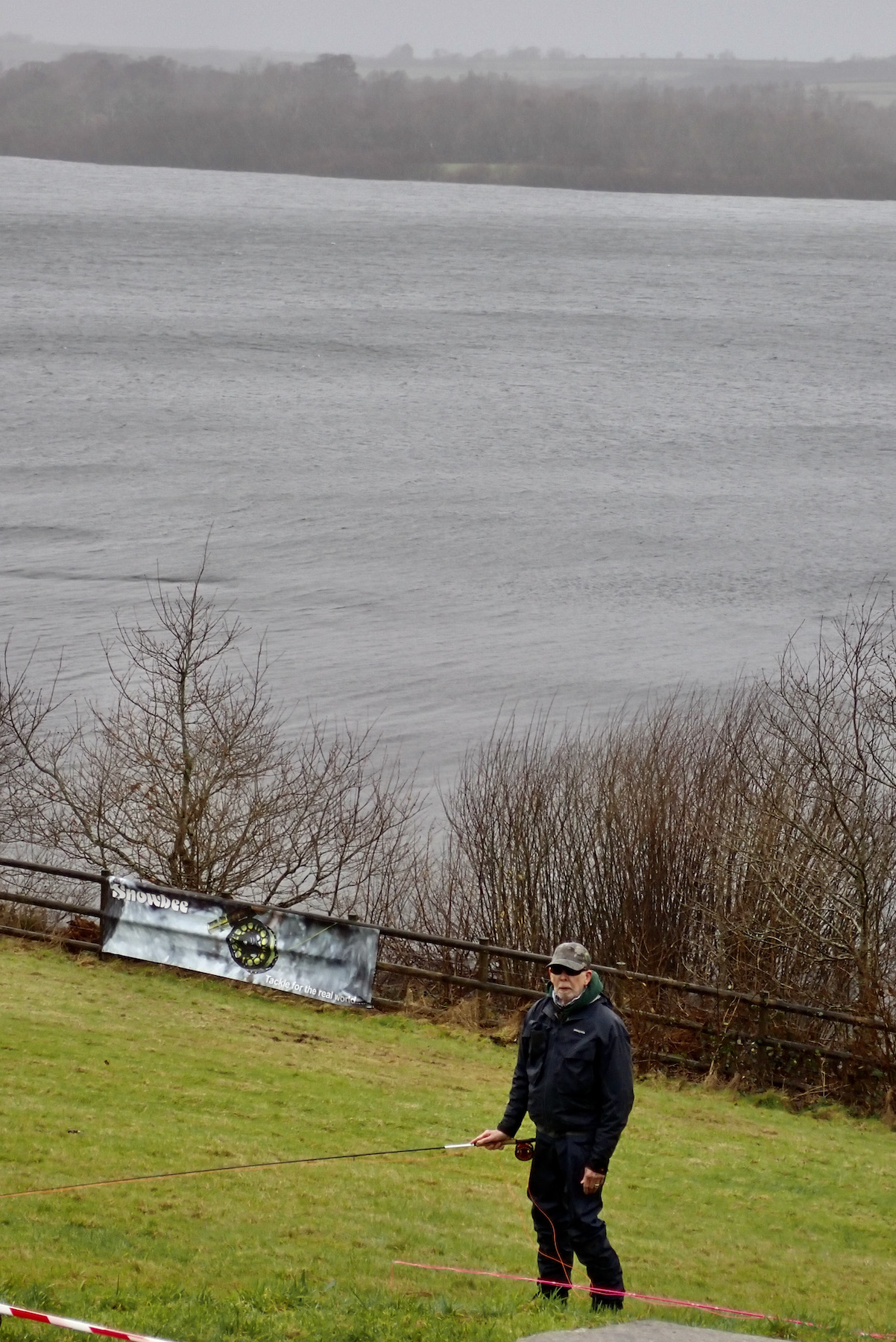
Charles stressed the importance of stance and how to hold the rod pointing out that these basic foundations are the key to consistent delivery of the fly to the target. A very important point is that protective glasses should be worn at all times. It was refreshing to hear Charles reflect upon the design of rods and their price tags. Whilst top of the range rods are a joy to use the actual performance is largely in the hands of the angler.
https://www.hanak.eu/en/about-us/company-hanak

I chatted with Local angling guide Lewis Hendrie who was on the Hanak stand with their team of dedicated fly anglers. Lewis has his routes on Exmoor having grown up in the village of Exford learning his art on the wonderful rivers and streams that cascade to Devon’s North and South Coasts. Chatting with Lewis he pointed out that he had featured as a rising star in the Fly Fishing world in my North Devon Journal Angling column twenty five years ago. It is the mixing and mingling with fellow anglers that is at the heart of this event. Whilst fishing is the vital link conversations often flow far wider contributing to a healthy community.
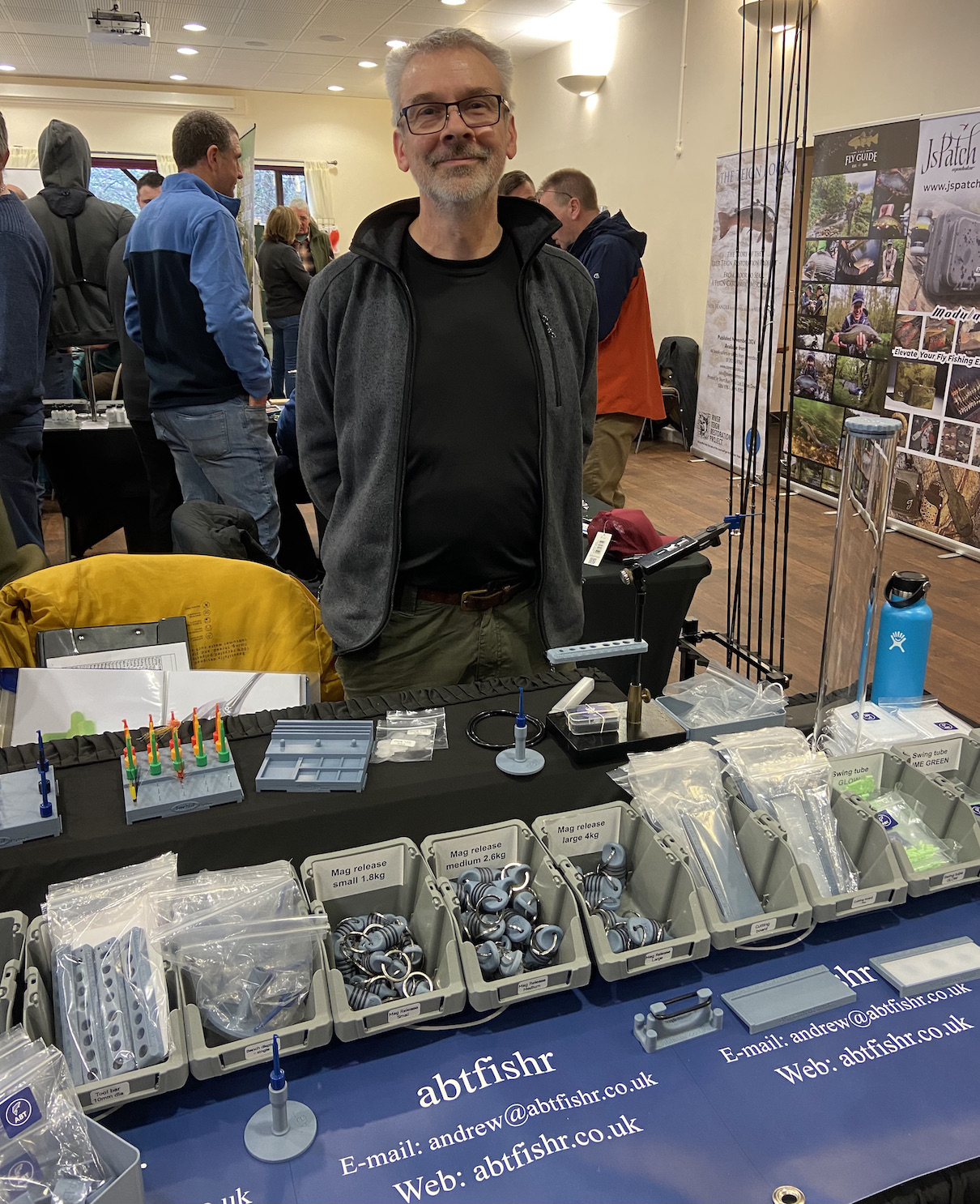
Andrew Beattie of https://abtfishr.co.uk
Always interesting to see new and Innovative products ABT have a range of robust products for fly fishing and other disciplines designed by Andrew. The LRF Critter cradle with disgorger caught my eye as a useful tool for the growing band of sea anglers exploring the fascinating miniture world of species hunting.
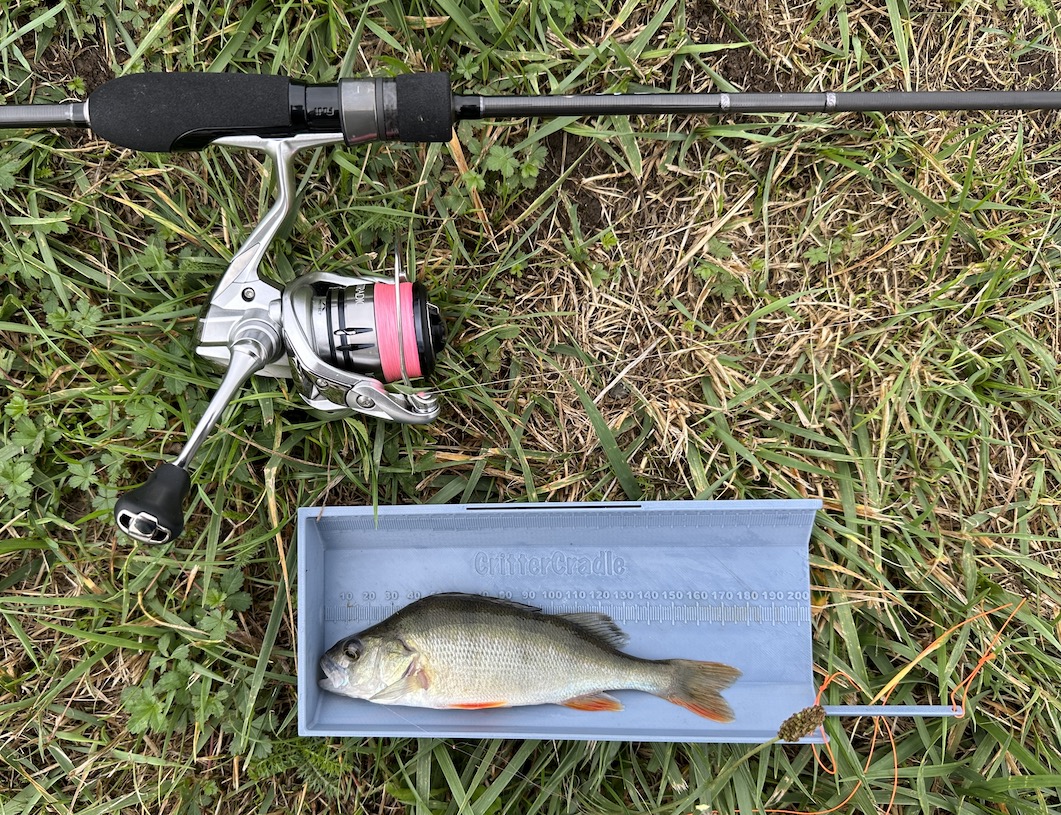
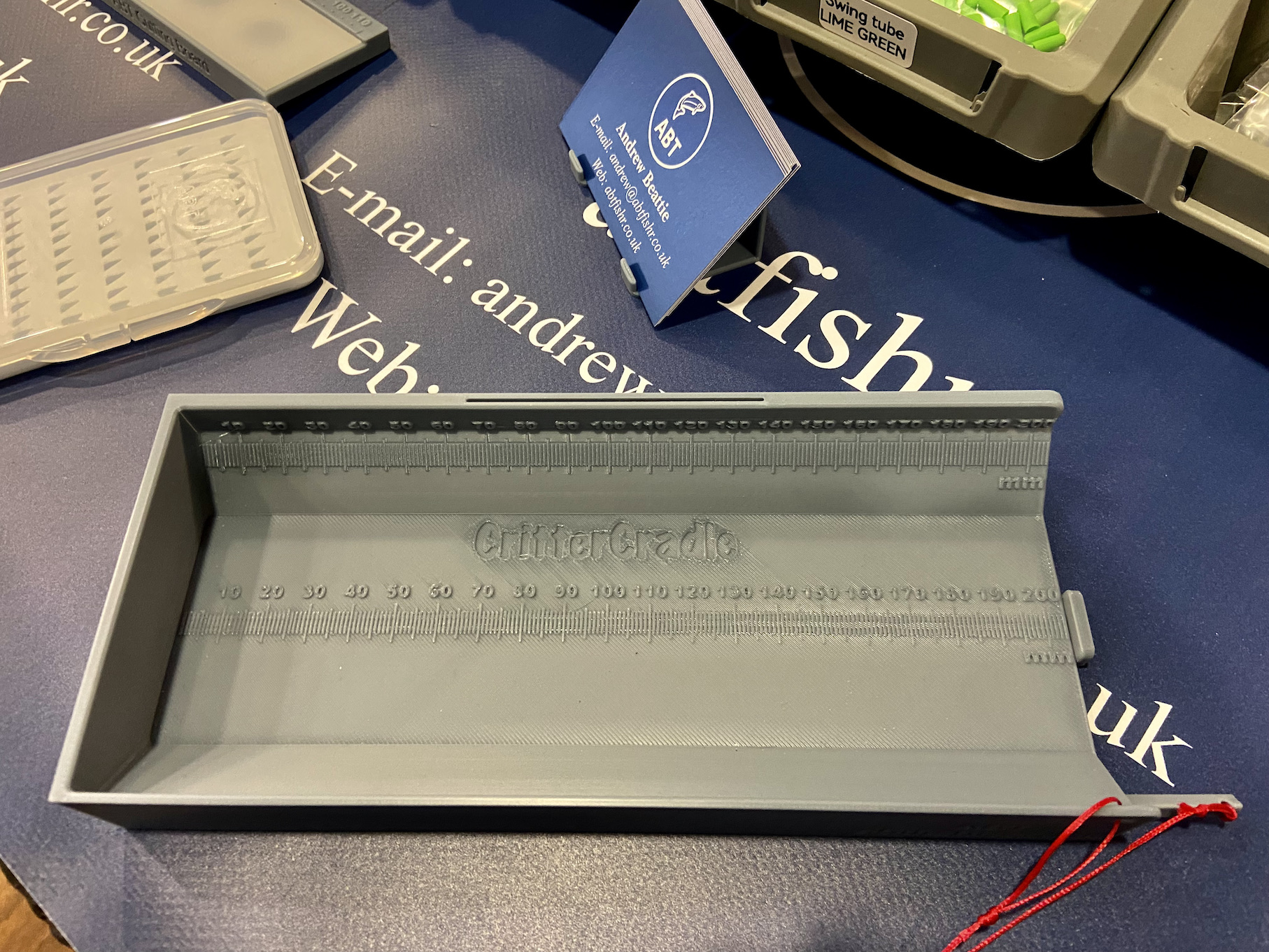
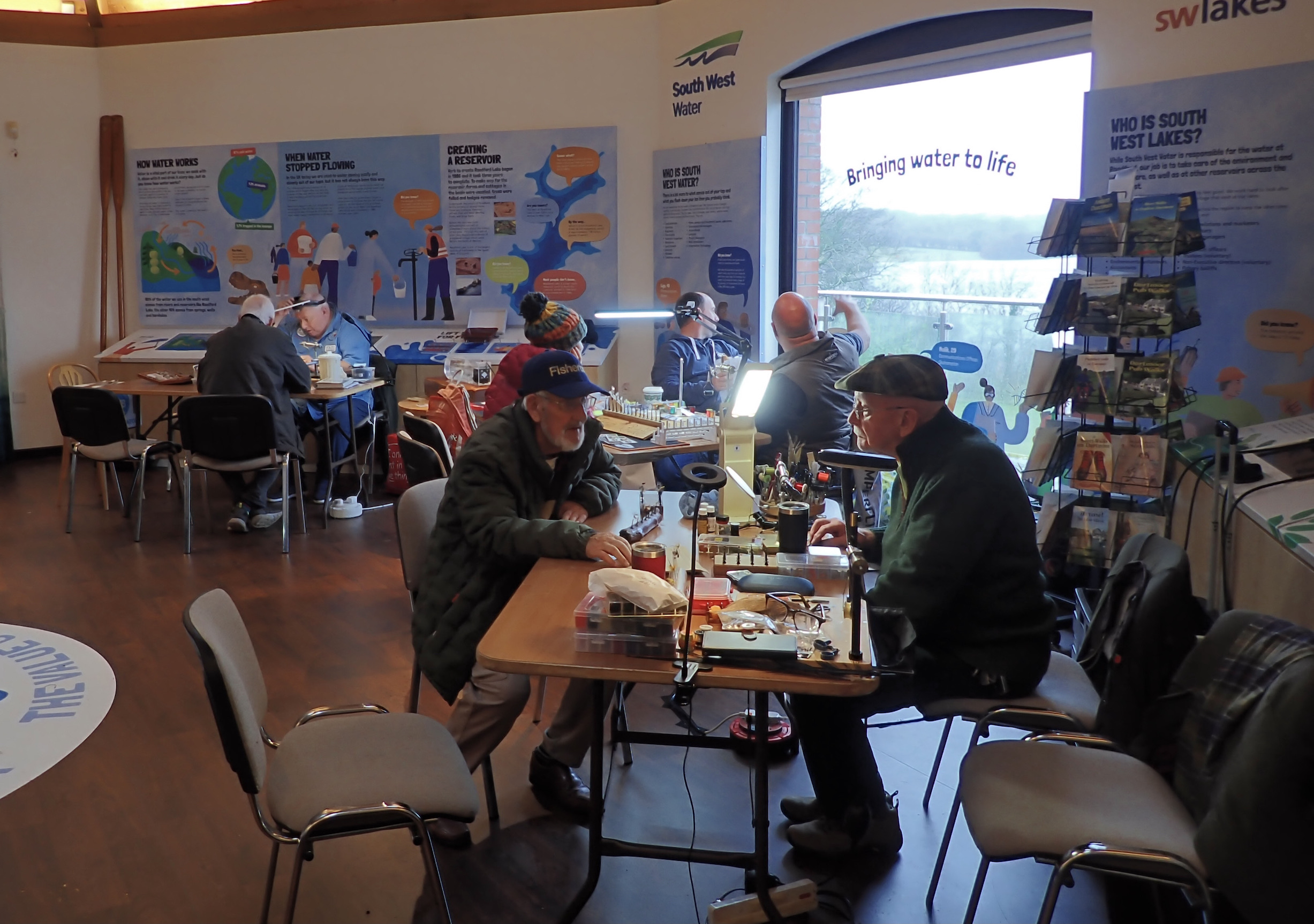
Fly tying features extensively at the fair those present creating a wonderful range of flies, lures and nymphs to tempt a wide range of species in many waters. Tiny dry flies and nymphs to temp wily wild brown trout and grayling. Gaudy lures for freshly stocked rainbows and those big mouthfuls for ferocious pike. Fly tying can be a hobby itself filling those long winter nights spent dreaming of those warmer brighter days ahead.
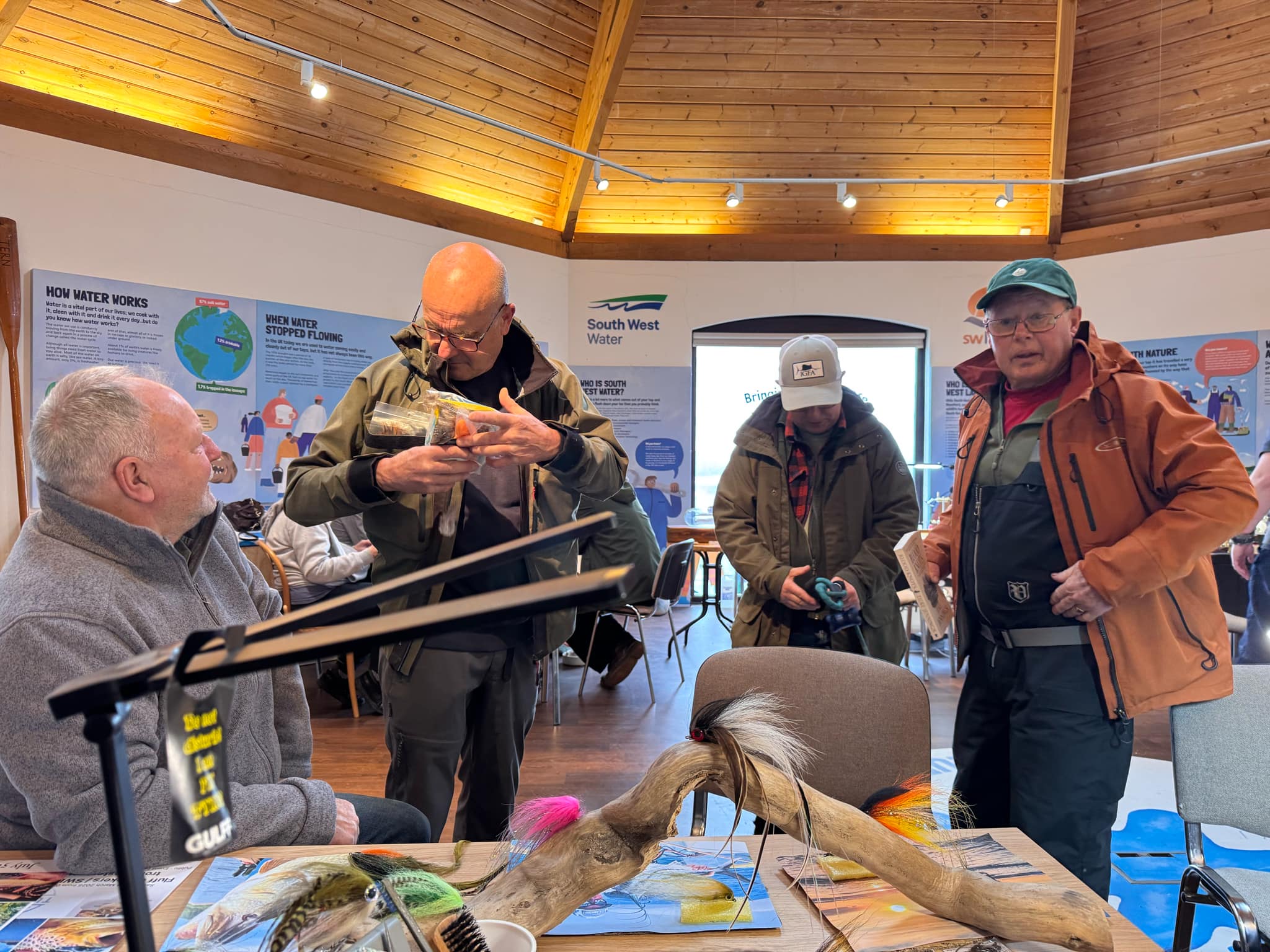
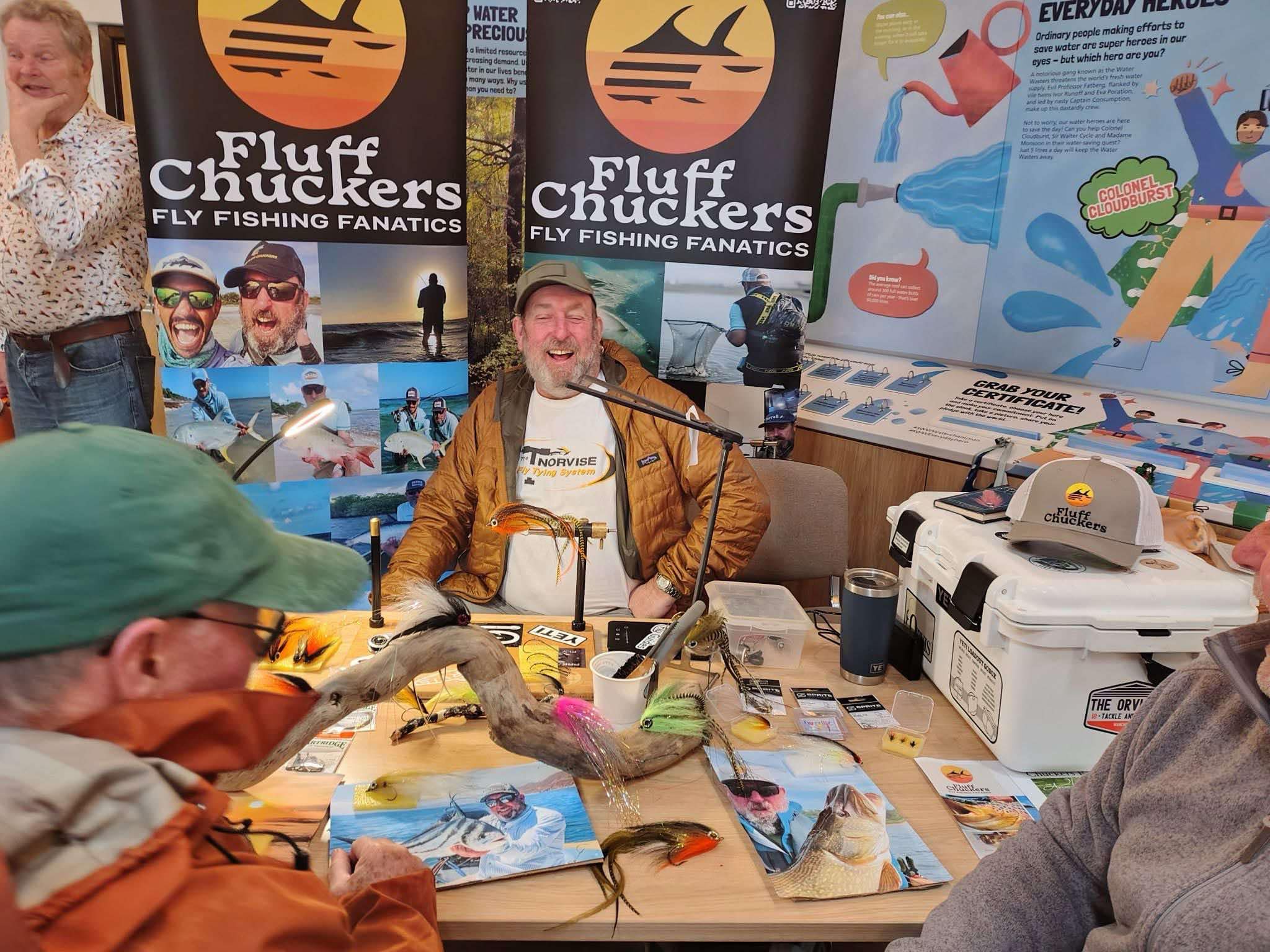
We are very fortunate in the West Country to have a vast range of waters to explore. One of the discussions at the expert forum between Charles Jardine, Rodney Wevill and Gary Champion was the wonderful places that fly fishing takes anglers to across the world. With a vital connection to nature highlighted by the speakers.

I returned home from the fair with my mind buzzing and full of inspiration for the coming season. The value of life and savouring each day and moment emersed in angling and the natural world is always highlighted at these events.
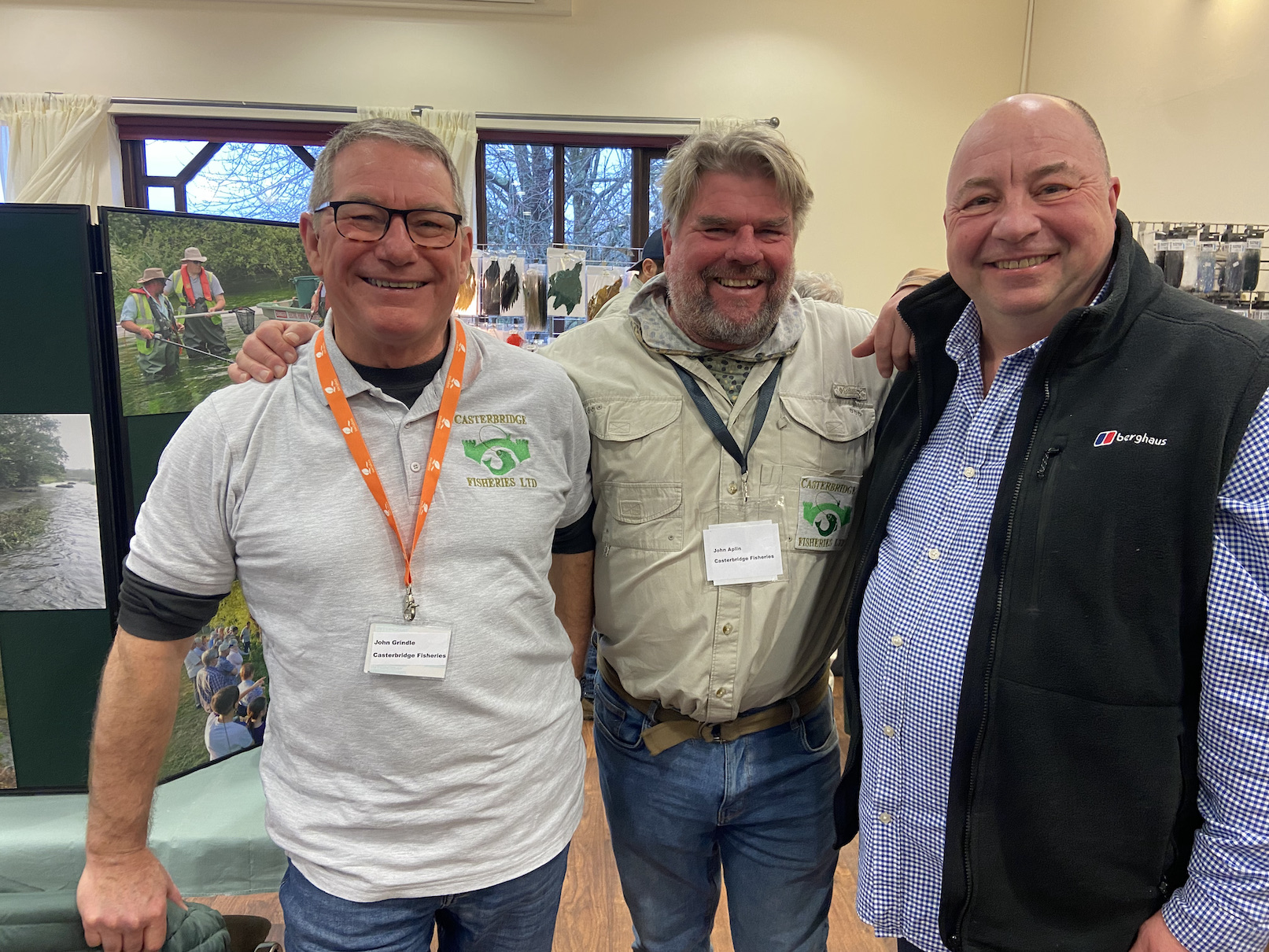
John Aplin (Centre) from Casterbridge Fisheries Ltd

|
Join us at our new premises on 15th March 2025, from 9:30 to 14:30, for an incredible day packed with, demonstrations, expert advice and exclusive open day deals. |
|
We’ll have unbeatable prices not only for Snowbee fly fishing products but also some great deals on carp fishing, spinning, sea fishing, and coarse fishing. |
|
Our carp fishing range includes bivvies, chairs, weigh slings, unhooking mats, and more, plus a huge selection of spinning rods and reels to keep you going. And of course, we have everything you need for fly fishing! |
|
On the day, enjoy fly casting and fly tying demonstrations, get expert advice from our team, and don’t miss your chance to win a brand-new Snowbee Spectre Rod! |
|
Mark your calendar and come join us! |
|
|
|
Additional information coming soon. |

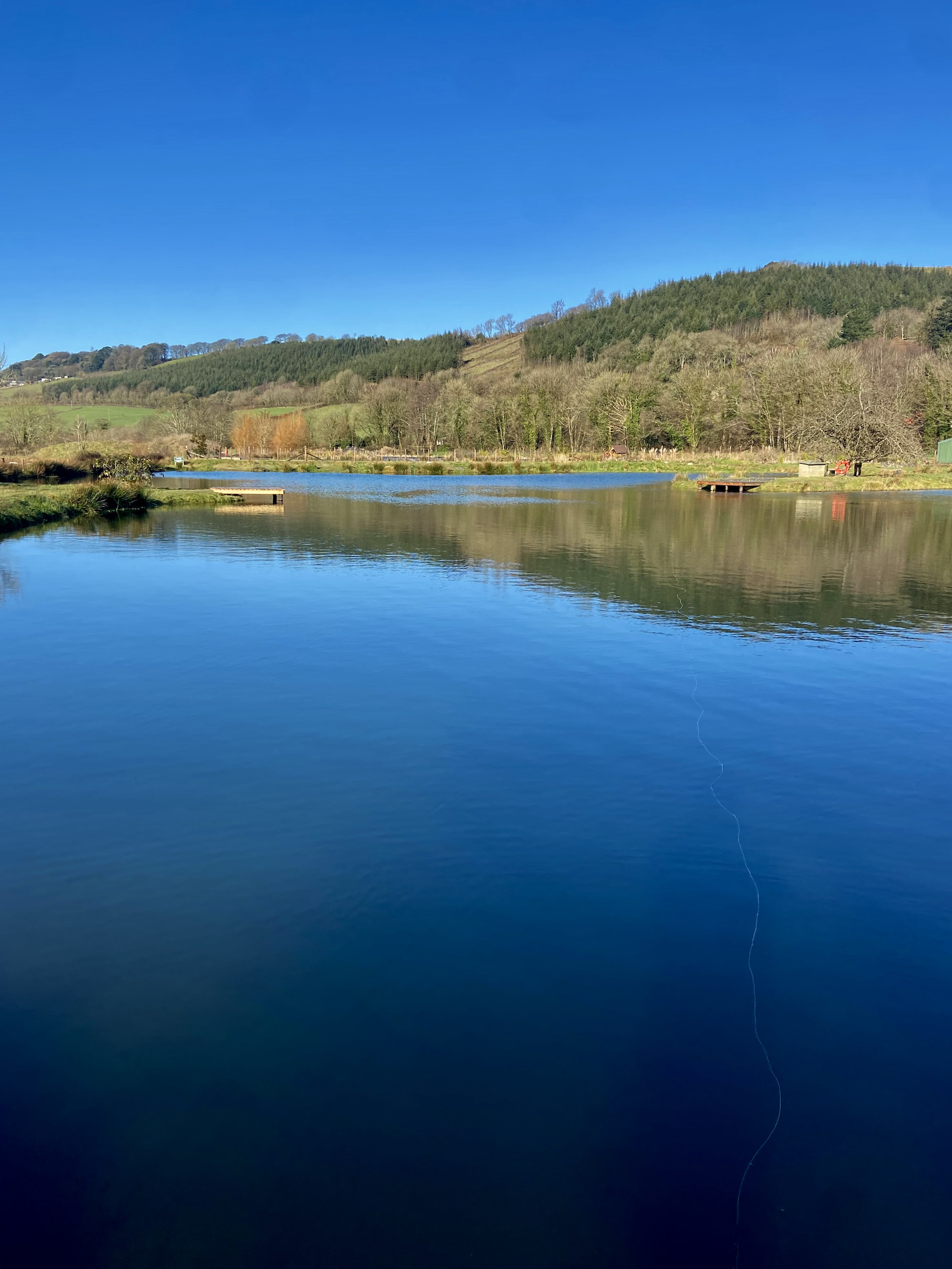
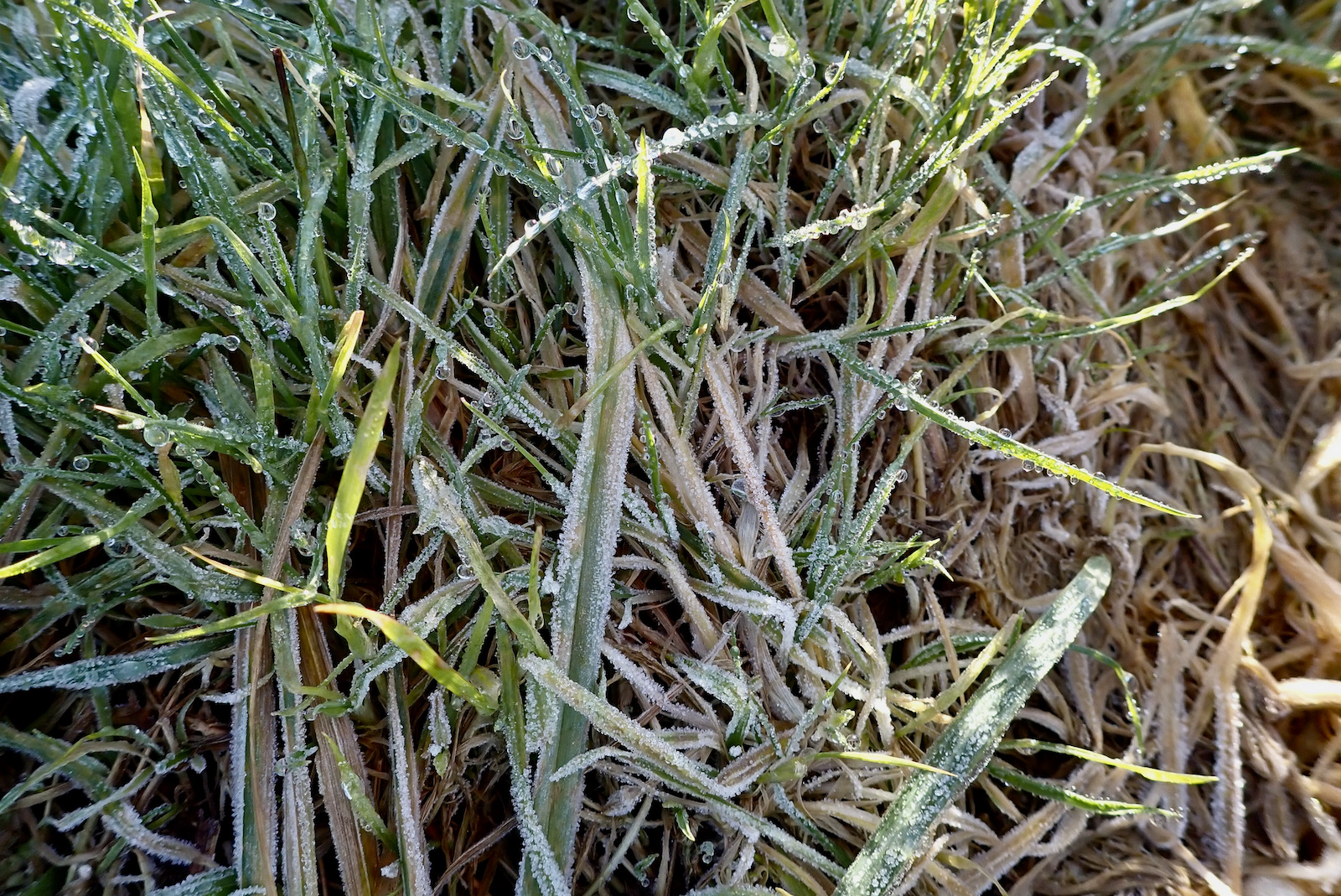
A cloudless blue sky, bright sunshine a cold east wind and frosty margins; conditions that are generally not good for fishing with one exception perhaps? Winter trout fishing in small still-waters is often at its best during the winter months and when few other fish are prepared to feed the inhabitants of these calm waters can provide exciting sport if you get the tactics right.
I arrived at Bulldog Trout fishery for a leisurely start at around 9:30am and after chatting with fishery owners Nigel and Tom Early I grabbed my already set up gear. My standard set up for Stillwater trout consisting of a 10’ 7-weight , Snowbee Diamond 2 Fly Rod, Spectre Reel, XS- plus Spectre Floating Fly Line an 8lb b.s Fluorocarbon leader and an Olive damsel nymph.
A pure white egret glided close by alighting upon the bare branch of a riverside tree. Buzzards were gliding high above the valley in the vivid blue sky rekindling memories of the osprey I had seen at the fishery last Spring.
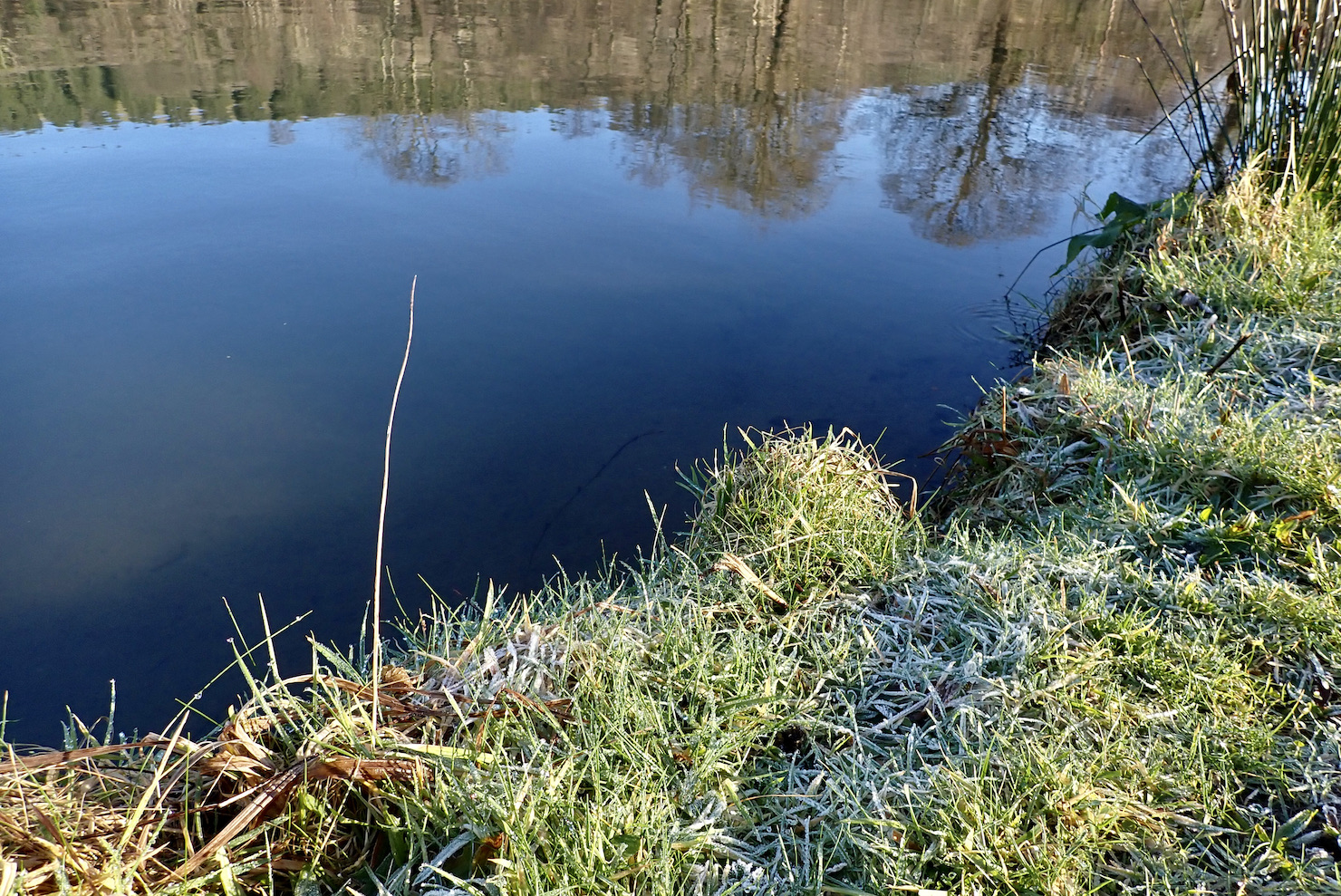
I walked the bank peering into the crystal clear water hoping to spot a trout in the margins. I chose a platform that allowed me to put a line out onto water without casting my shadow. I expected a take at any moment but the trout proved elusive as I explored various swims around the lake.
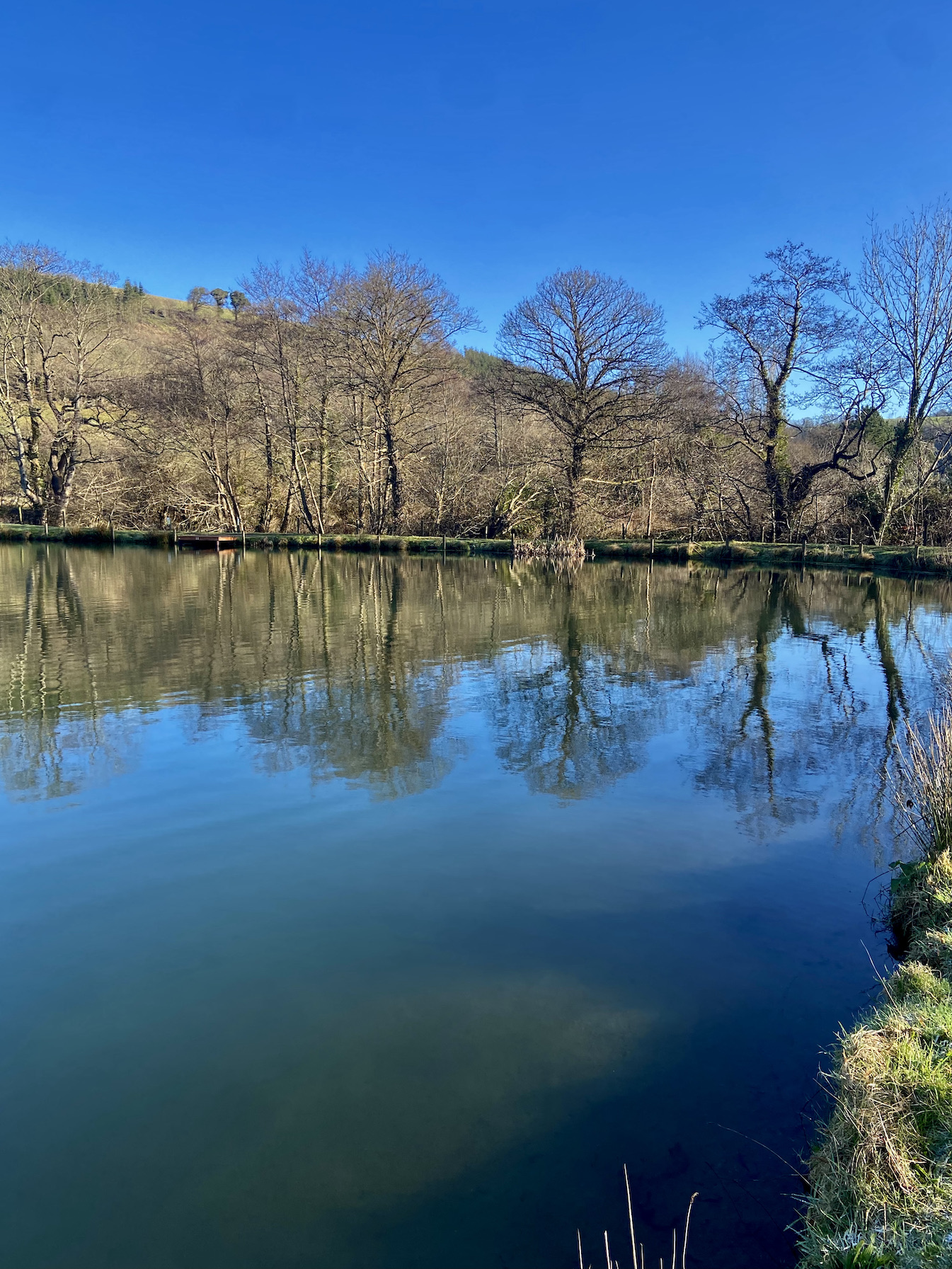
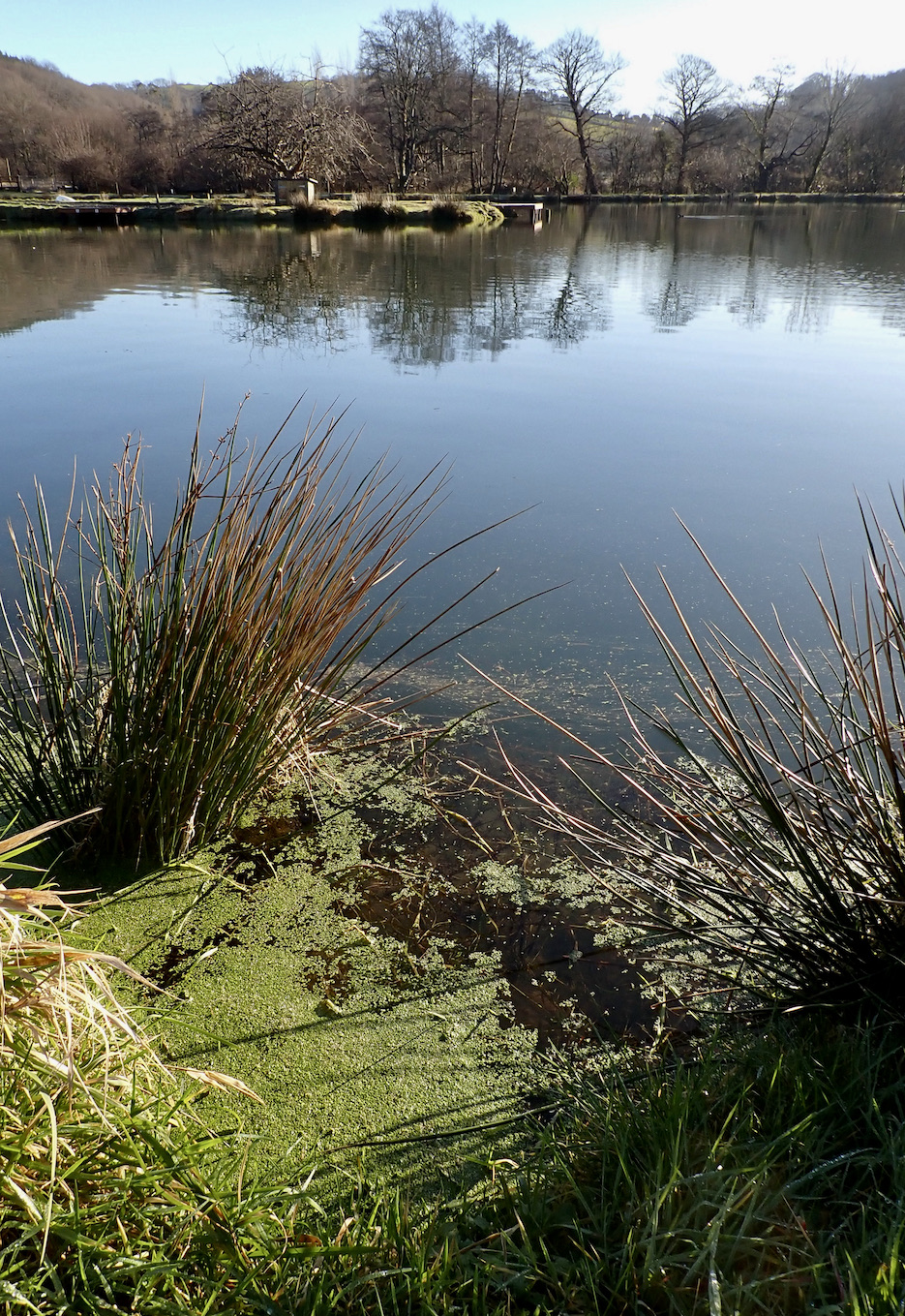
The electric blue flash of a kingfisher caught my eye as it darted across the lake, quickly followed by a second bird that I was able to focus on as it sped past.
I moved to the windward bank and tied on a bright yellow damsel Nymph/lure. Casting out I allowed the gold headed fly to sink before beginning an erratic retrieve. The line zipped delightfully tight, the rod hooped over and a chunky rainbow of around 5lb tested the tackle. It’s always good to get that first fish in the bag avoiding the blank.
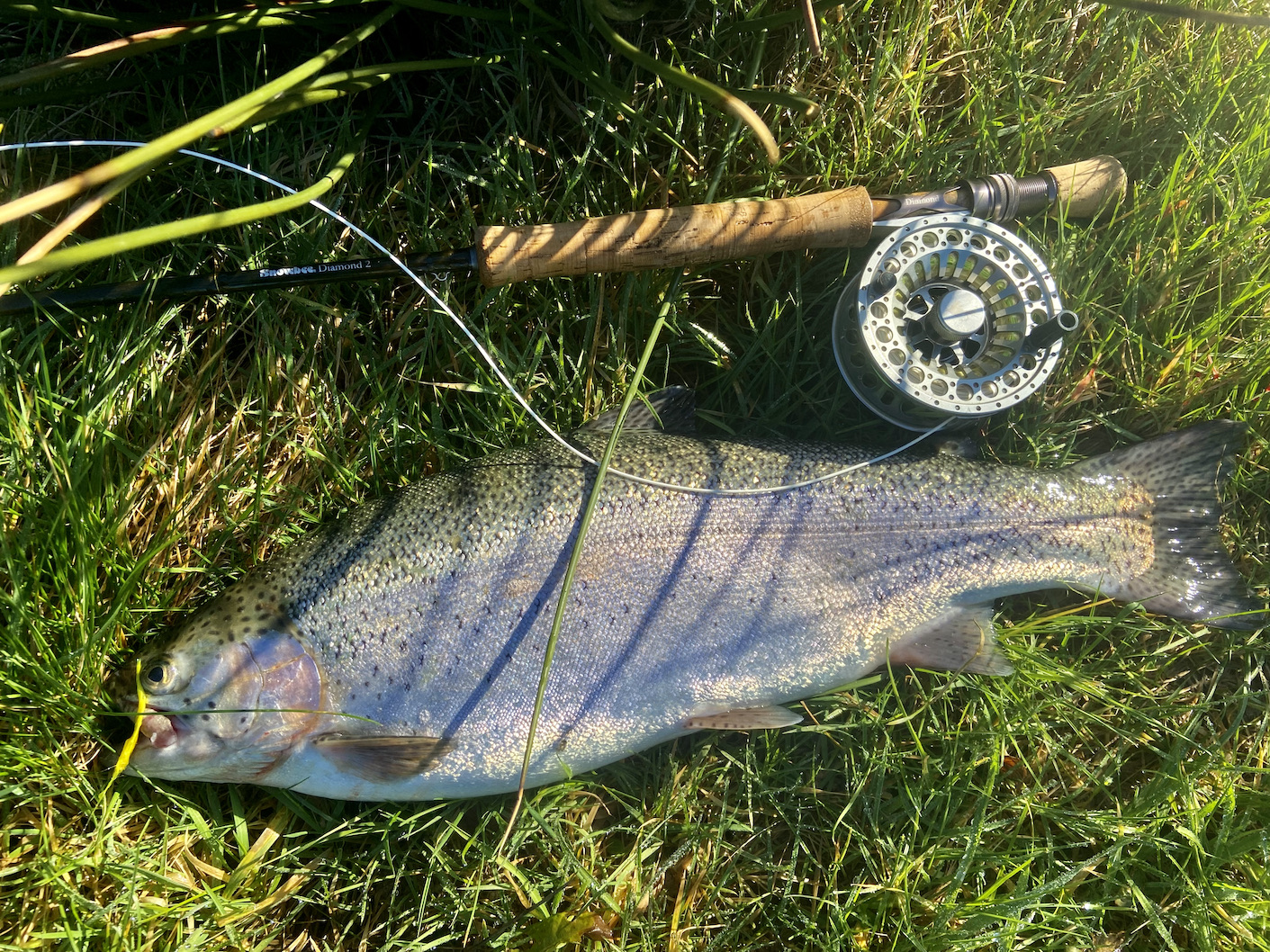
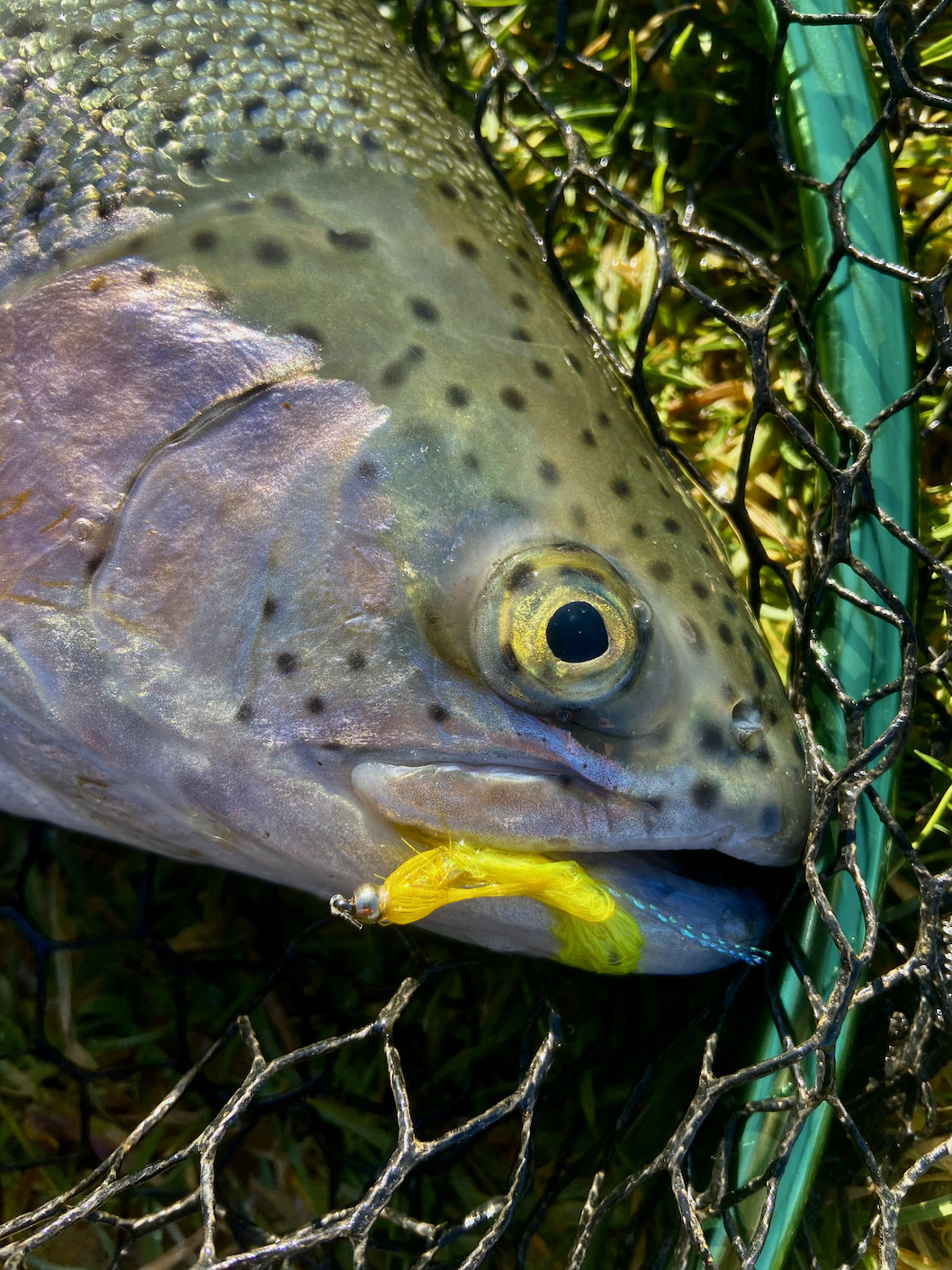

It did not take too long to get the second fish another rainbow that was almost a twin of the first. Confidence in the lure now cemented I fished on and soon added a third rainbow of a couple of pounds.
It seemed to go a bit quiet and my luck took a turn for the worse as over the next hour I hooked into three hard fighting trout that all shed the hook after prolonged and spirited tussles. I checked the hook that appeared to be razor sharp and in good order. Feeling that I needed a change I swapped to a green, yellow and black damsel. After five minutes working this lure deep and slow the line once again zipped tight as another good trout attempted to shed the hook. This one was fighting deeper and shaking its head vigorously and I was delighted to eventually slide a fine tiger trout over the rim of the waiting net.
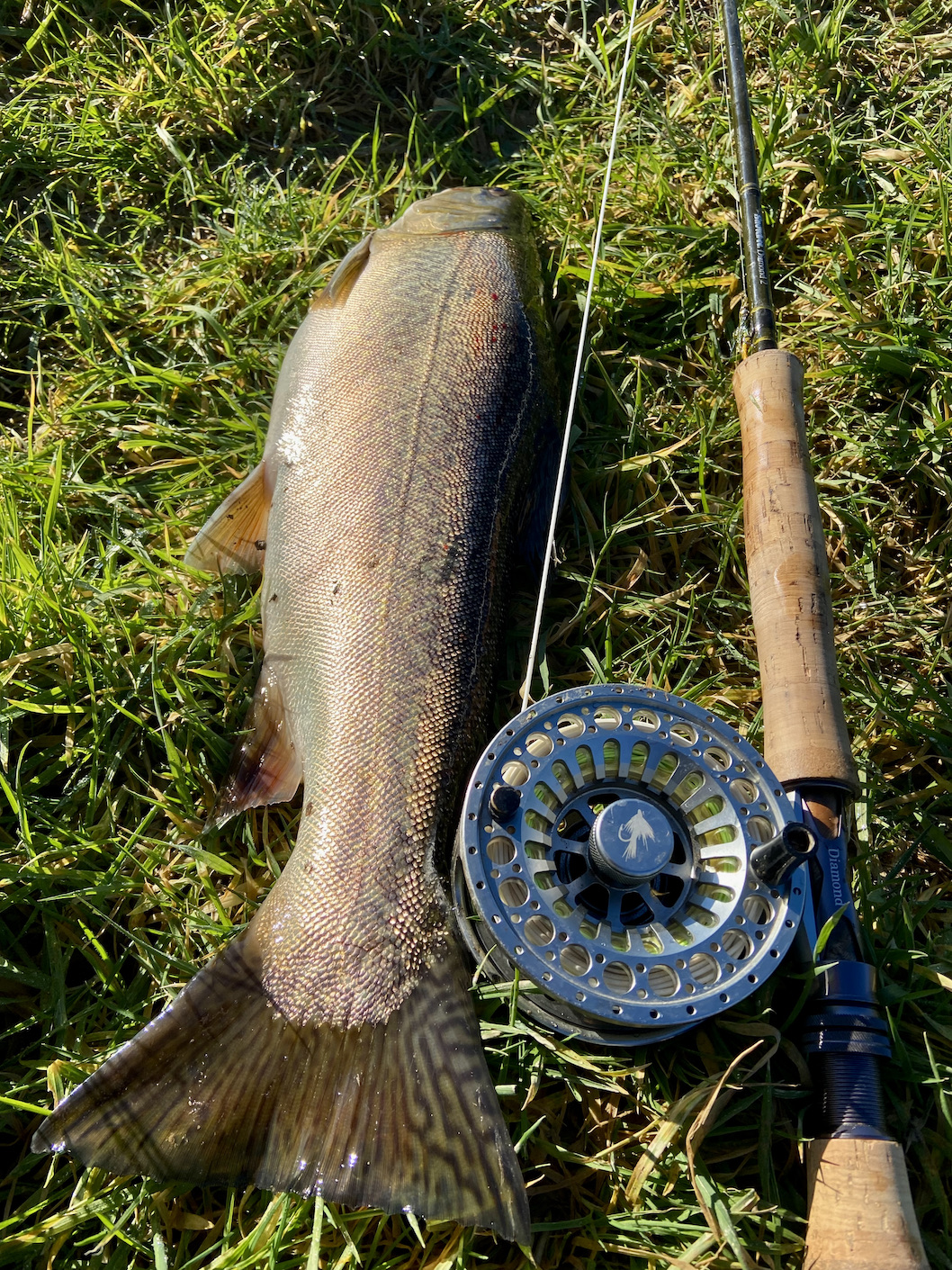
With four trout in the bag I was content with my days sport but as always there is that desire to complete a limit bag. It was now mid-afternoon and as is often the case the trout appeared to have switched off.
It was perhaps a good time to have a walk around the lake trying different areas. There were two other anglers on the lake and they had both caught rainbows in the 3lb to 4lb size range but like me were not finding the fish easy to tempt.
A walk around the lake failed to inspire as I had a feeling that most of the trout were lurking in the windward side of the lake. So I headed back to the area from which I had enjoyed success earlier in the day. Much of my fishing is determined upon a hunch and a feel for where the fish will be. The occasional fish was also rising in this area prompting me to try a short time with a slow sinking daddy longlegs a pattern that often tempts a trout at Bulldog.
After a couple of chances a rainbow of perhaps 2lb 8oz took my PTN fished on a dropper bringing my total to five fish. Deciding that with the sun sinking below the tree line it was a good time to pack up and gut the trout. A welcome facility at Bulldog is a fish preparation area where you can gut and fillet the catch removing the need to do so at home.
As I returned to the car Brian Sedgebeer was playing a good trout that had succumbed in the fading light of the day.
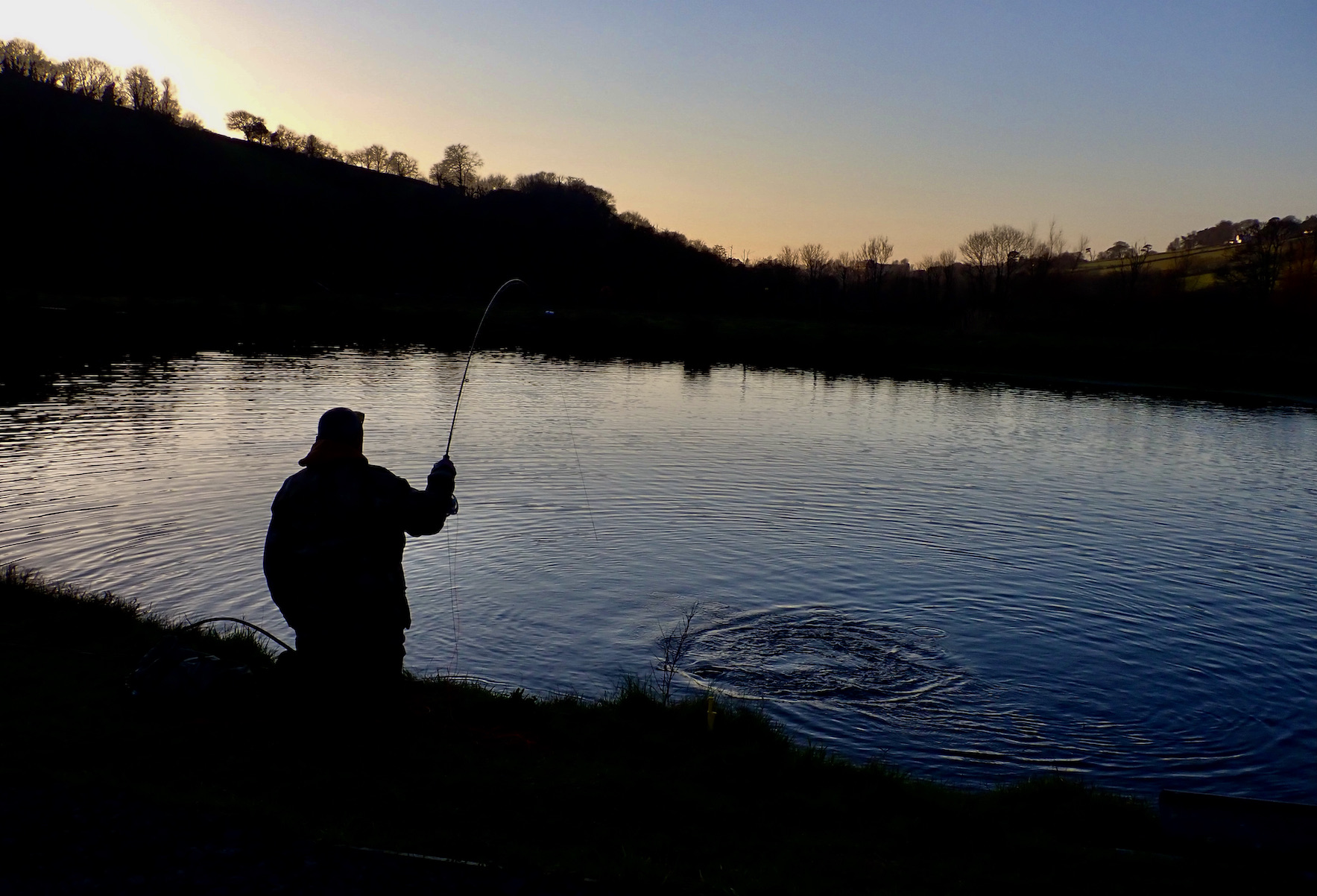
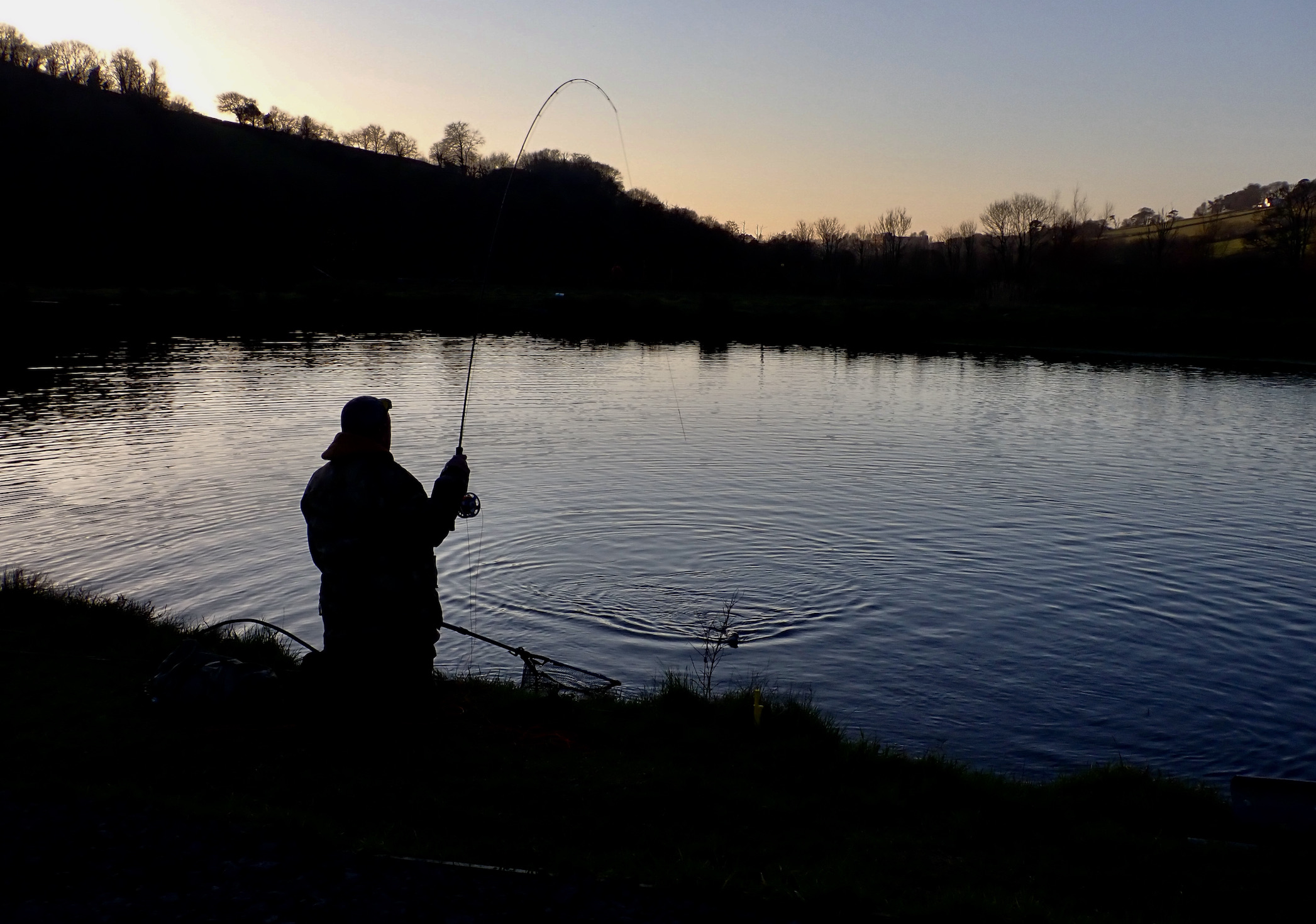
Bulldog Fishery is now a premium trout water that offers superb sport with a very good average size of stocked fish. I have found that the Bulldog trout seem to respond well to larger lures with small imitative tactics less successful. This may of course change during the warmer months when fish become more active feeding closer to the surface. A floating line with a long leader or an intermediate line will generally cover all days at Bulldog as the fish are seldom lurking close to the lake bed.
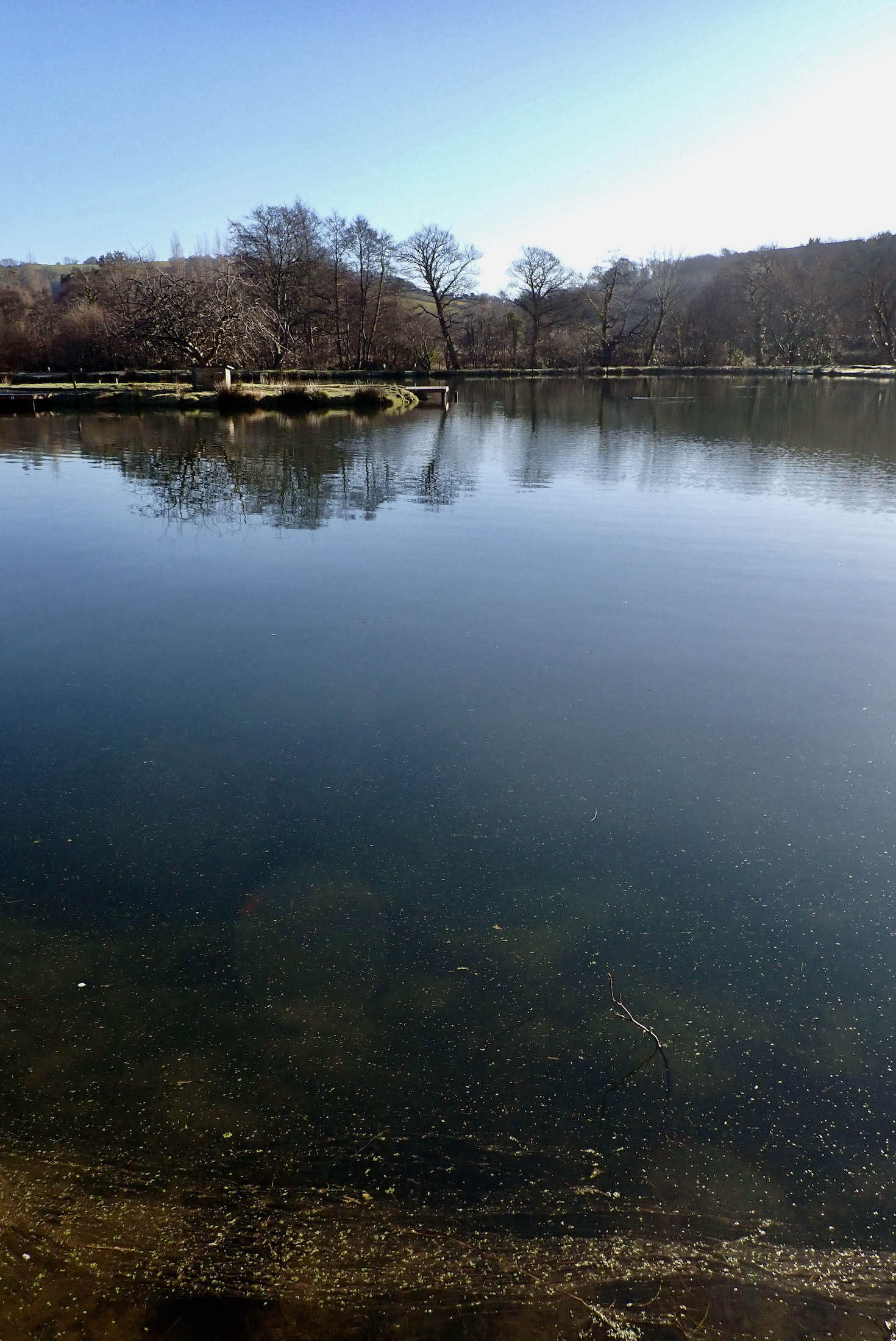
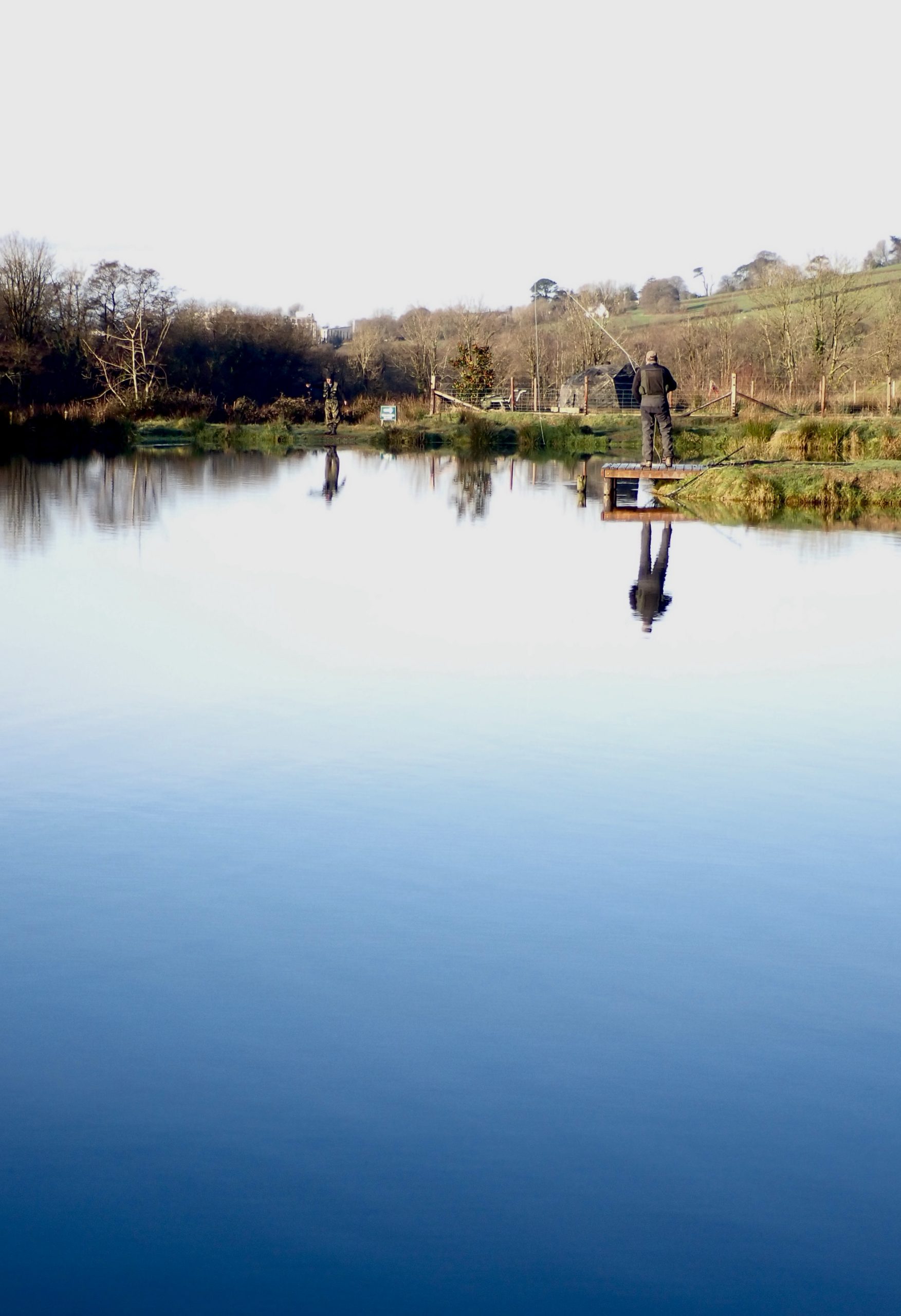 I joined members of Wistlandpound Fly Fishing Club at Bulldog Trout Fishery last Sunday where we were greeted by a bright cloudless blue sky and milder conditions. The trout proved to be generally cooperative with all members catching fish with a mixture of rainbow and brown trout averaging over 3lb. Most fish were tempted using lures fished on long leaders with an erratic retrieve.
I joined members of Wistlandpound Fly Fishing Club at Bulldog Trout Fishery last Sunday where we were greeted by a bright cloudless blue sky and milder conditions. The trout proved to be generally cooperative with all members catching fish with a mixture of rainbow and brown trout averaging over 3lb. Most fish were tempted using lures fished on long leaders with an erratic retrieve.
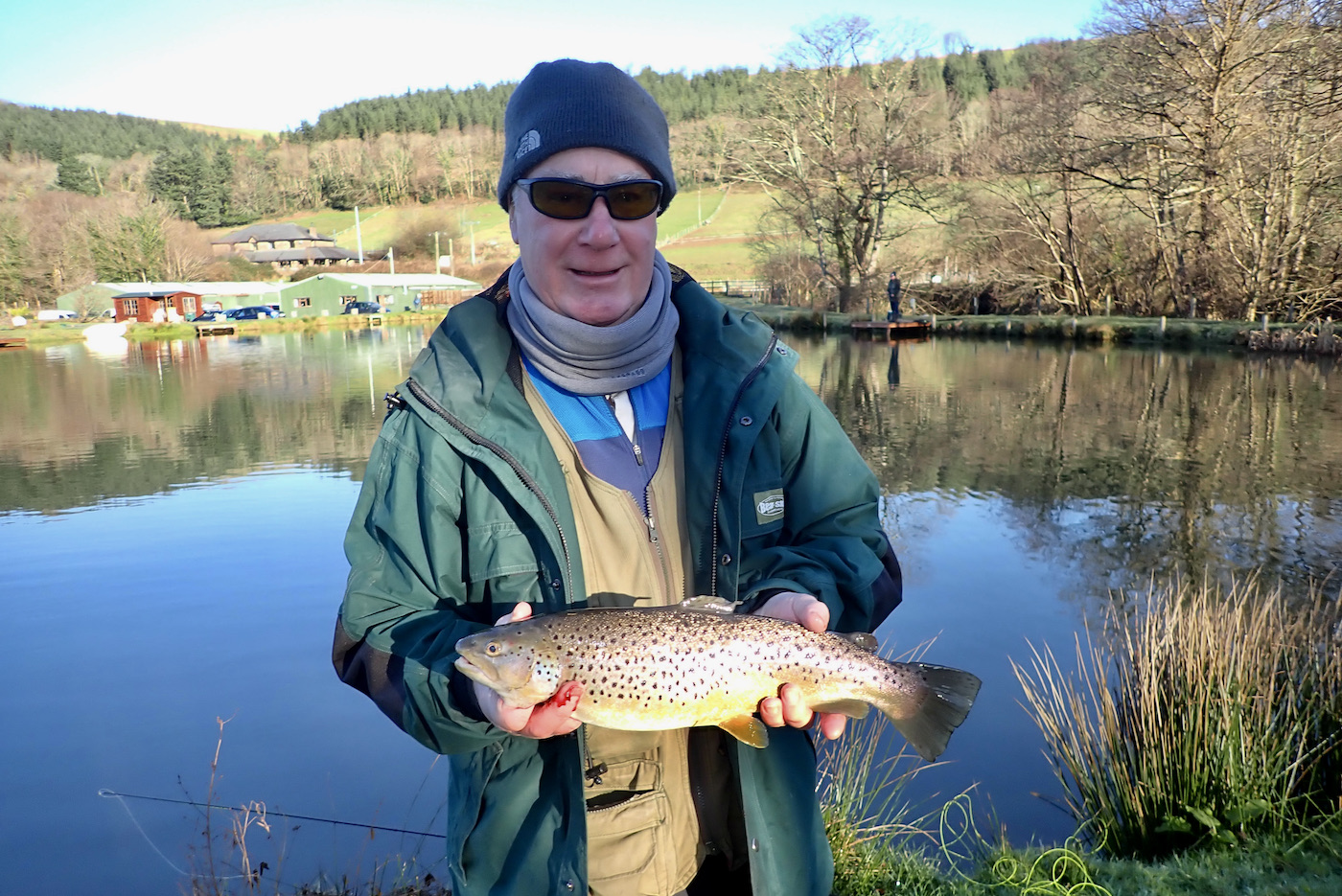
The winning bag was taken by Nigel Bird who had three trout for 10lb. Runner up was Andre Muxworthy with three for 9lb 9oz and myself third with three for 9lb 8oz.
It is intriguing how days unfold during these club competitions on small stillwater’s. Members will all have their favourite flies and lures that give them confidence and it is generally these that are tried first. Typically those first ten to fifteen minutes of fishing produce numerous trout as was the case during Sundays competition. I was fortunate to bank three hard fighting trout within the first twenty minutes and spent the rest of the morning wandering around the fishery with my camera capturing action shots of fellow club members.
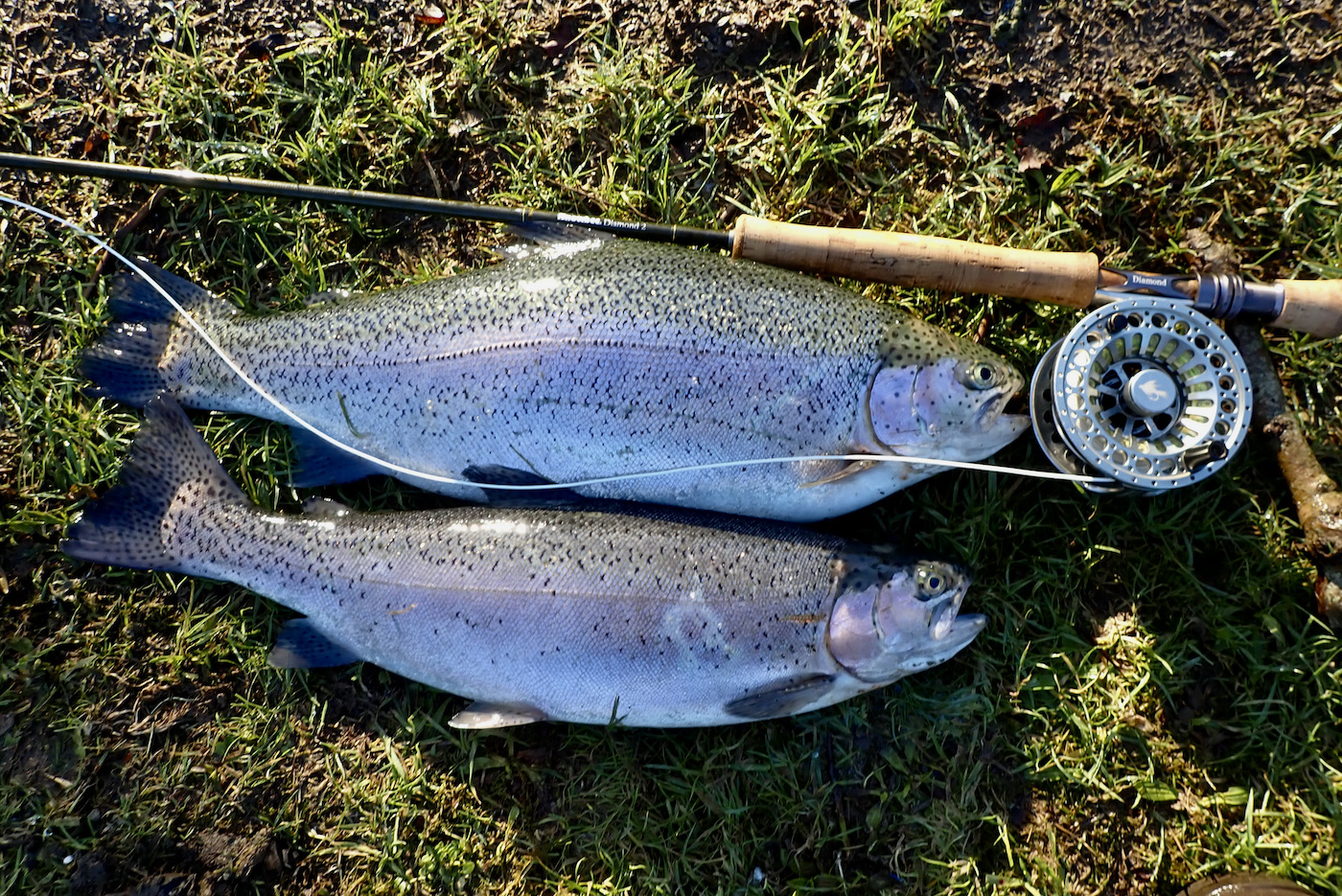
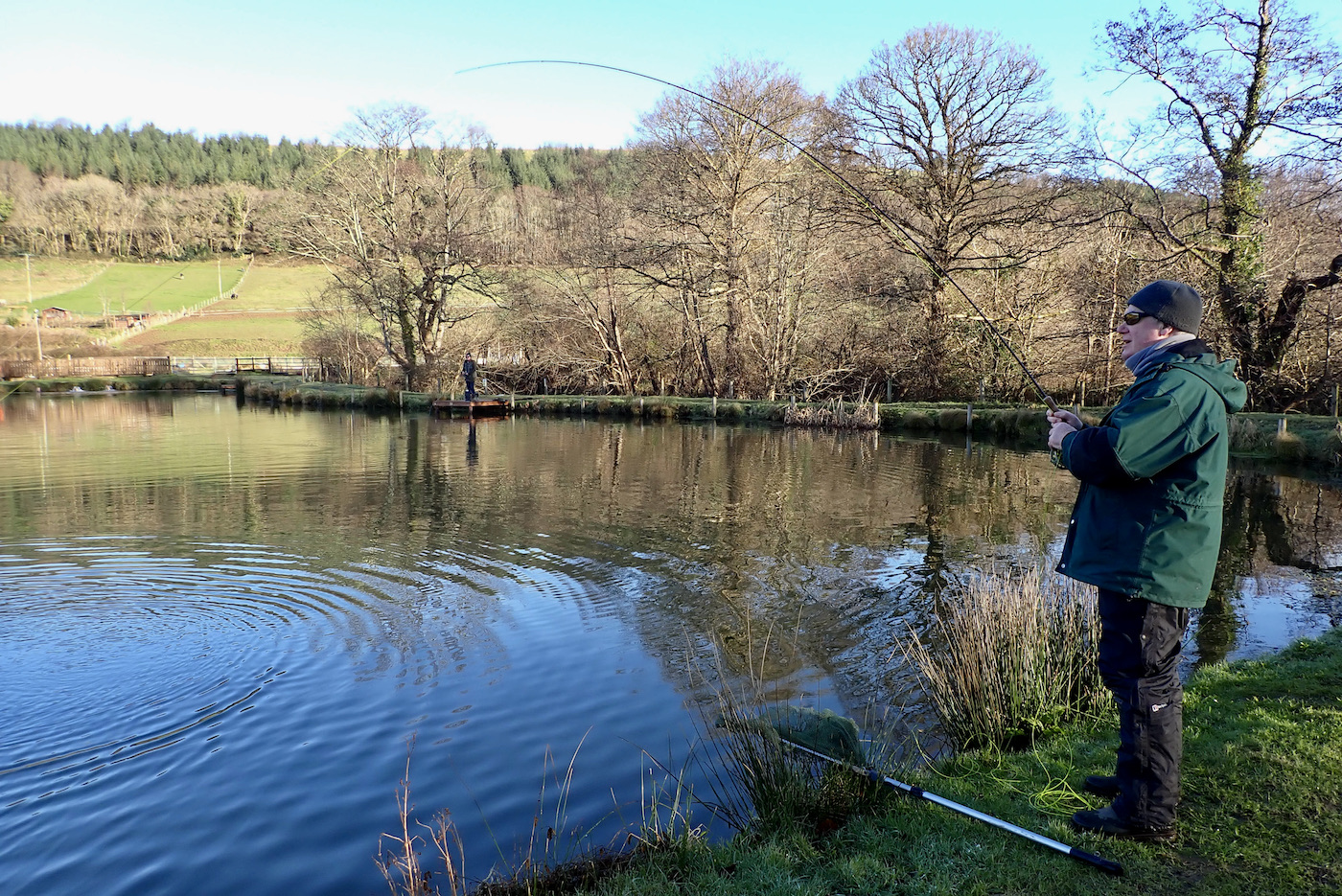
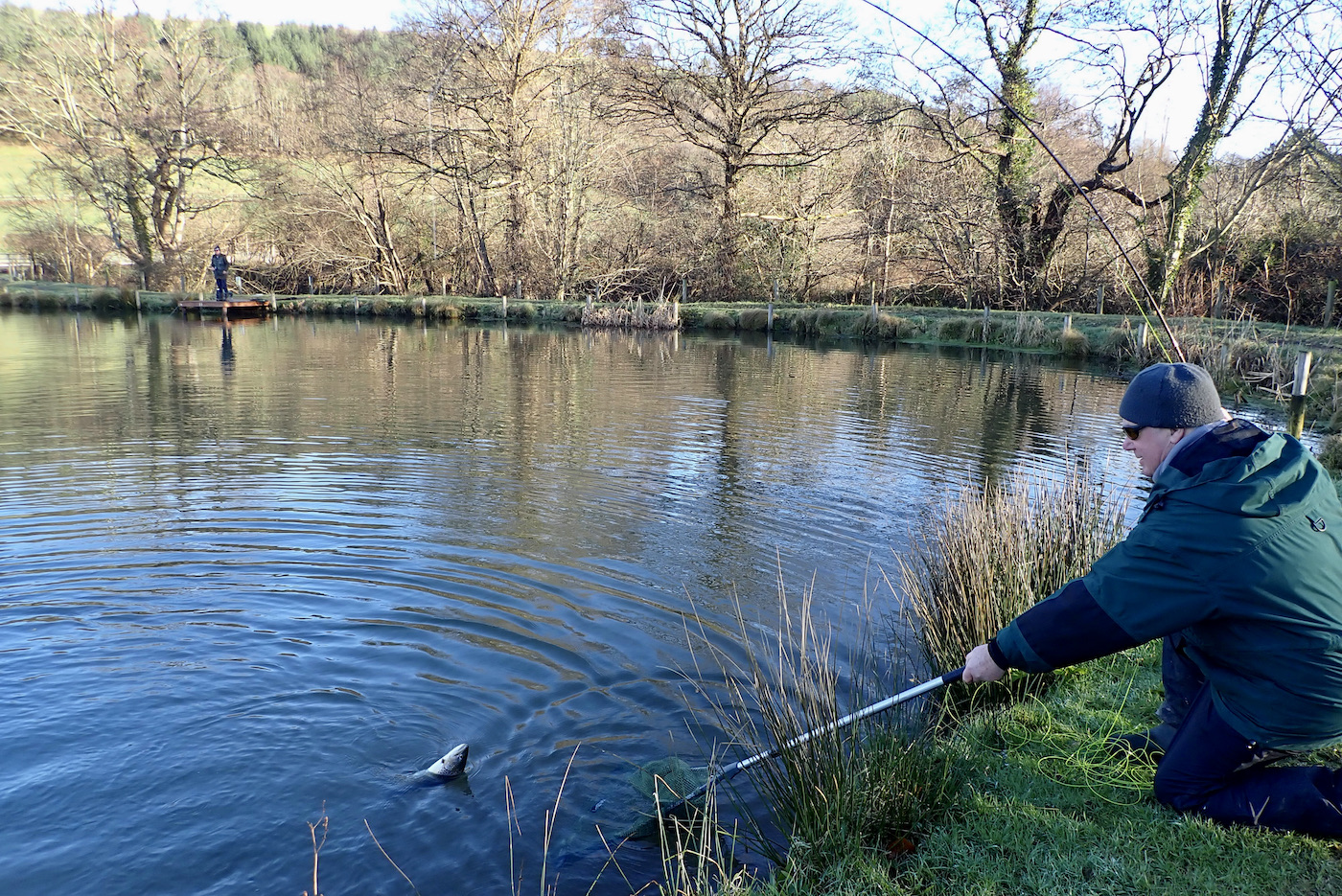
I noted that fishing slowed after the initial flurry and for a while trout proved hard to tempt. After a while some tied on different patterns or moved to a fresh swim. This did sometimes bring results but what was noticeable was that if one angler hooked a fish it was not unusual to see several rods bending at the same time around the fishery as if the fish had suddenly switched on.
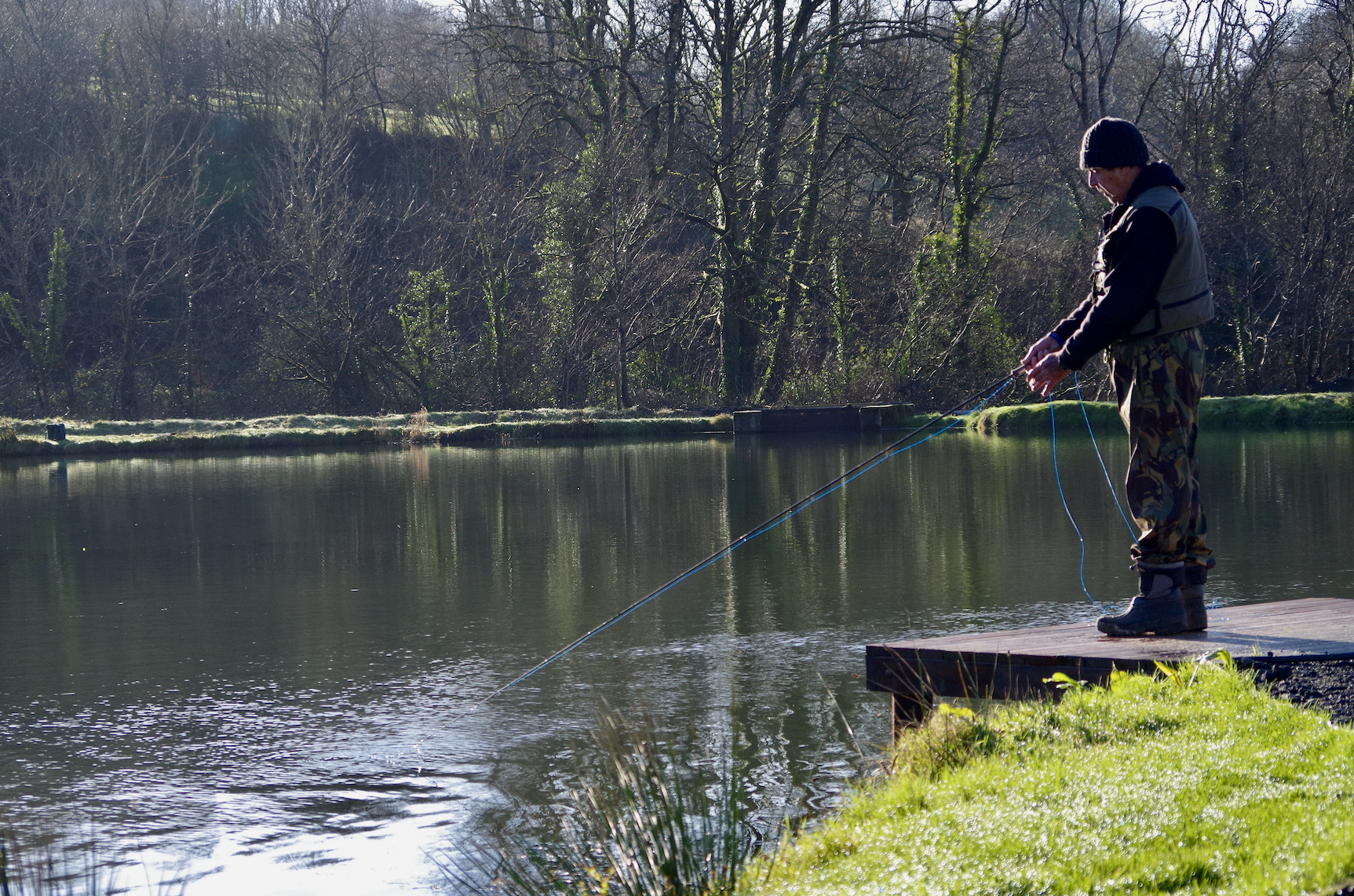
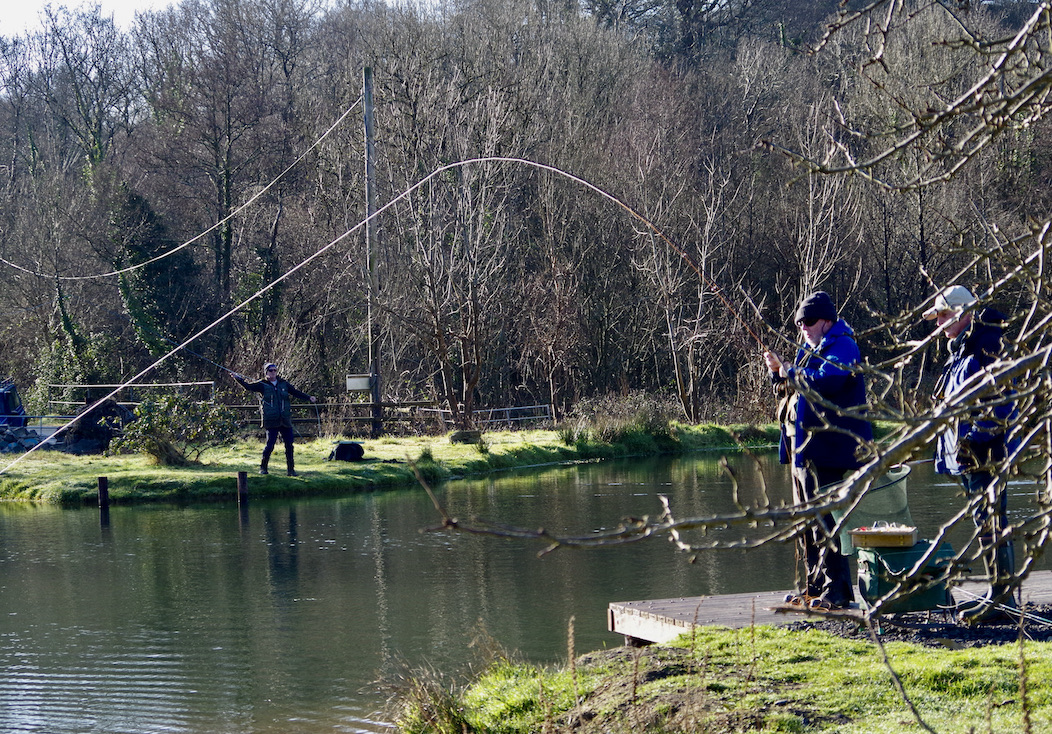

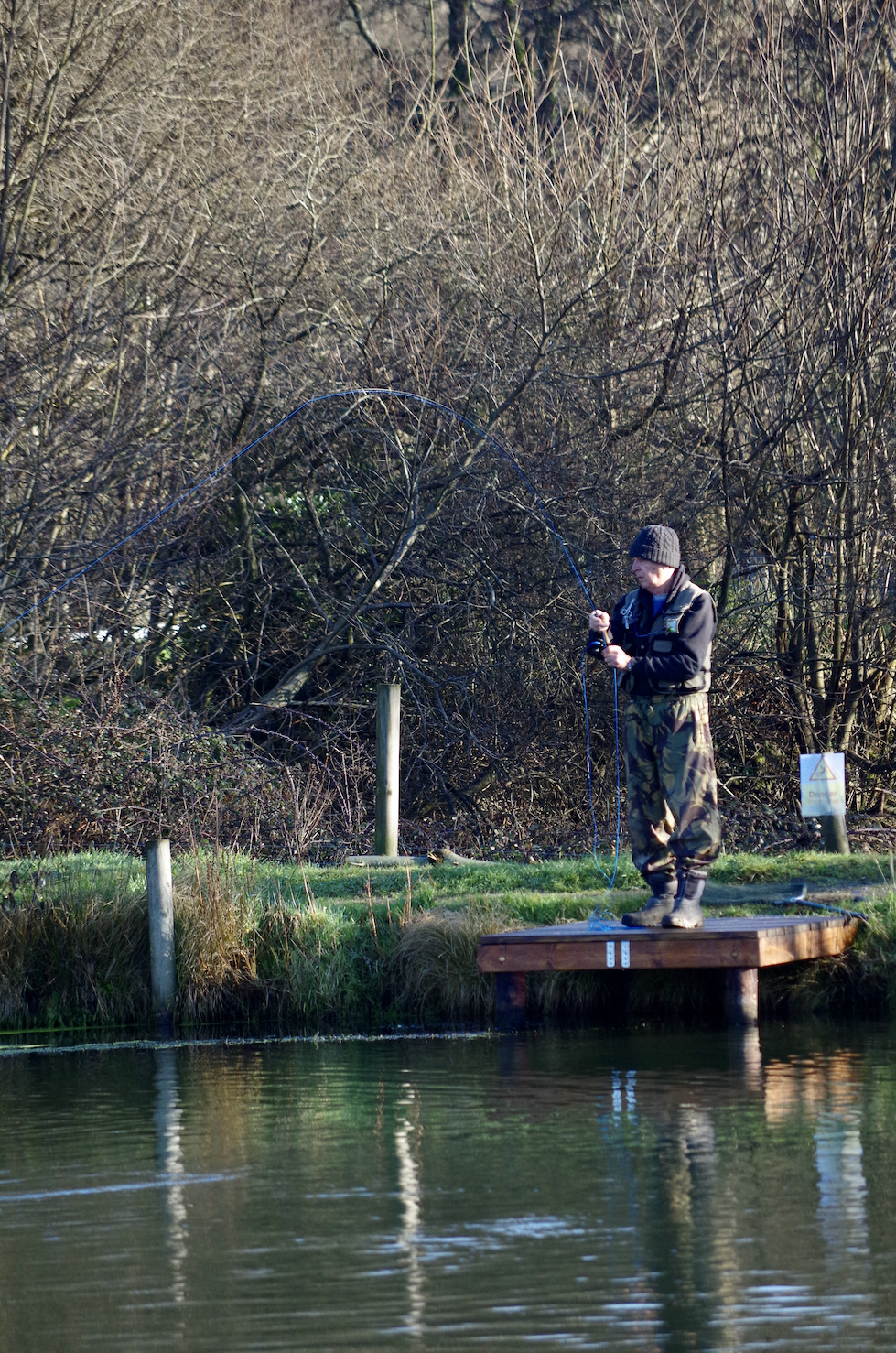
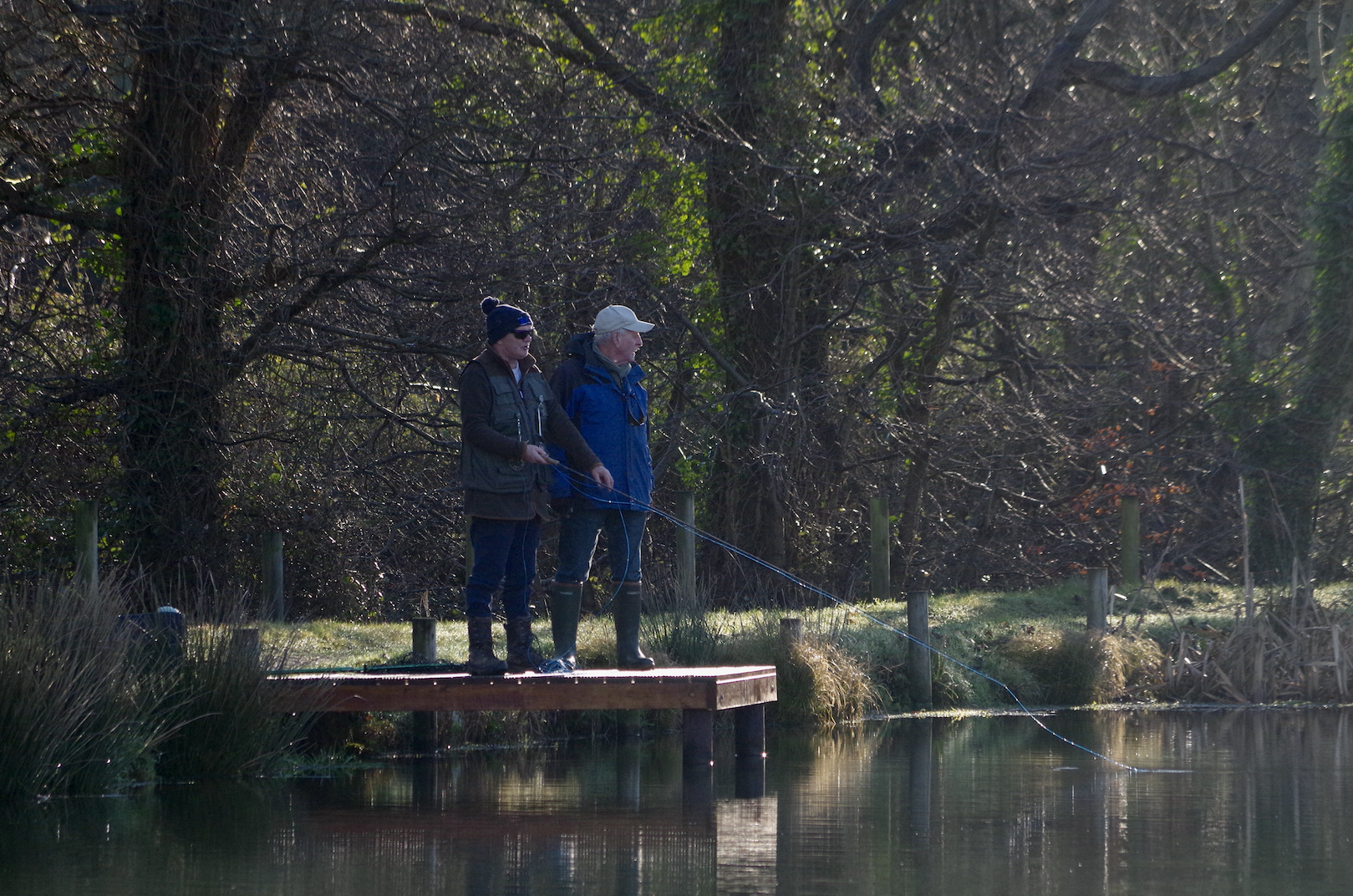
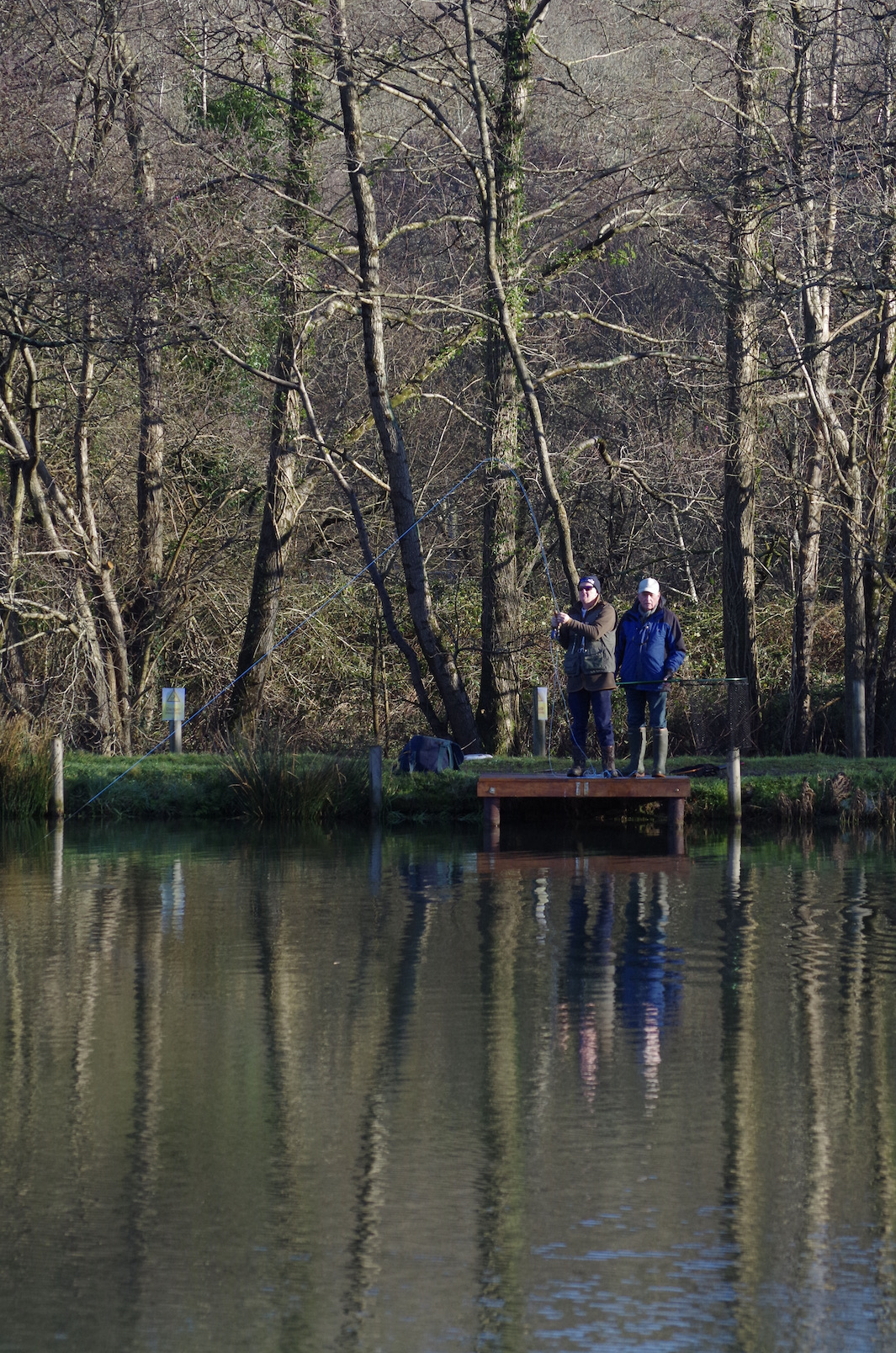
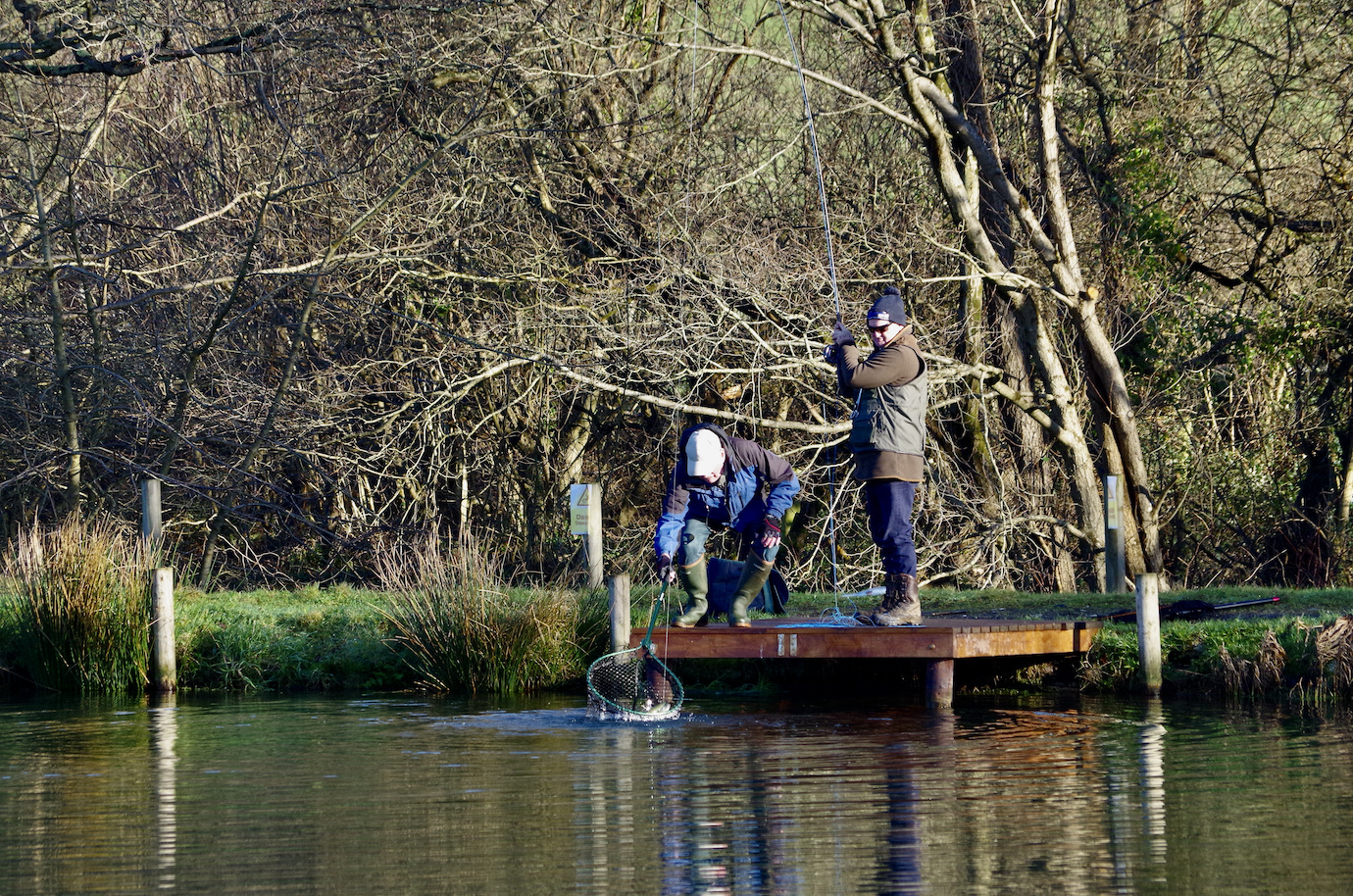

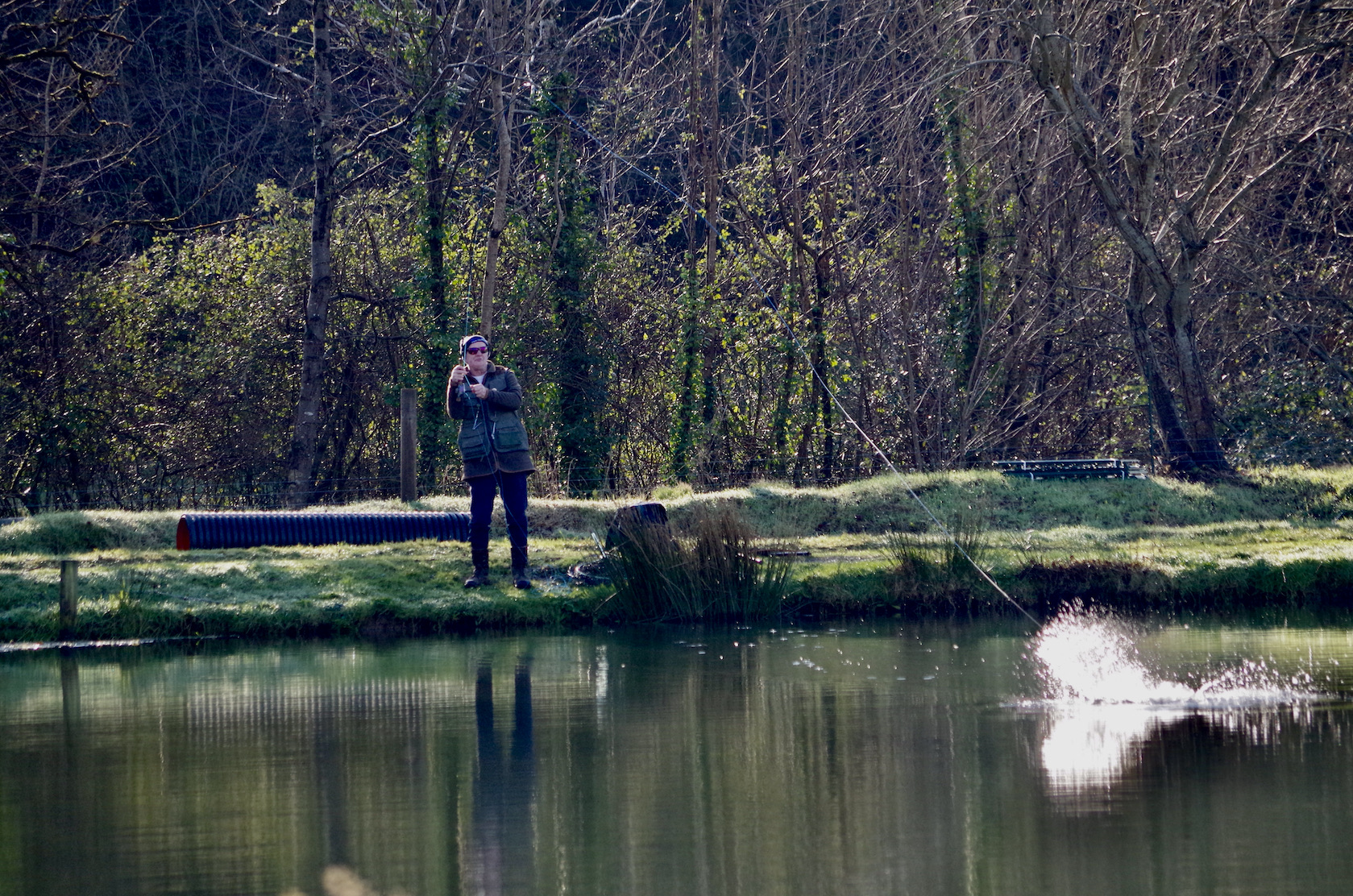
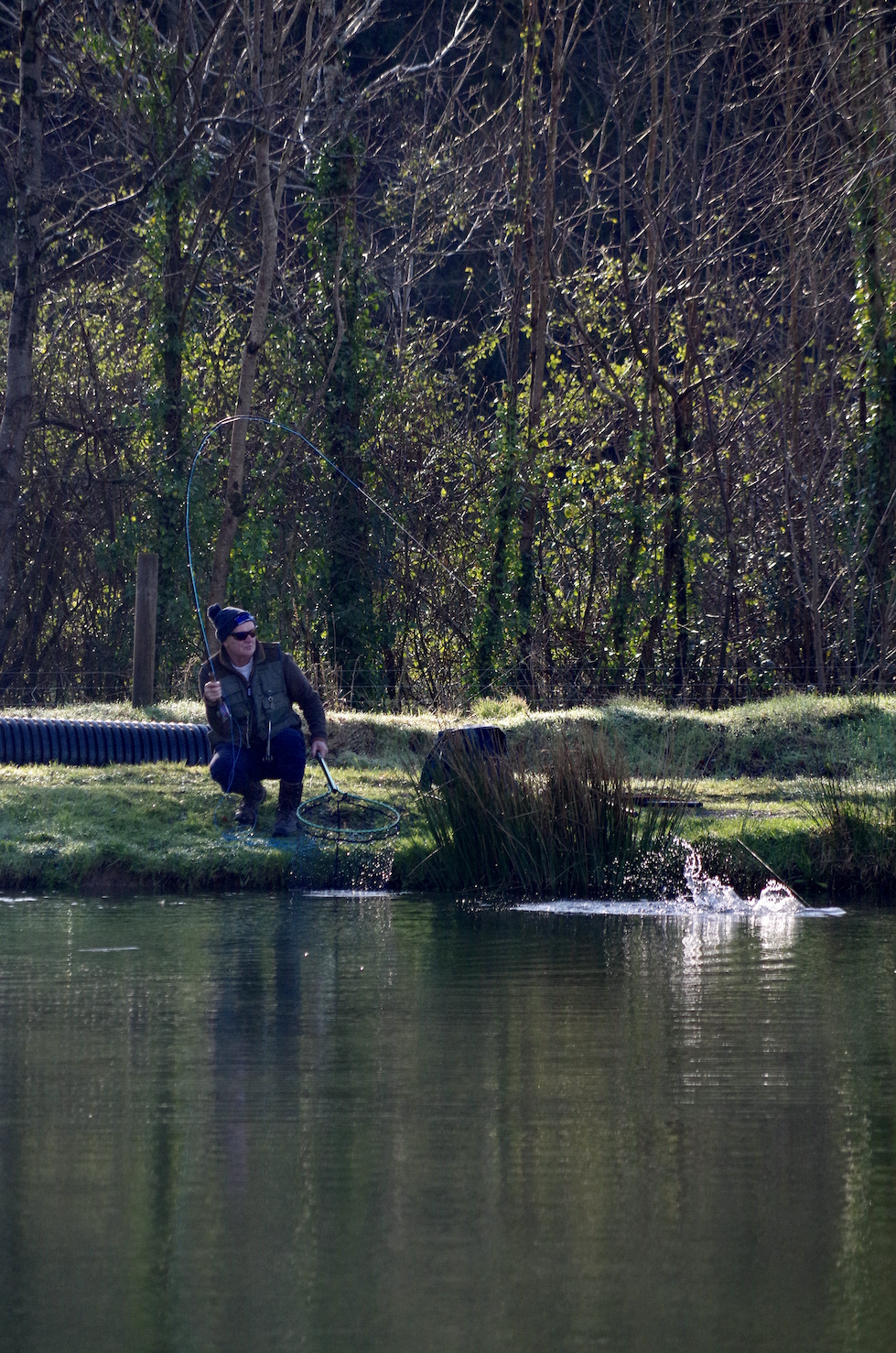
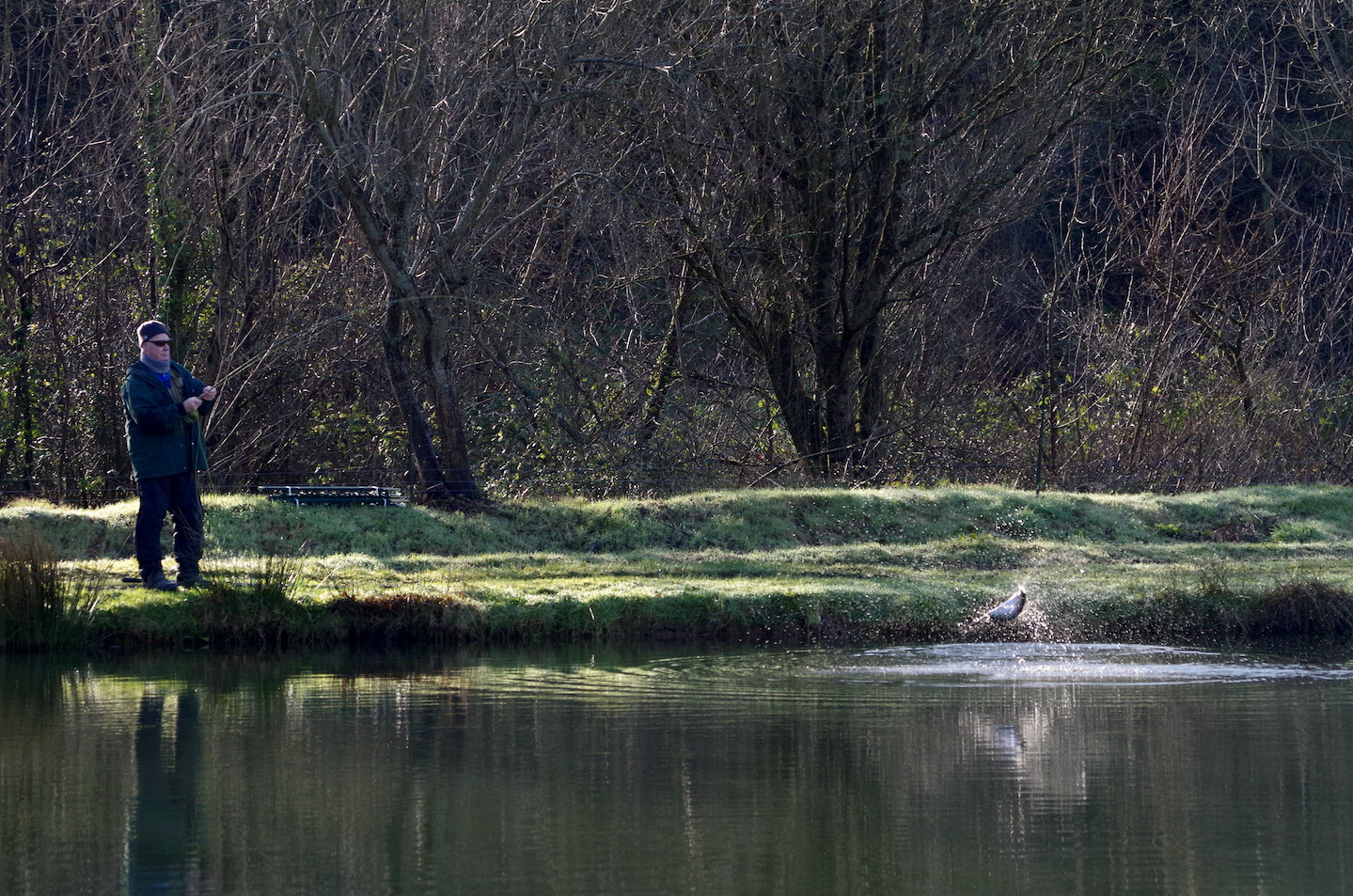
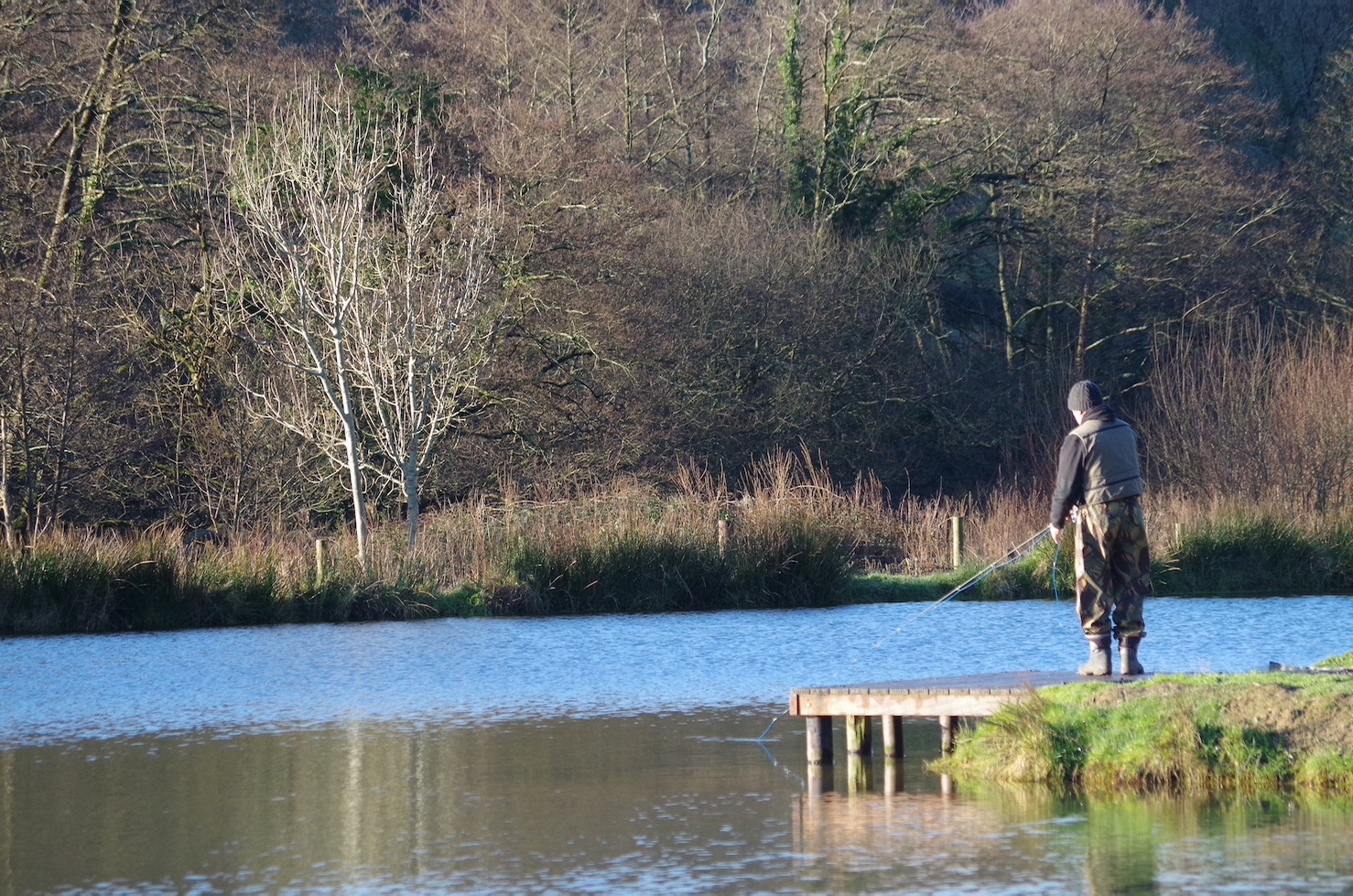
It is always interesting to compare notes at the end of the days fishing and I often note how an angler will state that a change of fly has triggered a response with perhaps a touch of orange or pink bringing success. A particular fly often seems to be the one to use! Yet it is often the case at the end of fishing as anglers chat that trout have been caught on a wide range of patterns. One angler swearing that white was the killer fly whilst others boast of success with black or orange.
There are many factors involved in the inexact science of fly fishing. Presentation of the fly, its size and colour, depth it is fished all interacting with water clarity, temperature, air pressure, lunar cycles, natural food sources and of course the location of the fish. All these factors make for a fascinating game that takes the mind away from the troubled world. The angler absorbed in natures complex chess board pondering upon tying on a Greenwell’s glory or a Wickham’s fancy.
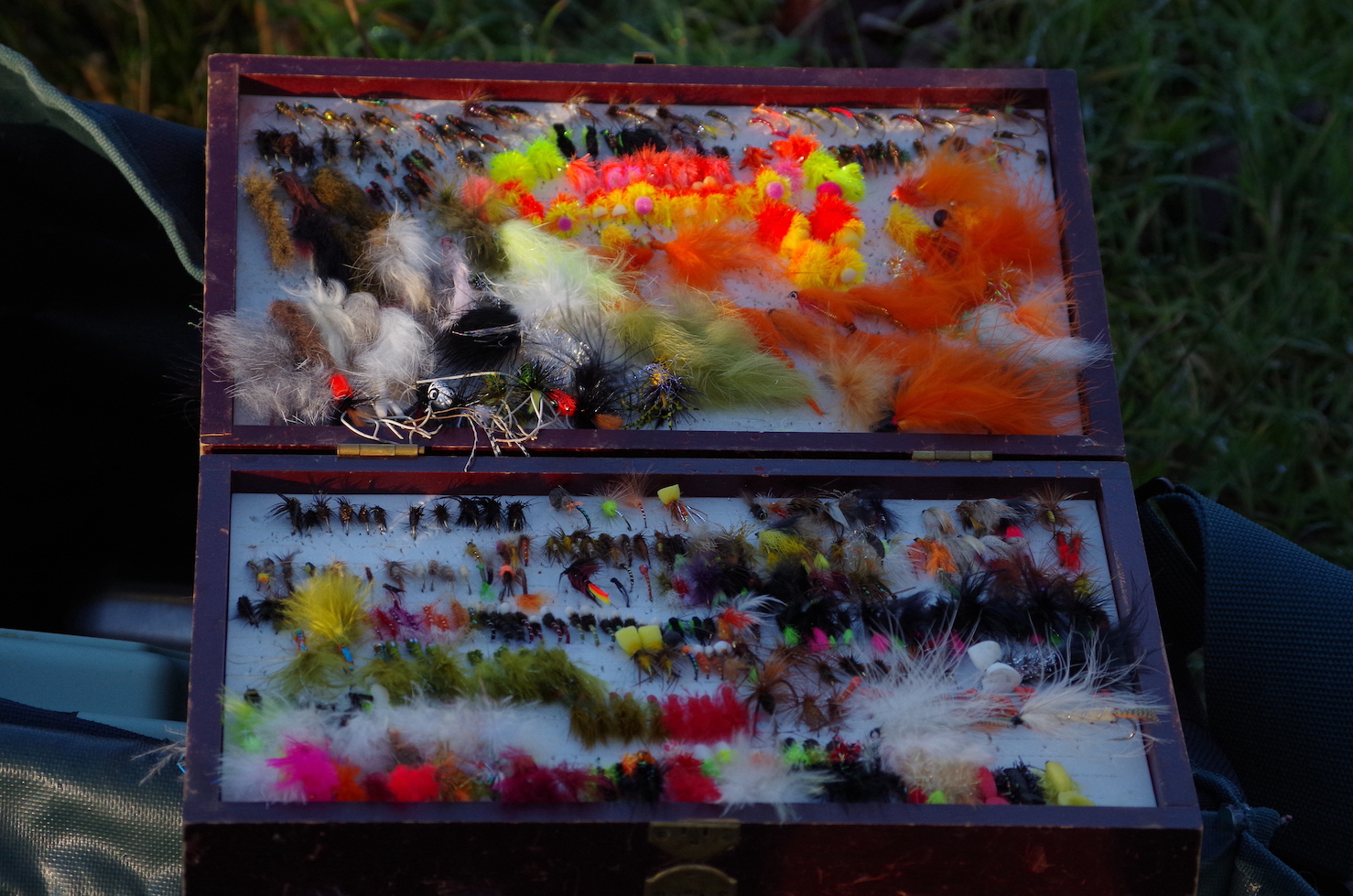
Tip of the day – Check your flies and hooks. Several trout were lost during the day as hook shanks snapped. Hook shanks hidden beneath dressings can rust resulting in weakness that only show itself when a large powerful trout puts it to the test.
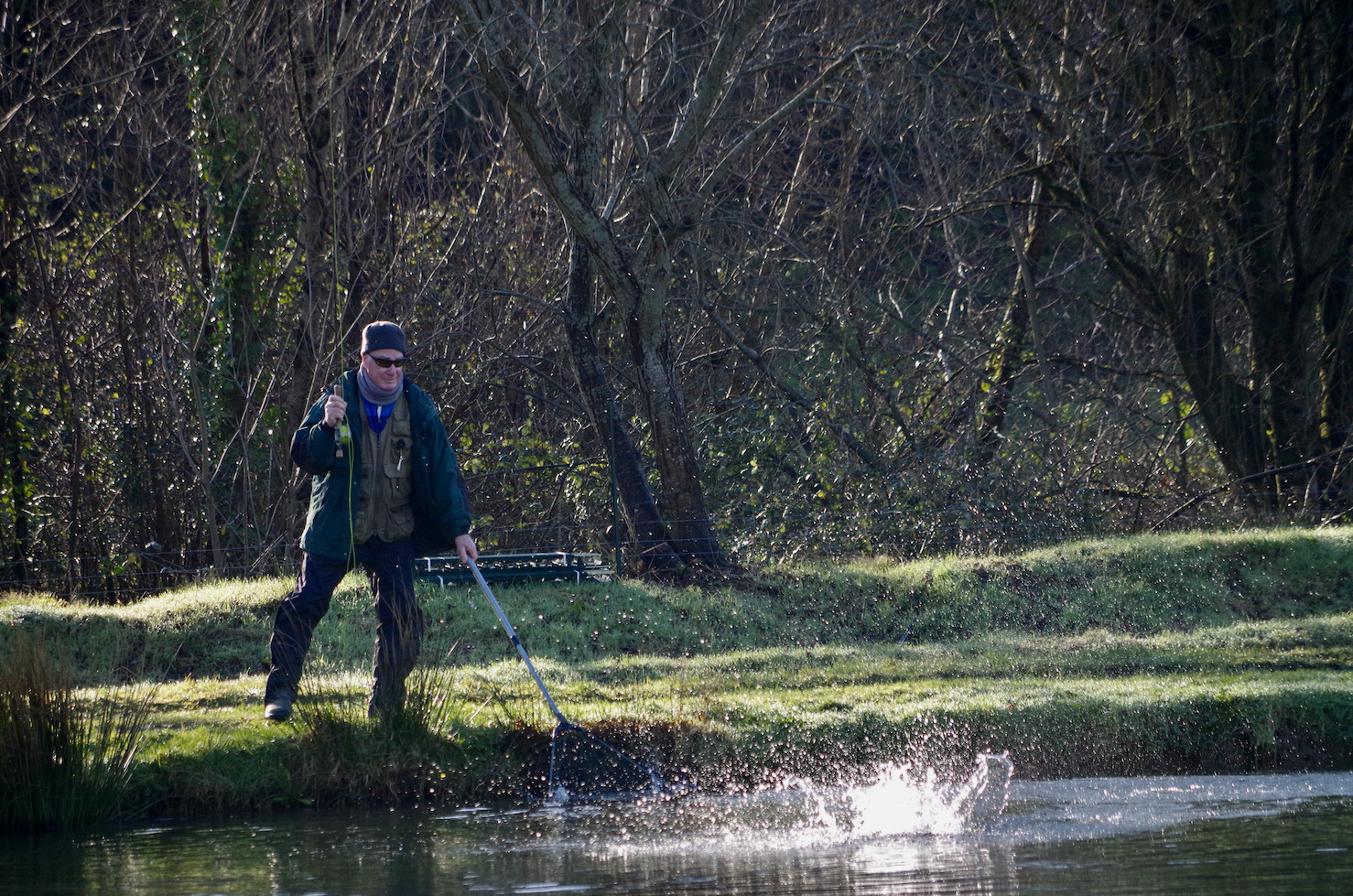
Seconds after this shot was taken Nigel cursed as his hook broke.
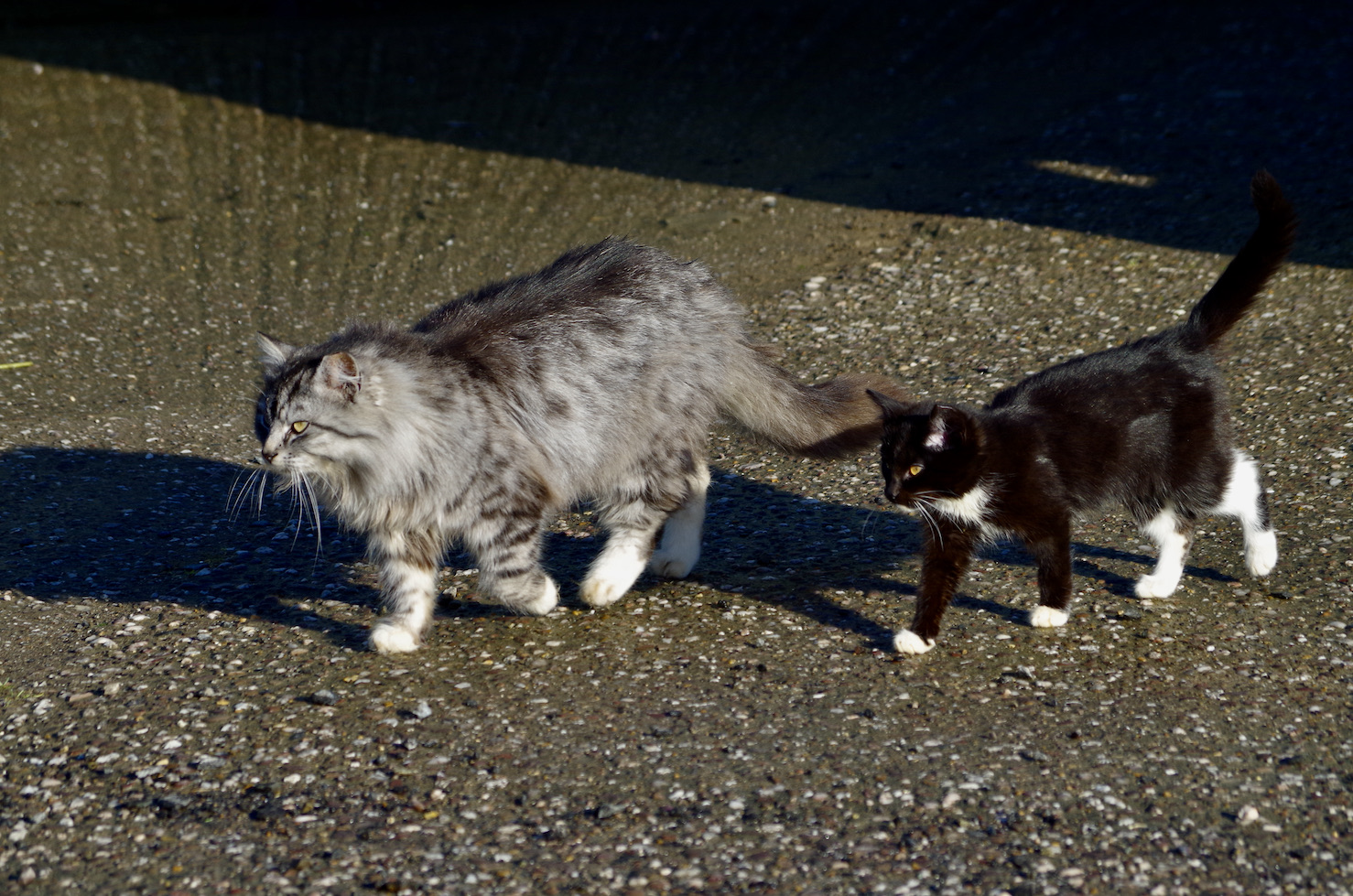
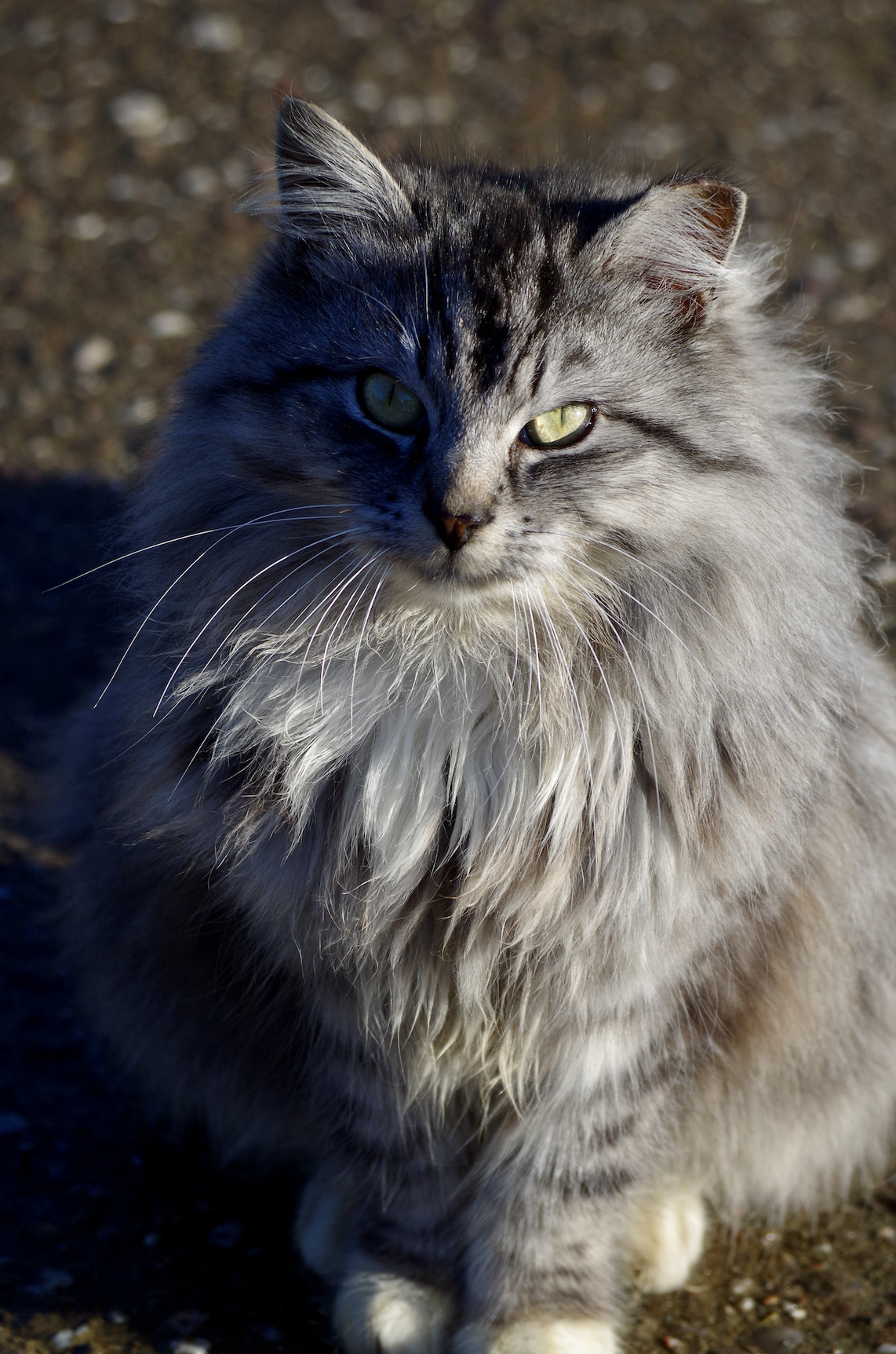


I asked Reece about his go to lures and two of his top three are pictured below.
The megabass Dark sleeper and Megabass AYU 5″ Spindleworms certainly deserve a place in any keen lure fishers lure box.
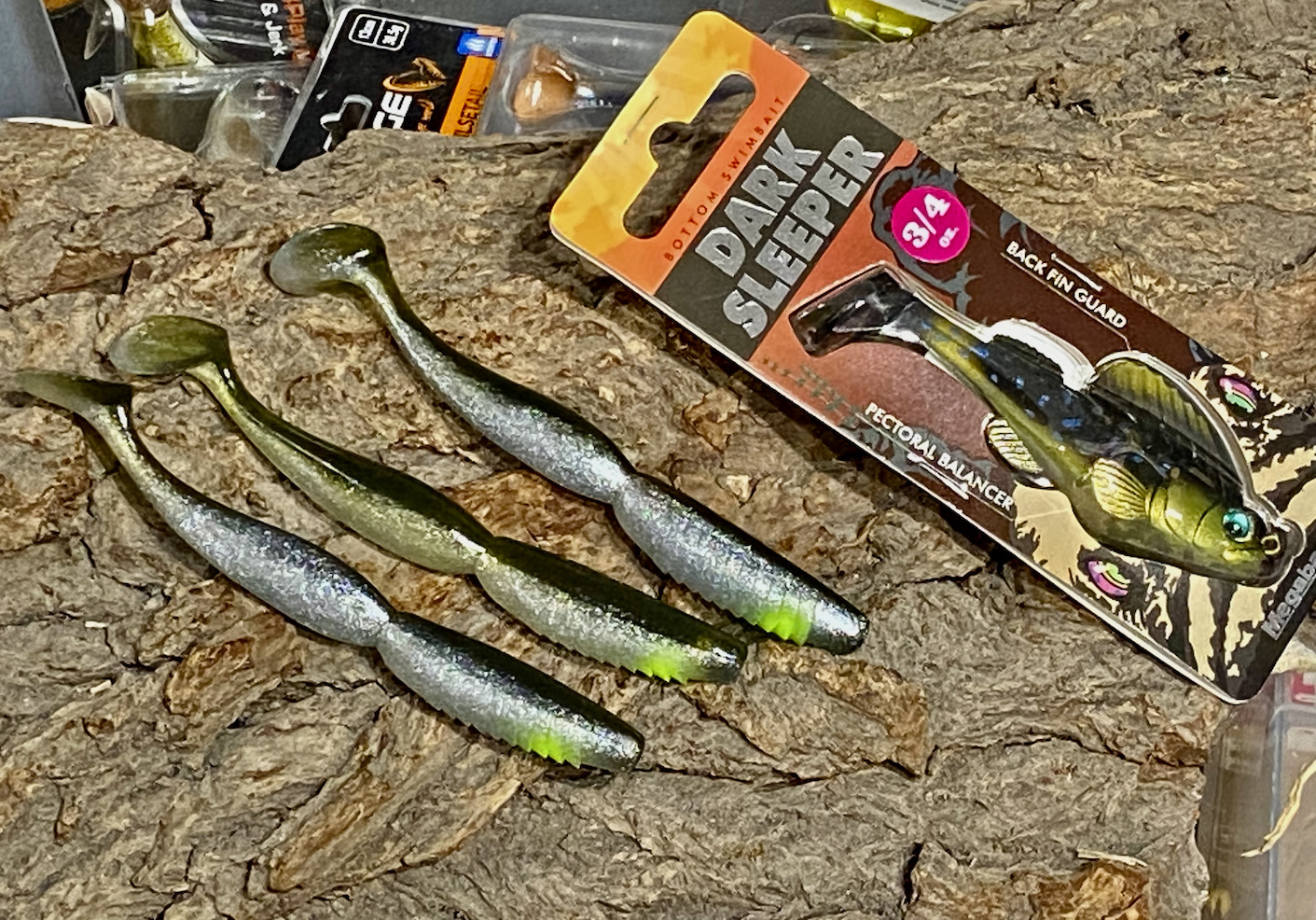
Lure fishing is certainly a fascinating branch of angling with many thousands of lures available. Danny stocks an impressive range of lures to cover every aspect and species within the UK and beyond.
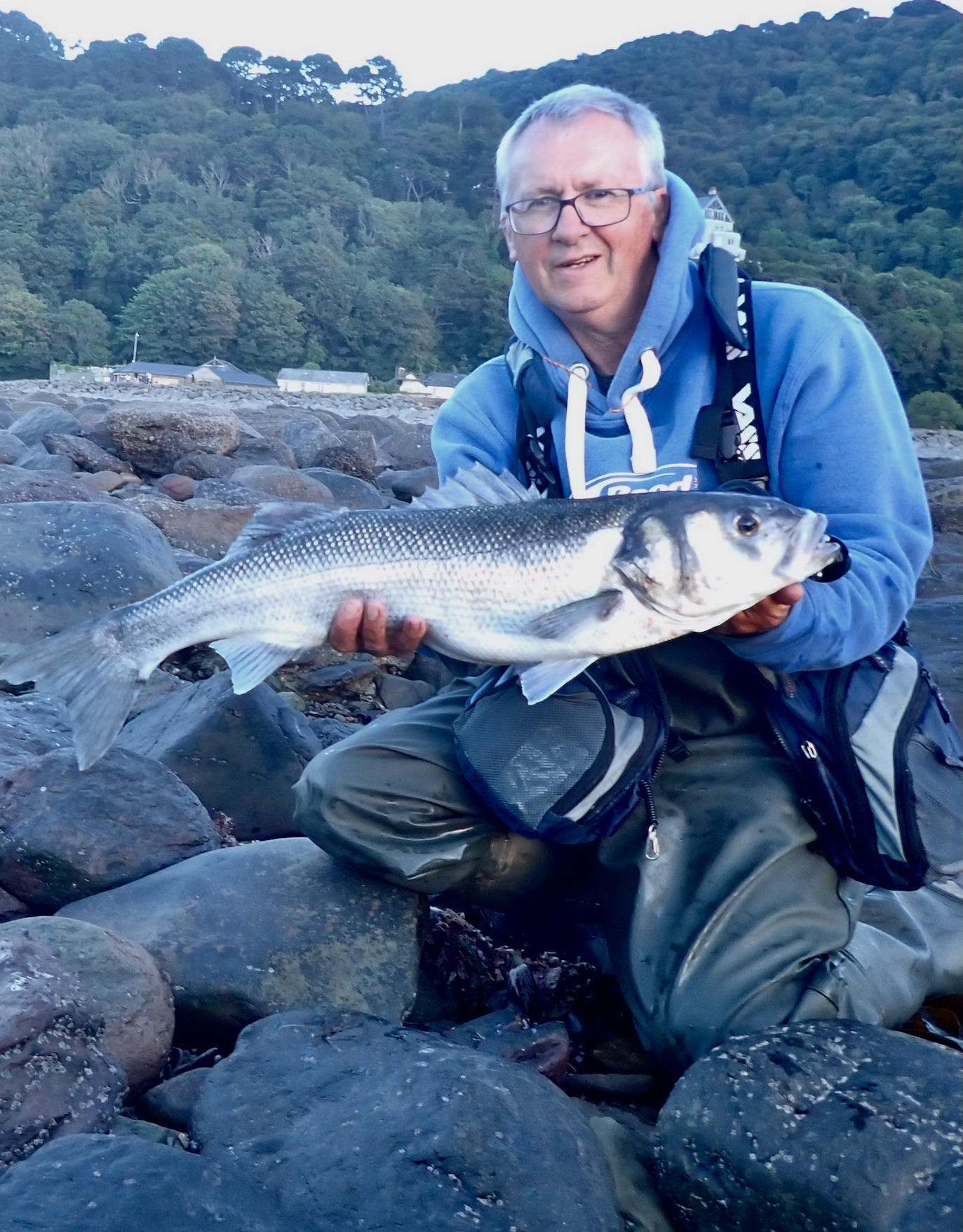
Runner up in the lure competition was Wayne Thomas with five bass for 310 cm, Ross Stanway with five for 293cm and Dan Welch with five for 270cm.
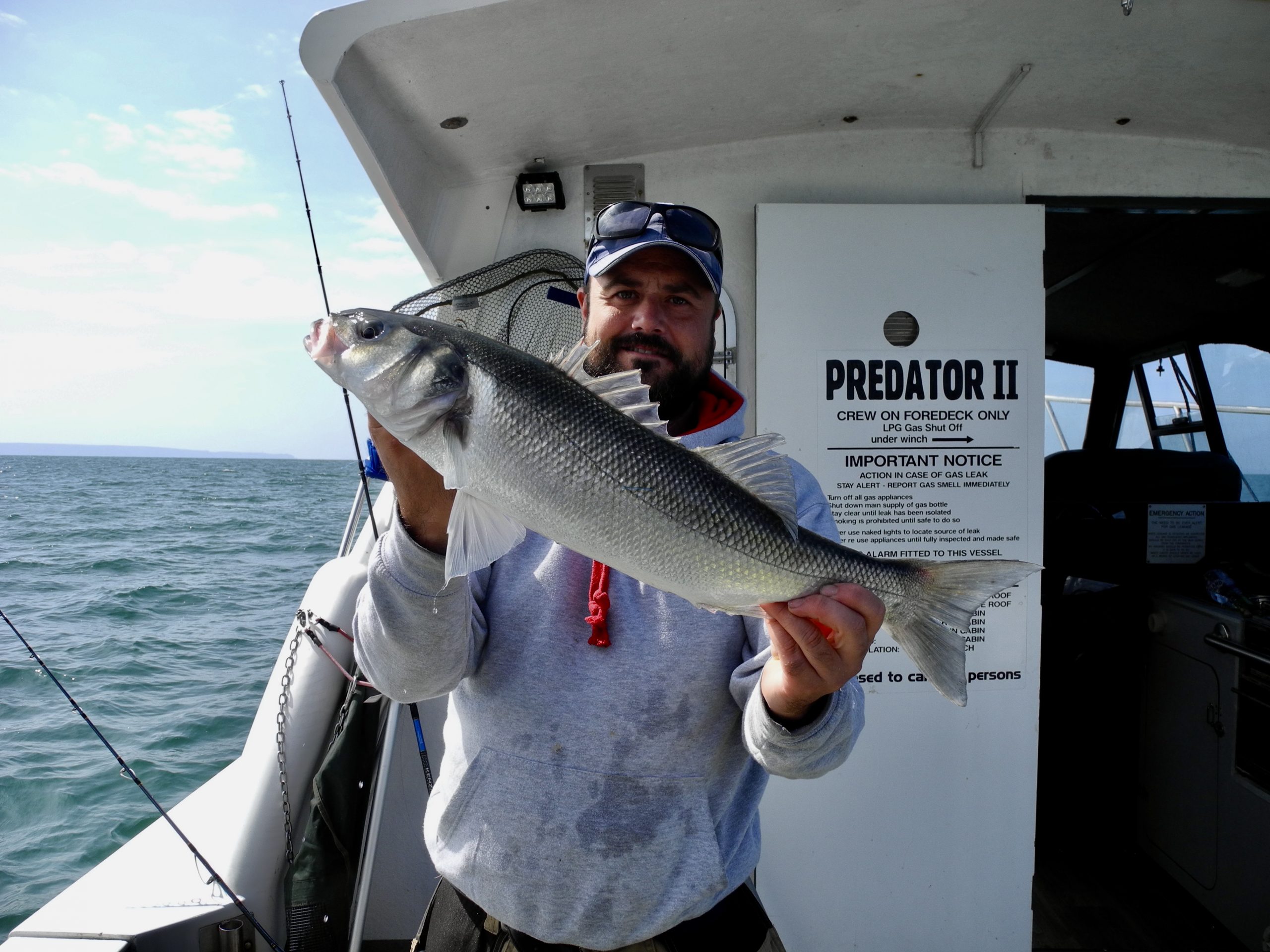
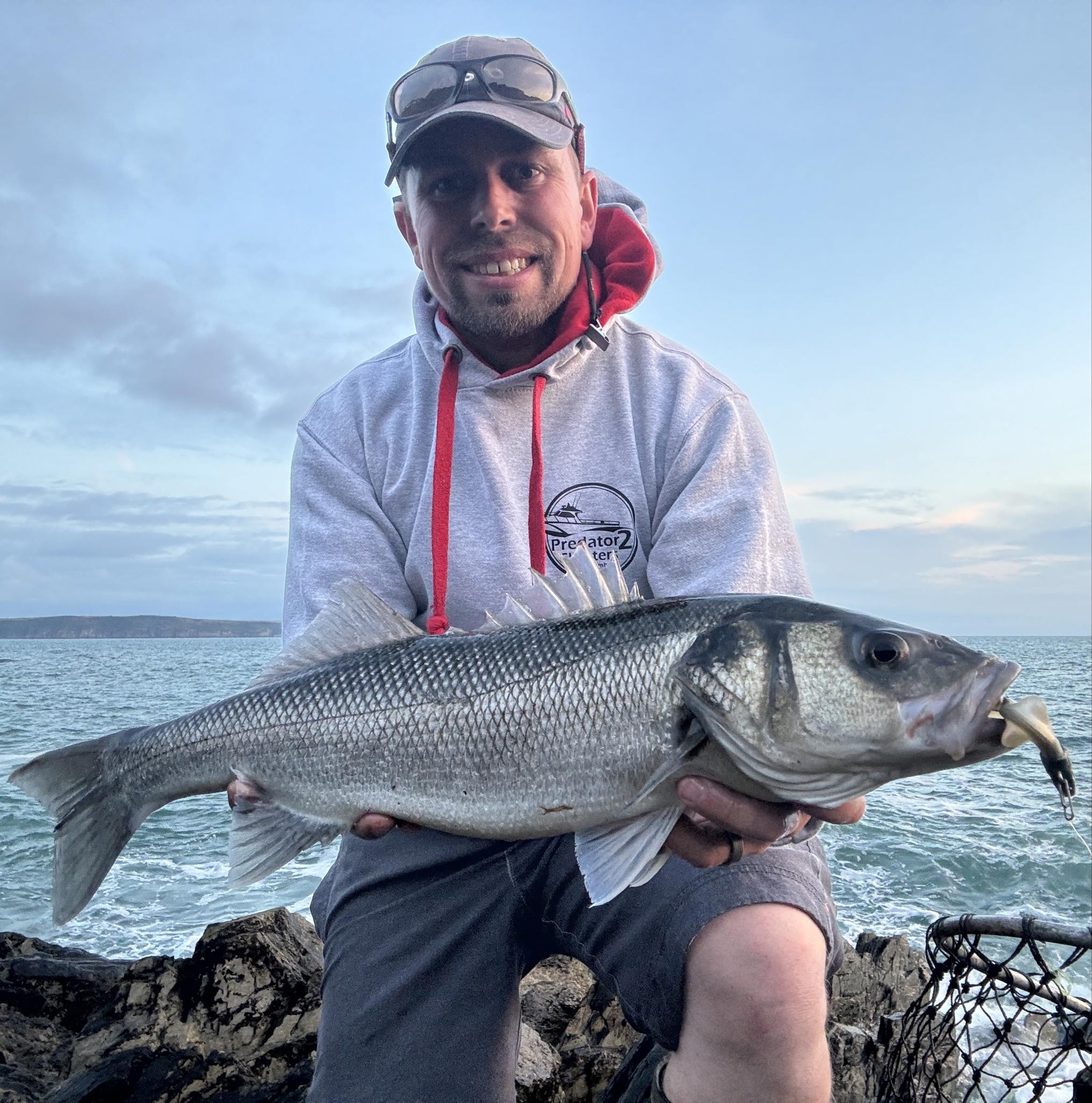

September proved to be a mixed month weather-wise, although generally warm, with some occasional heavy showers. Water levels slightly dropped over the month, now down to around 60% to 70% at time of writing.
Fishing:
Kennick – The fishing gradually improved as the month progressed, with weekly rod averages up to 2.4 fish per rod towards the end of the month. The fish were well spread out around the fishery, with Clampitts Bay, The Narrows, Oak Tree Point, Poplar Point and the East Wall all proving popular locations. Fish tended to feed close to, or from, the surface, and floating line tactics proved the most successful, either with dry patterns (Foam Daddies, Black Hoppers, dry Sedges and Beetle patterns), or shallow-fished nymph patterns (Damsel Nymphs, Green Buzzers, Pheasant Tails and Diawl Bachs). Successful lure patterns included Orange Fritz, Cats Whisker and Cormorant, as well as the occasional deeper fished Booby – Jerry Hiscutt (from Newton Abbot) caught five rainbows on a Black Booby.
Siblyback – The fishing at Siblyback proved challenging this month, with anglers struggling to average one fish per visit, although this did pick up as the month progressed. Stocky Bay, Crylla Bay, Two Meadows and the West Bank proved to be the most promising locations, with Damsel Nymphs, Goldhead Montanas, Black Buzzers, Shrimp and the occasional Black Midge catching fish. Few fish of note were caught – Nigel Hoskin managed to catch a 2lb rainbow using a Black and Green Goldhead pattern fished on a floating line and fast retrieve, and Ron Wilday (from Liskeard) caught a bag of four fish using a slowly pulled Black Beetle.
Burrator – Rods averaged 1.9 fish per angler over the month (picking up to 2.7 by the end of the month), with most fish being caught from Longstone Point and Bank, Bennetts Lawn, Lowery Point and Pig’s Trough. Fish were feeding throughout the water column, with floating, intermediate and sinking line tactics all catching fish. Successful nymph patterns included Damsels, Hares Ears, Buzzers and Black and Peacock Spiders, while successful lures included Hothead Yellow, Orange Blob, White Dancer and Black Woolly Worm. Alan Green caught a bag of five fish, the largest of which was a rainbow of 3lb 12oz, a personal best, as well as best rainbow of the season at Burrator. Carl Thomas (from Kingsbridge) caught five rainbows to 2lb, as well as two brownies, using Buzzer patterns on a floating line.
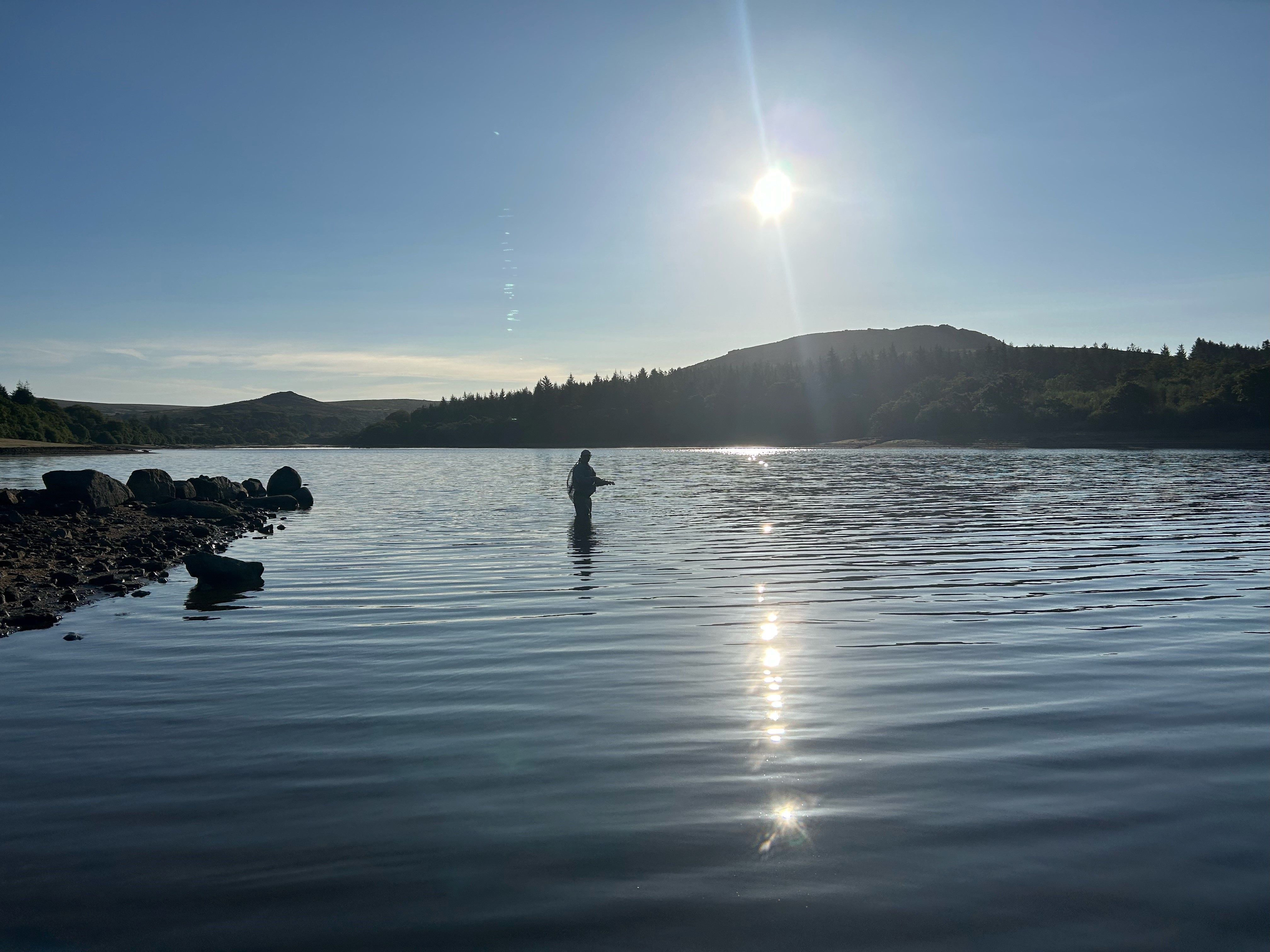
Stithians – Fishing at Stithians remained tough throughout the month, with anglers again struggling to average one fish per visit. The best locations included Goonlaze, Deep Bank, Pipe Bay and Yellowort. Generally midge-Tip and Floating lines proved popular, in conjunction with Daddy Longlegs, Black Gnats and Deerhair CDC fished on the surface, or Diawl Bachs, Hares Ears and Quill Nymphs fished just below. Neil Chapman (from Penryn) caught three browns from the East Bank, using a floating line and a moderate retrieve.
Fernworthy – The fishing improved as the month progressed, with anglers averaging three fish per rod in the final week. Lowtin Bay, Picnic Area Bank and the South Bank proved to be the most productive locations, with a selection of dry (CDC Sedge, Cinnamon Sedge and Black Parachute) and nymph (Damsel, Black Spider, Hares Ear and Pennel) patterns proving successful. Clive Garland (from Tiverton) caught three browns (missing six others) using a Black and Peacock Spider fished just under the surface on a floating line with a slow retrieve.
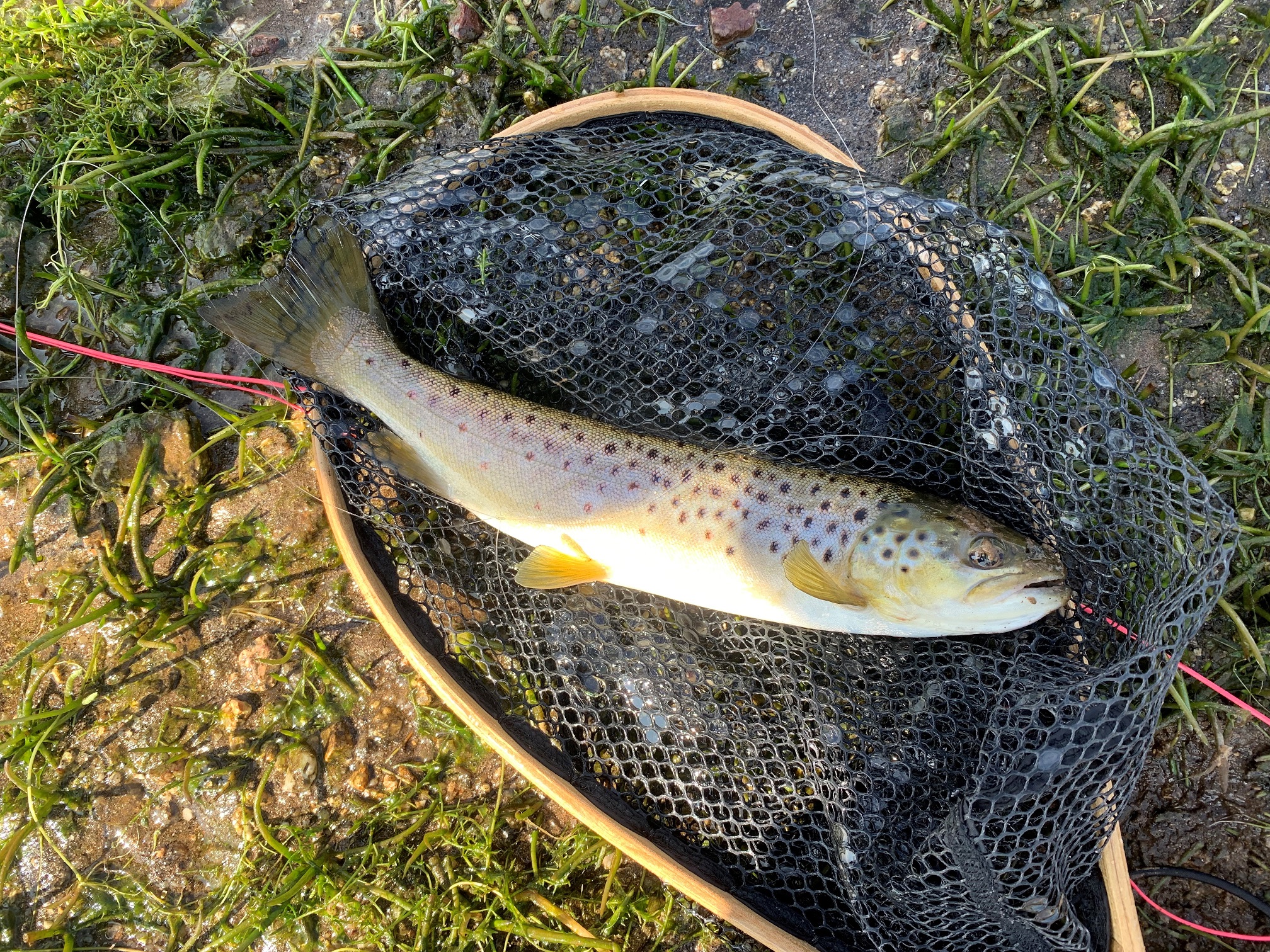
Colliford – Here the excellent sport continued, with anglers averaging 4.2 fish per visit (up to 5.3 in one week). Floating line tactics continued to produce the best results, with fish being caught on dry patterns (CDC Hoppers, Foam Daddies, Beetles and Black Gnats), nymphs (Pheasant Tail, Black and Peacock Spider) and pulled Soldier Palmers, Zulu Muddlers, Bibios and Zulus, as well as a few of the more traditional brown trout patterns (Alexandra, Teal Blue and Silver and Black Pennel). Popular locations included the Middle Car Park bank, Dam, Lords Waste, Stuffle and Menaridian Point). Simon Peters (from Cusgarne) caught thirteen fish in one session on a bright sunny day with a northwest wind, with fish coming to a selection of flies fished as a team with a slow retrieve. Chris Tilyard (from Fraddon) caught nine browns to 1lb 8oz, casting dry patterns to freely rising fish.
Roadford – The fishing improved as the month progressed, with anglers averaging 3.3 fish in the final week. Daveys Bank proved to be the best location, where Rodney Wevill (from Lifton) caught ten browns to 2lb, using Soldier Palmer and Humungous fished on a floating line with a varied retrieve. Other successful patterns included Blue Damsels and Bibios.
October 12th is the Final of the Fluff Chuckers Brown Trout Masters at Roadford
Please see the Trust’s website (www.swlakestrust.org.uk/trout-fishing) for more information on buying tickets, boat availability and booking, and forthcoming events. The Trust, in conjunction with Fluff Chuckers, will be running a Brown Trout Masters competition this season, to be held over three dates at Colliford, Fernworthy, and Roadford – please see the website for more information.
Chris Hall (September 2024)
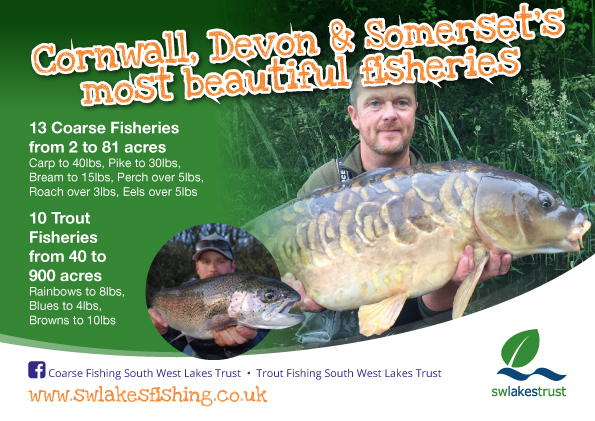
A rise in river levels following recent rainfall has encouraged anglers onto the regions rivers in the hope of salmon. James Lewis fished a middle Torridge beat and tempted a fine salmon estimated at 9lb. Another salmon estimated at 13lb was tempted from a middle Taw beat. Several other salmon have been seen migrating up river so there is hope that a few more will be tempted during the last two weeks of the season

I attended the West Country Rivers Trust CSI Volunteer Conference at High Bickington on Saturday September 14th. The event was well attended with enthusiastic volunteers from across the region. It is very encouraging to meet with a wide range of people with a passion for rivers. It is clear that there is a need for more coordination of effort between the many different groups that use the rivers a topic that was explored with future plans explained by speakers at the event. https://wrt.org.uk
Many at the event were not anglers and talking with several at the event my view that we need to work together for the good of the rivers was reinforced. Anglers, Canoeists, Wild Swimmers and conservationists all want clean water so we need to focus on our common goals and put our differences aside.

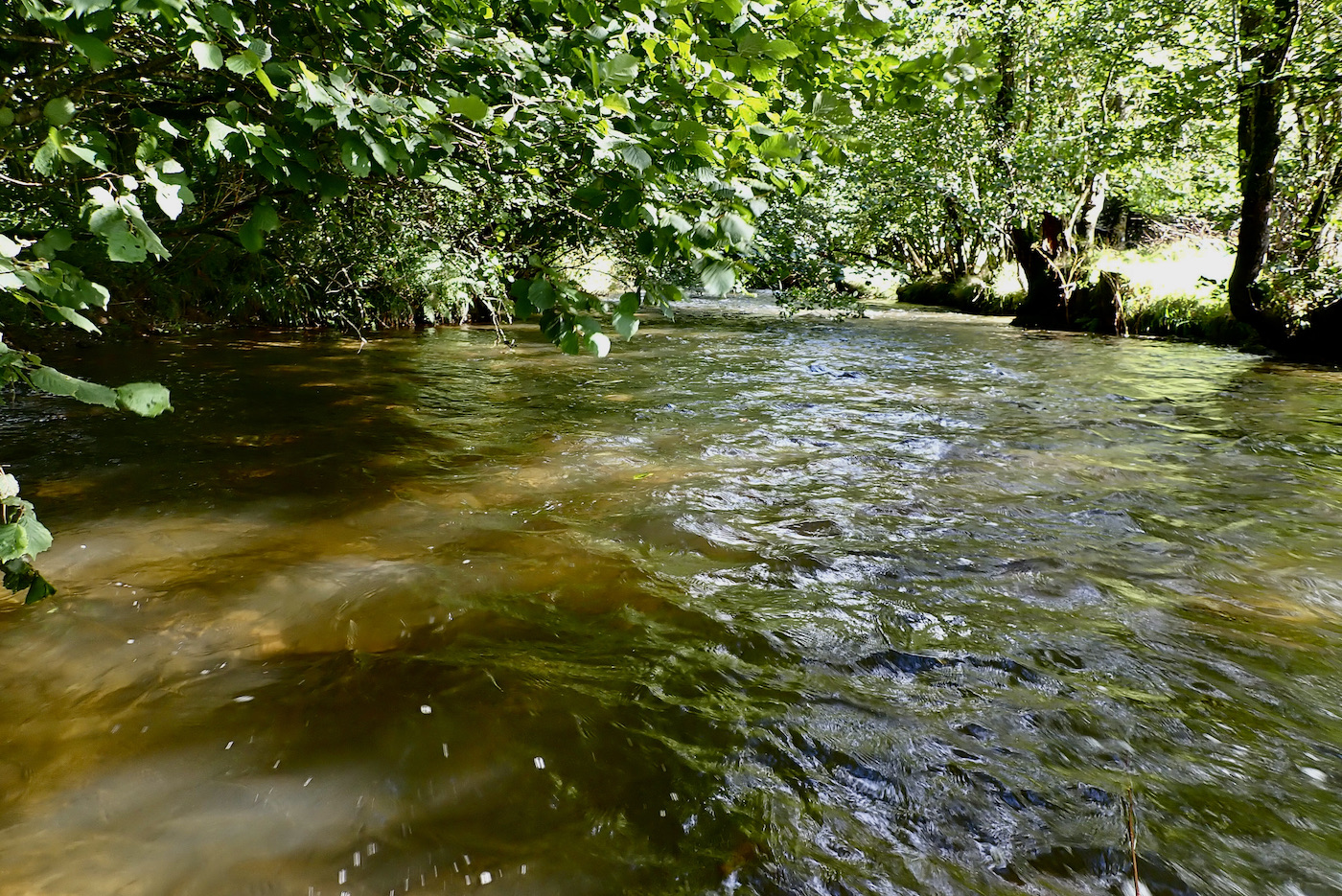
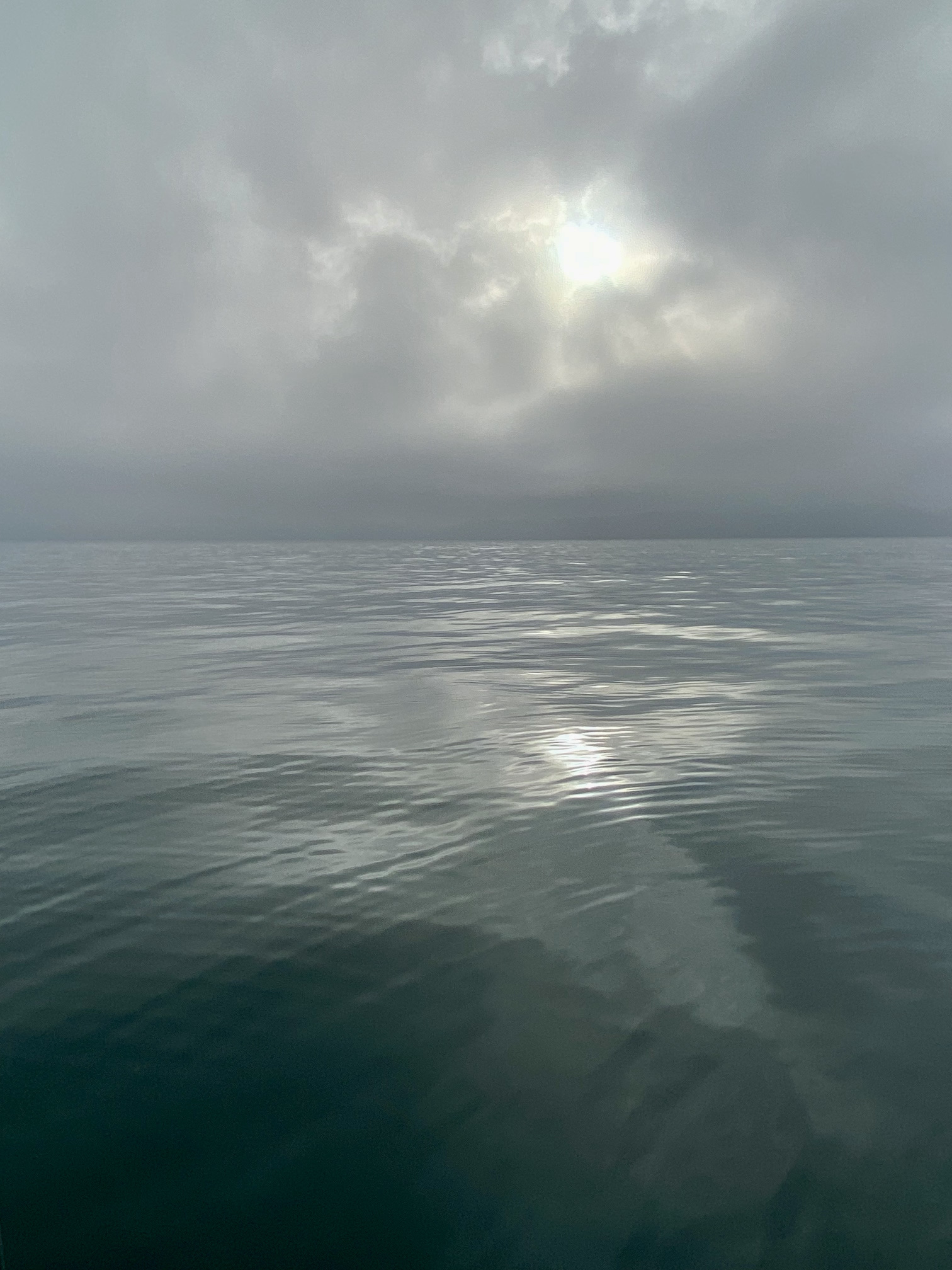
The calm waters merged into the misty grey of the morning light. Archie cut Reel Deals engines and readied the shark rods as we began a long drift of expectation.
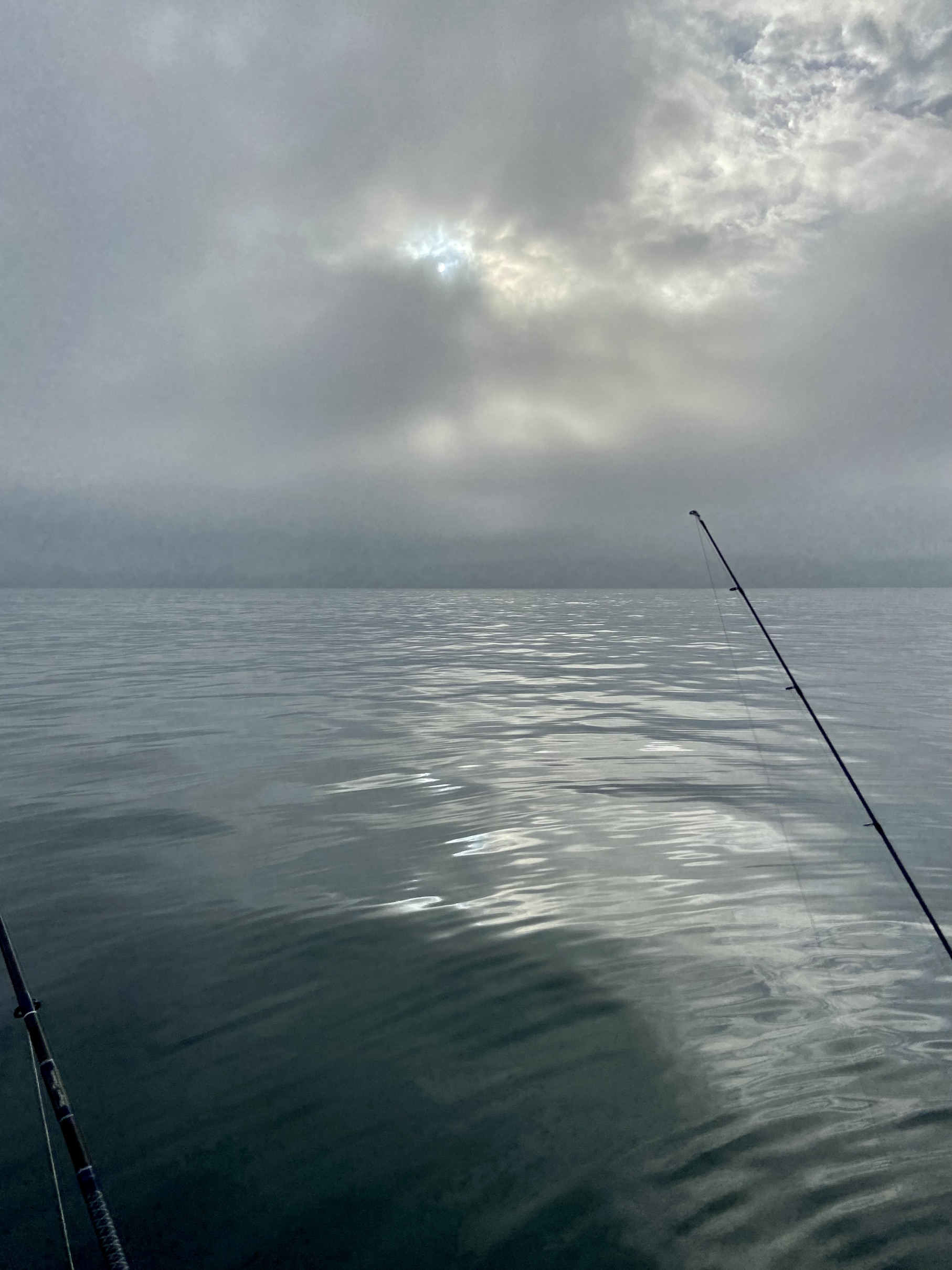
The five of us sent down jigs and feathers to catch fresh bait. Archie baited the circle hooks that were suspended beneath brightly coloured drinks bottles that would bob optimistically upon the ocean.
Mackerel, scad and pollock were swung on board as we drifted. We drew numbers, Peter Robinson drawing number one, Bruce Elston, number 2, Kieran (from Wales) number 3, I was number four so knew from the off that I would only do battle if we had a good day with the sharks. Toby was number five cementing the fact that it was not his day! A broken rod, lost sunglasses sealing that old comes in three saying! Fortunately Toby is a resilient sole who carries an infectious smile throughout.
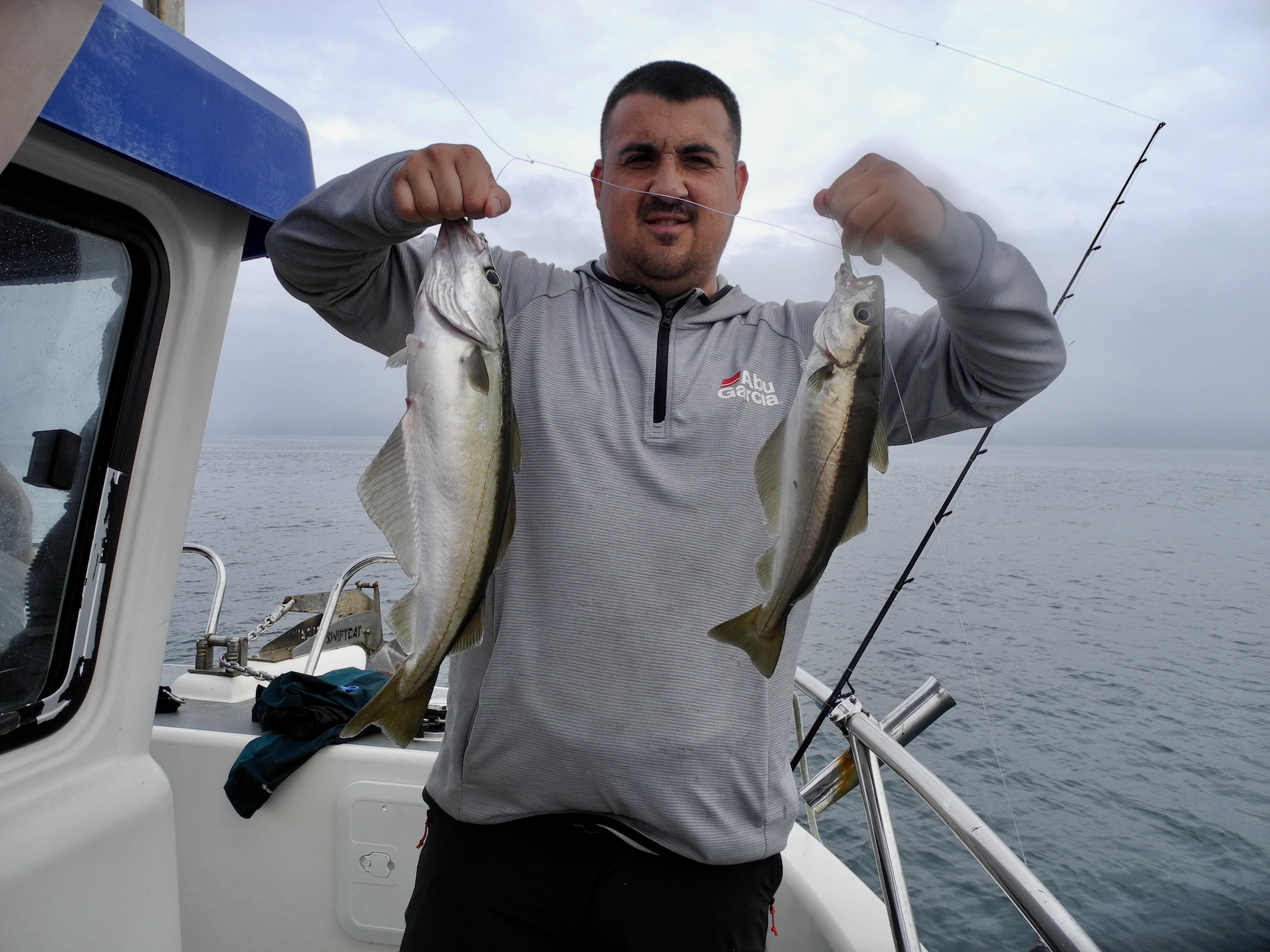
Archie Porter was Skipper for the day as Reel Deal founder and owner Dan Hawkins was down South chasing tuna, skippering with Happy Days Adventure Fishing.
Archie has gained valuable experience working with Dan on Reel Deal and skippering Predator 2 before it was bought by Daniel Welch who is now embarking on his own journey with the boat.
With the rubby-dubby sending out a stream of particles and scent it was now time for a brew and to drift with wind and tide.
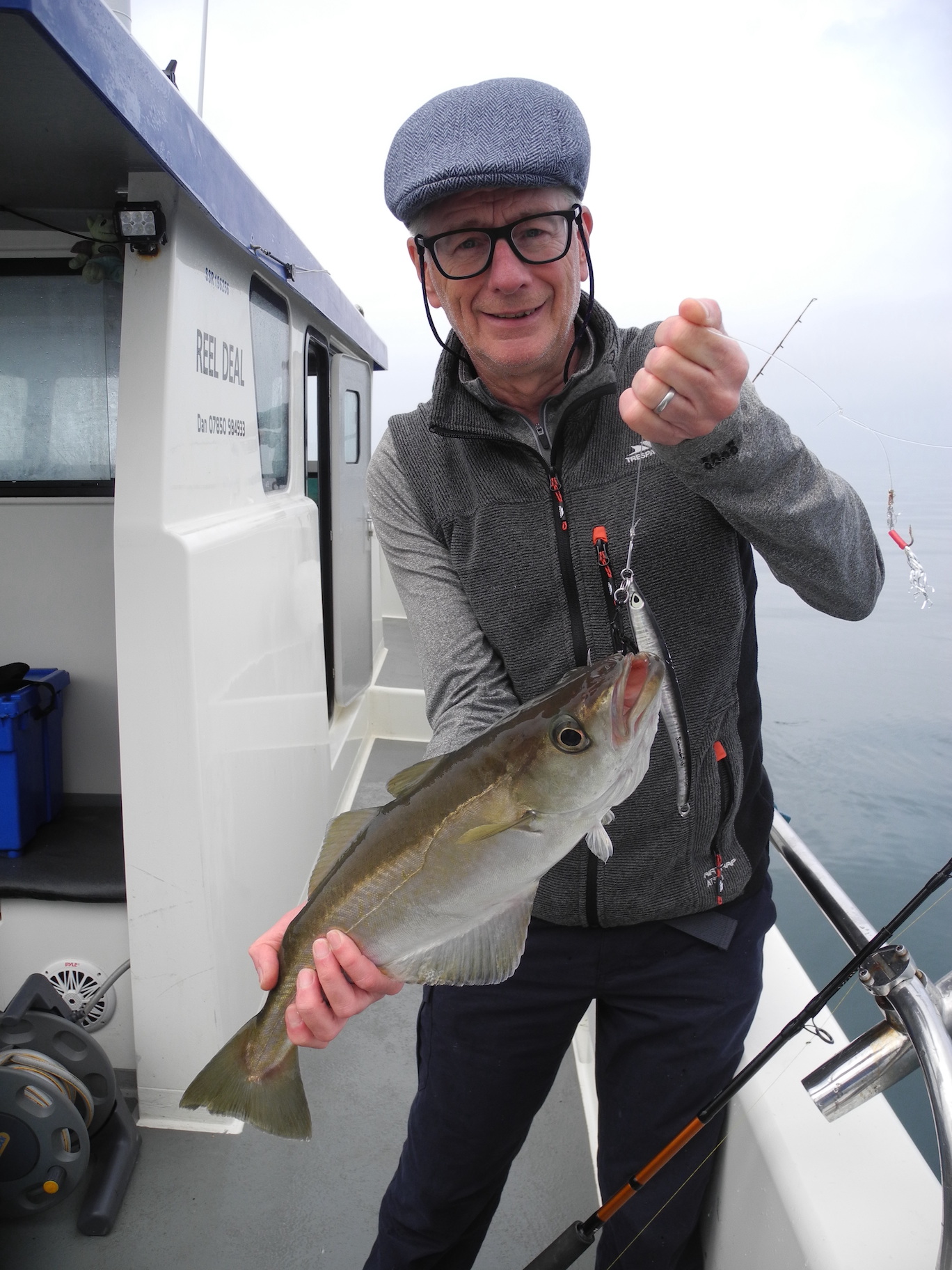
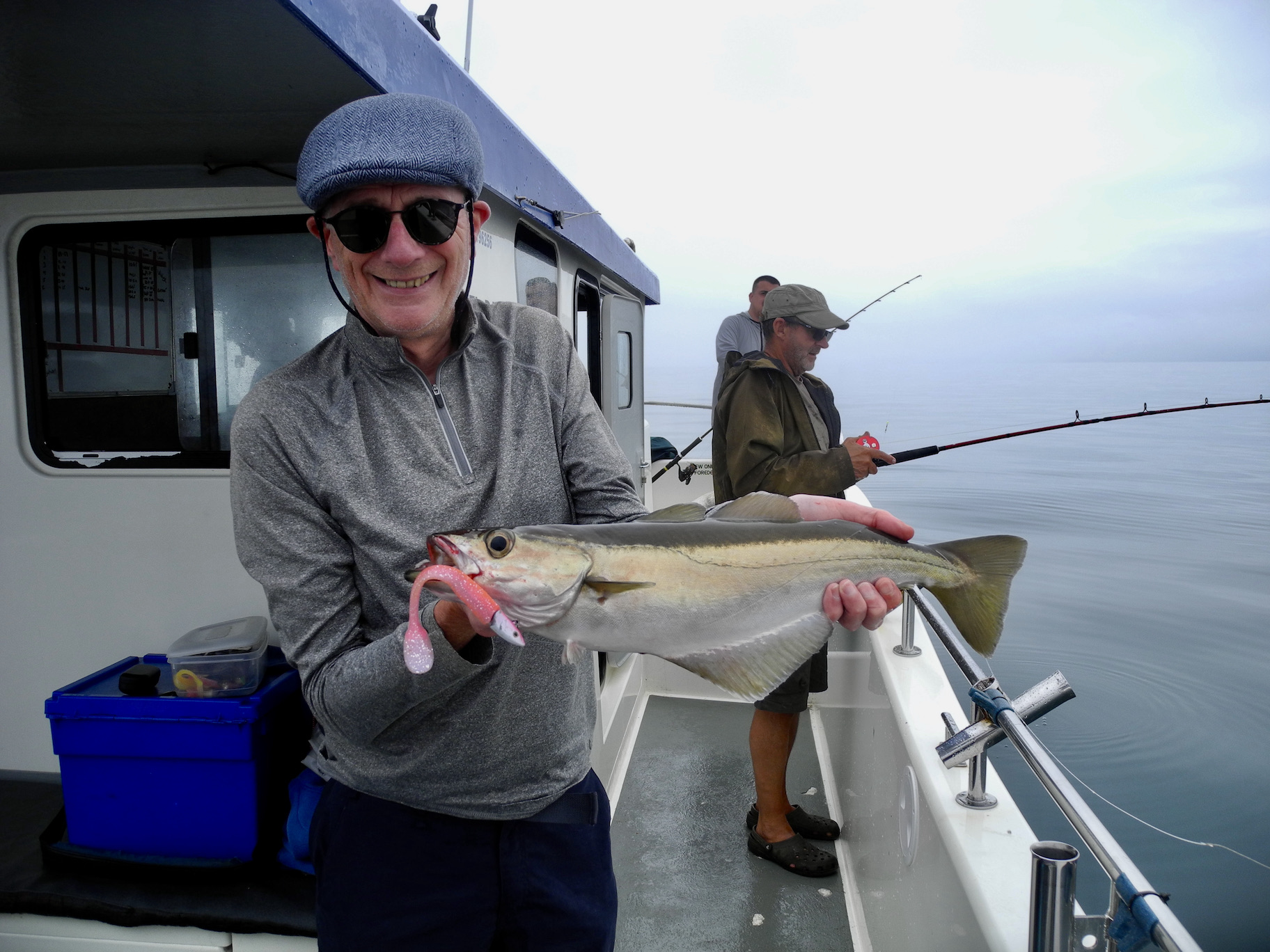
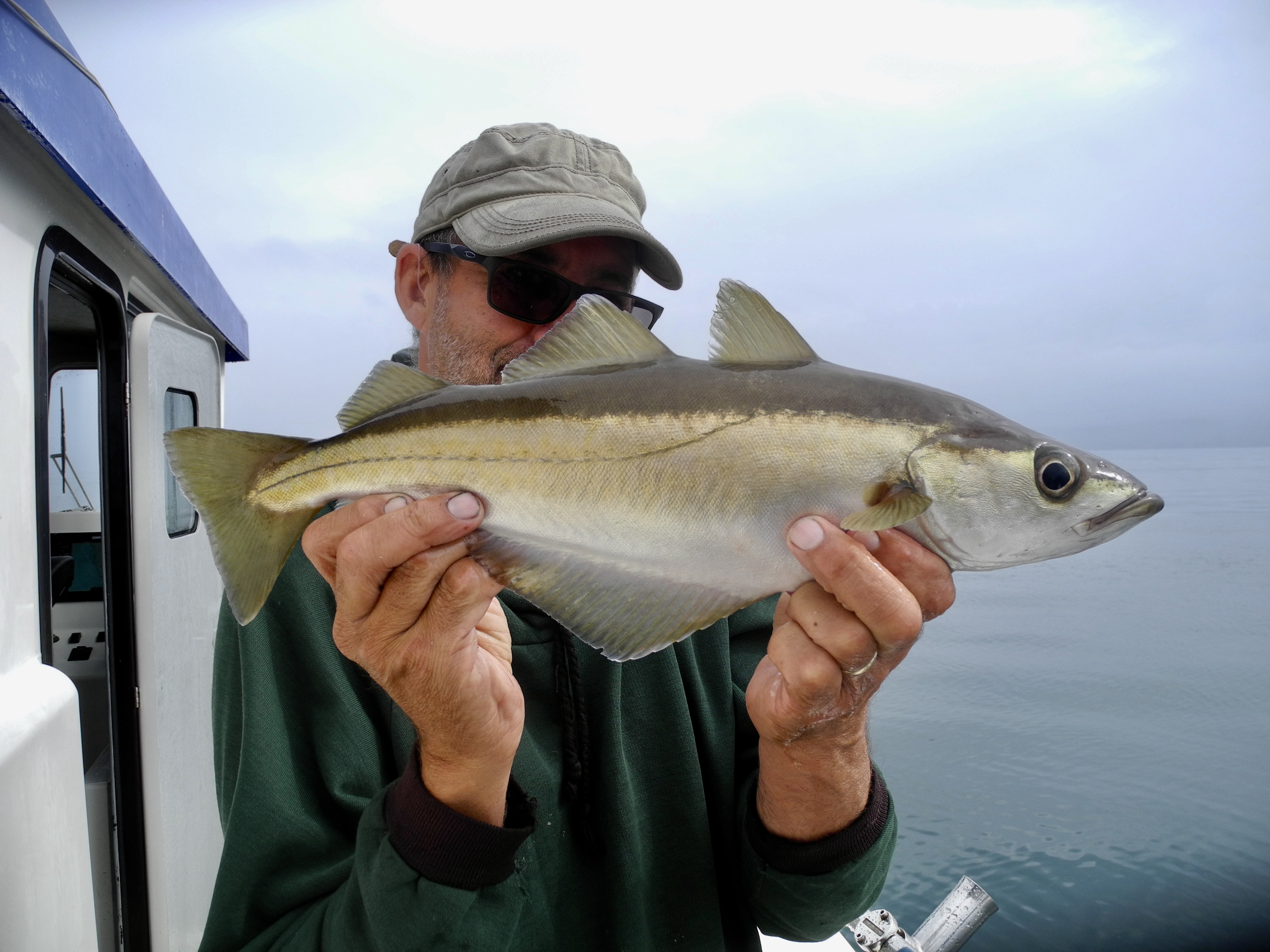
We were drifting over rocky reefs and we all used various jigs and lures to tempt hard fighting pollock from the clear water. Scad and the occasional jumbo sized mackerel were added to the bait stash with fresh baits added to the shark set ups from time to time.
I love the expectation of shark fishing the mystery of what lies beneath and what could be? Banter and chat flowed freely with tales of fish and the wider world. Topics from toxic politics, music, life and recipes.
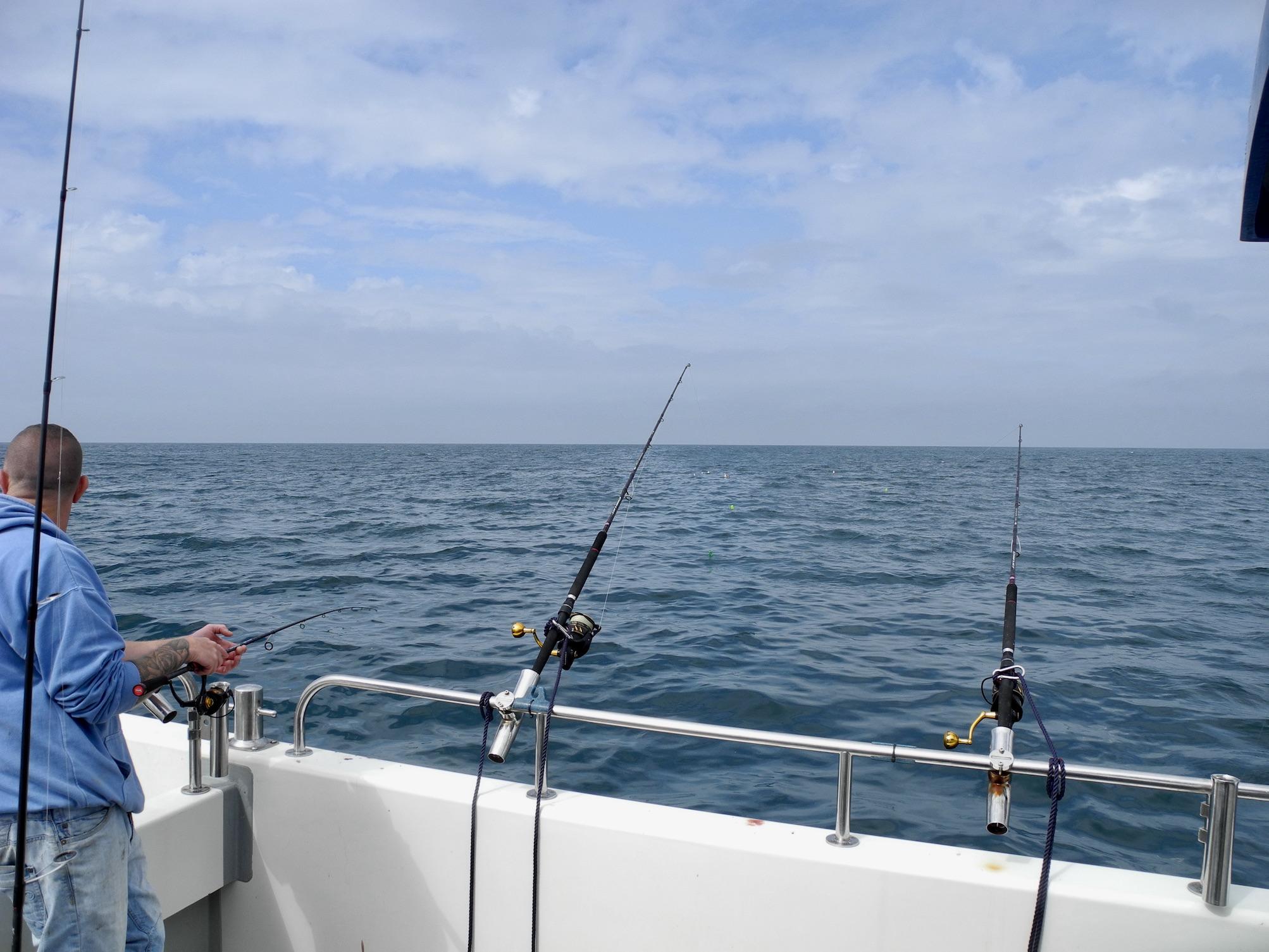
Whilst the sea was mirror calm a rolling swell lifted the boat gently as the immense power of the Atlantic ocean stirred. As the mist lifted we glimpsed white water as the swells crashed into the wild and rugged North Cornish Coast.
Somewhere on the cliffs Hawkers Hut nestles high up overlooking this treacherous coastline. Robert Stephen Hawker was an eccentric clergyman who lived between 1803 and 1875. Hawker is said to have spent many hours in the hut writing poems and smoking opium. He is perhaps best remembered for his compassionate desire to provide Christian burials to shipwrecked seamen washed up on the shores. He also wrote the famous Cornish song, The Song of the Western Men” with its chorus line “ And Shall Trelawny die? / Here’s twenty thousand Cornish men / will know the reason why!’. A song that is sung by Cornish Male voice choirs with great passion. The hut is now preserved by the National Trust and is well worth a visit.
The day drifted past and after tempting several pollock I decided to change tactics. I baited two size 4 Sakuma Chinu hooks with slivers of fresh mackerel. Down into the clear water to be bounced along the rocky sea bed.
The rods sensitive tip jagged sharply and a small black bream was briefly admired before being released. Toby Bassett always keen to chase different species followed suit and soon caught three handsome bream two of which were keepers.
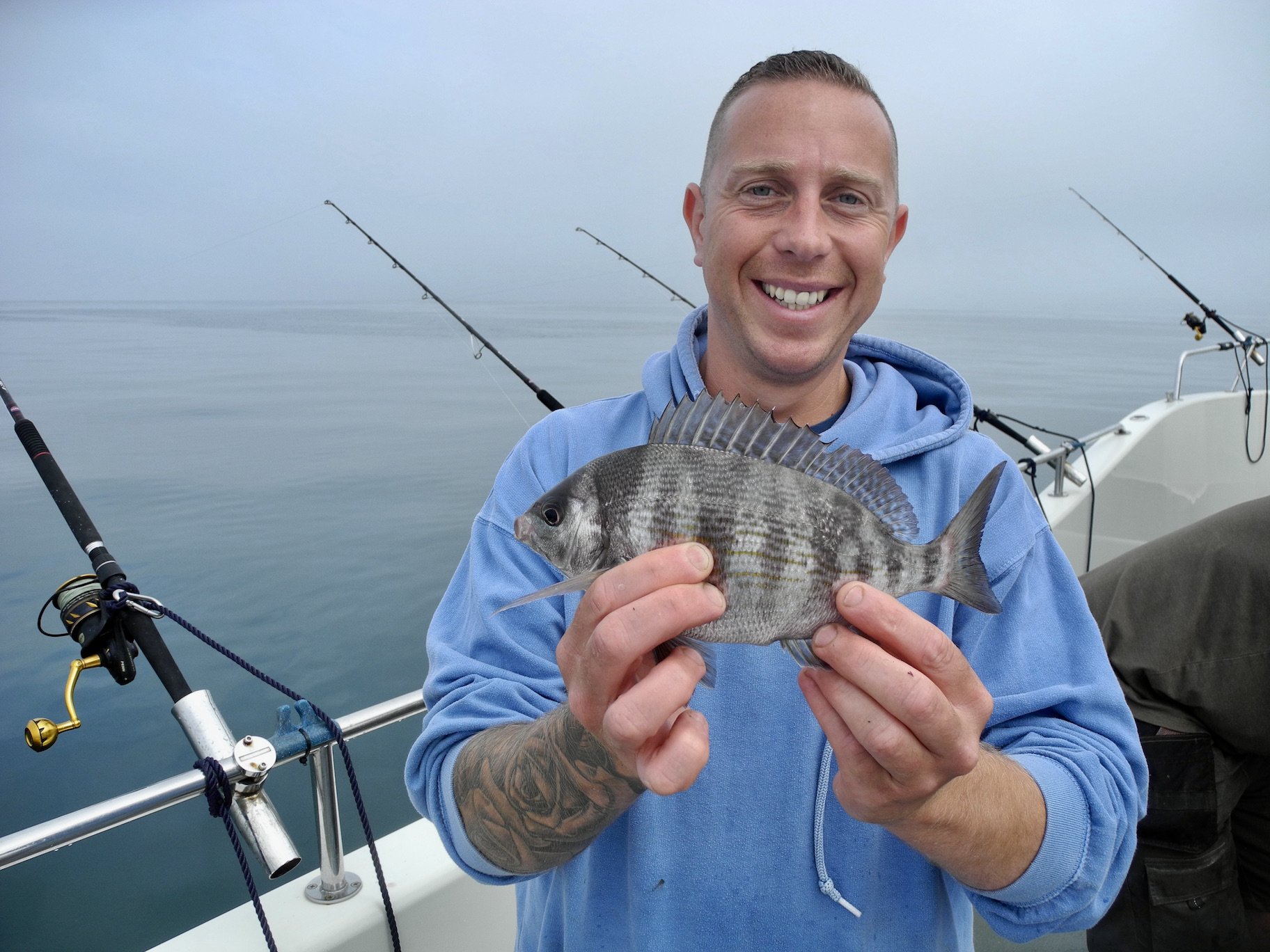
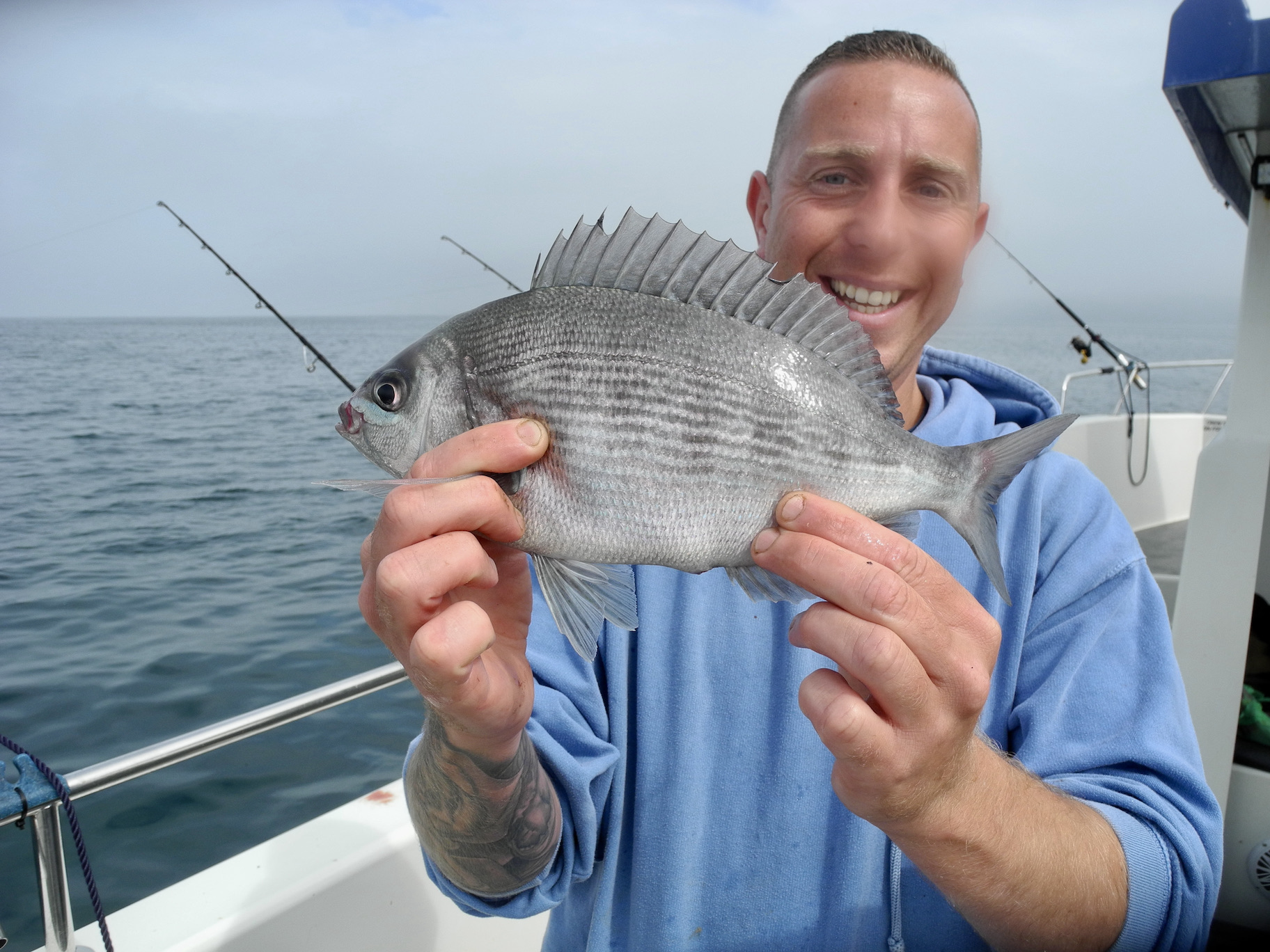
There was a moment of drama when a shark float bobbed and disappeared a large swirl preceding close by. The gulls and fulmars that had been bobbing in the rubby-dubby slick took off. Peter grabbed the rod apprehensively but nothing happened! Was it a wary shark, a tope or cuttle fish? The bait was damaged but the evidence inconclusive.
As the day drifted into afternoon a breeze came from the North West. We relished the blue sky and warm sunshine, the shark floats spread out perfectly in the slick and expectations grew, conditions were perfect.
Something large intercepted my tiny mackerel baits and put a serious bend in the rod before biting through the trace.
At the bow of the boat Bruce hooked a powerful tope as he bounced a large scad bait just off the seabed. A good tope of over thirty pounds appeared in the clear water and came off as Archie grabbed the leader.
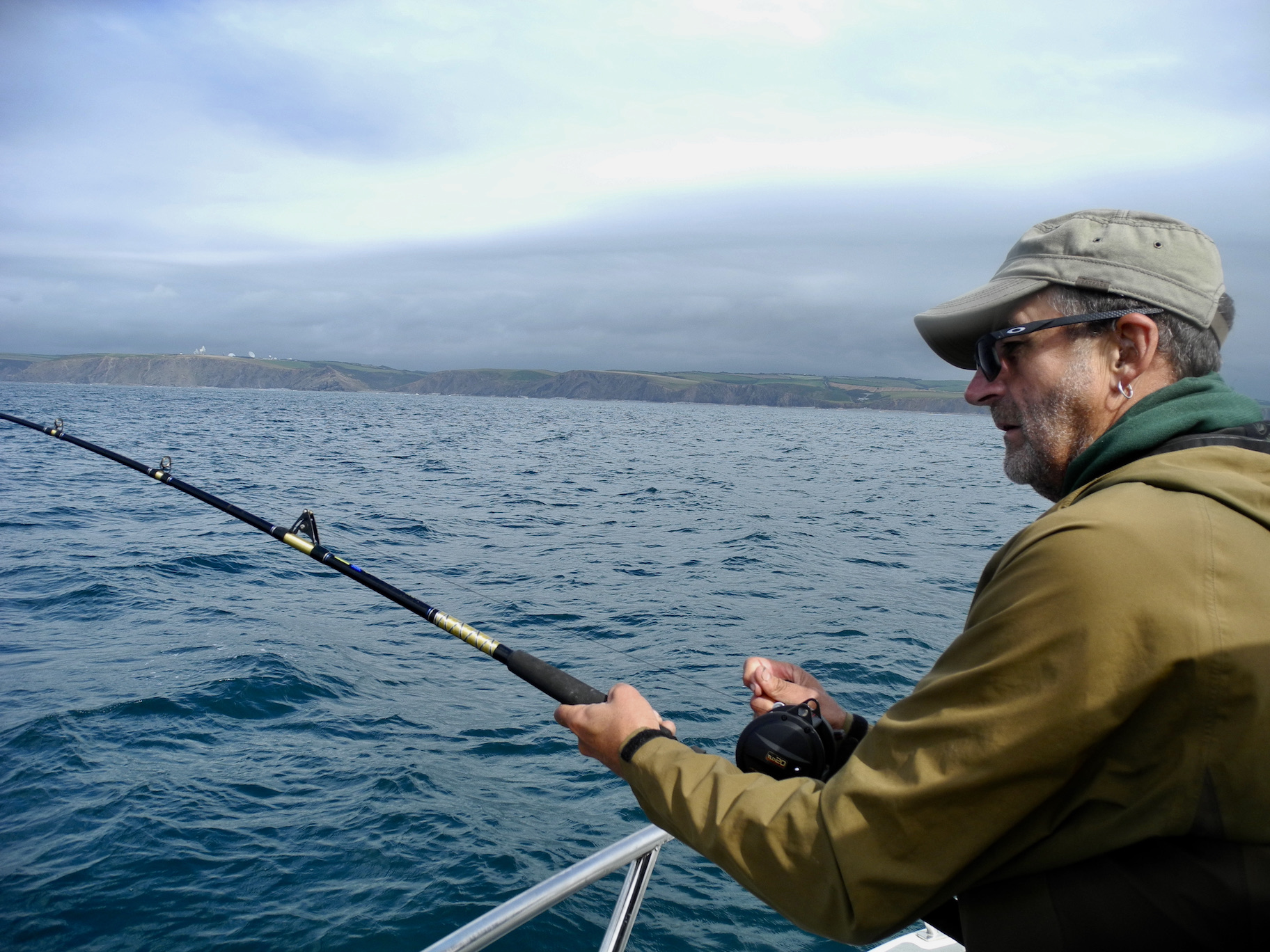
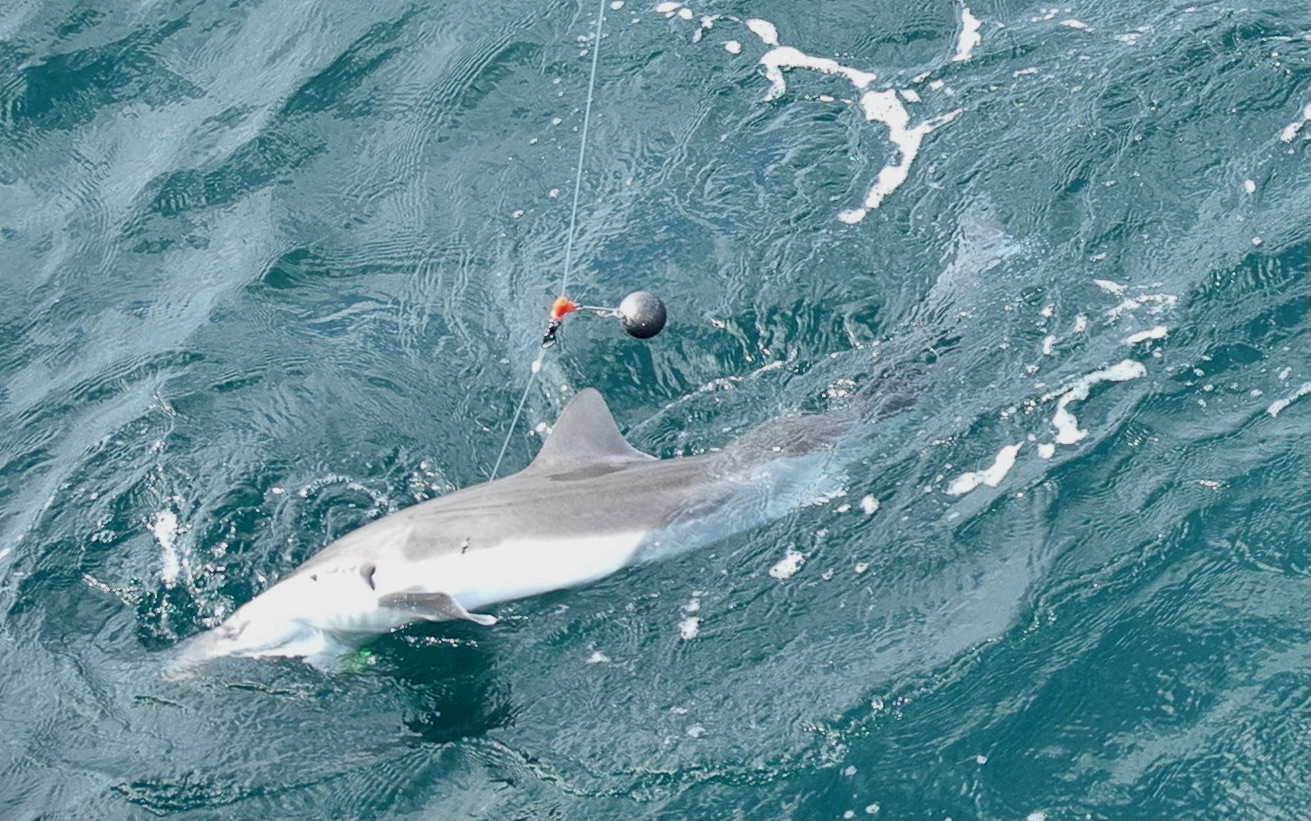
A few minutes later Bruce was in action again this time bringing the tope to the boat where it was expertly netted by Archie. At 38lb it was a new personal best for Bruce.
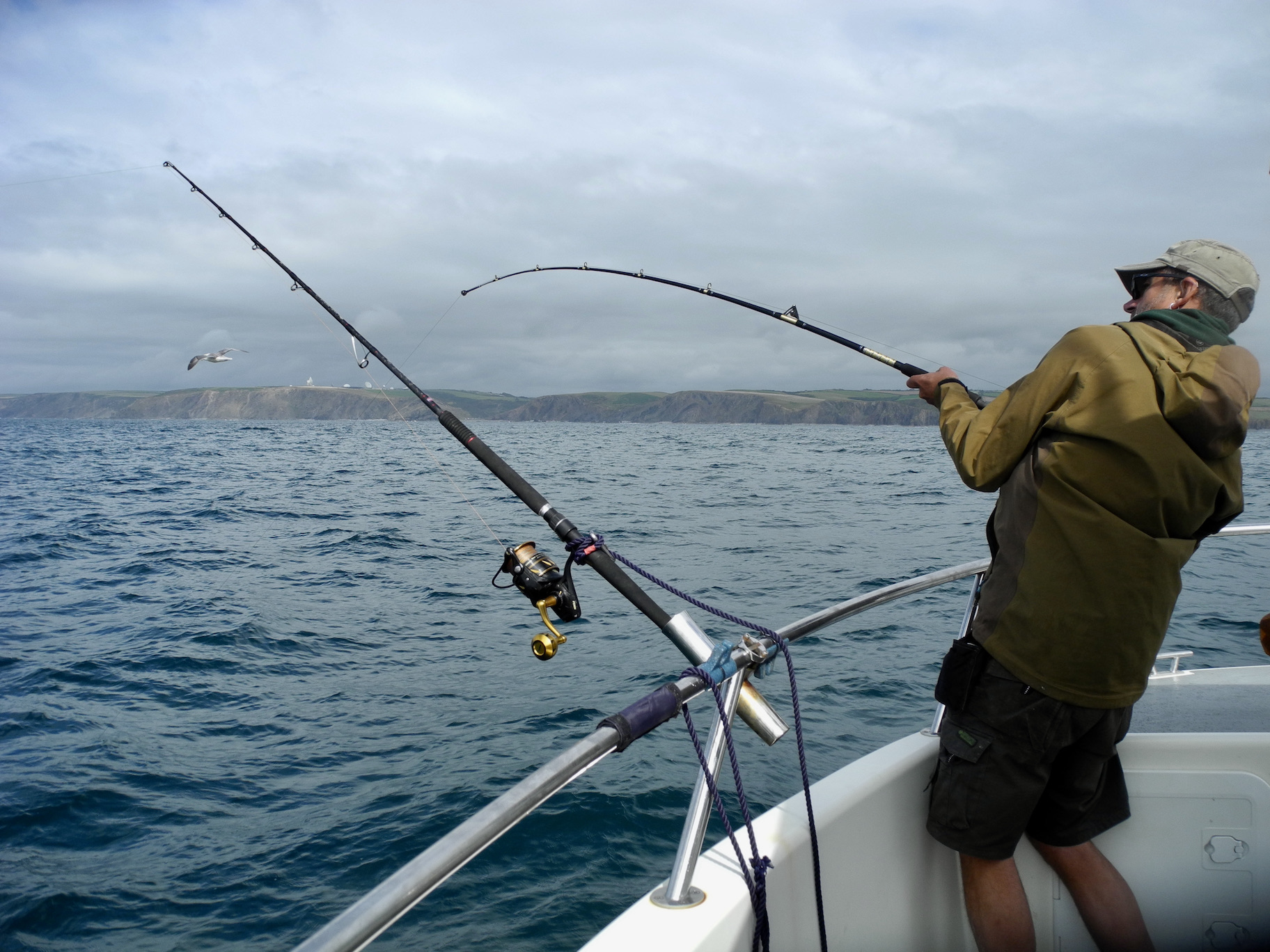

In the mean time I hooked two more tope on my small hooks and inevitably suffered bite offs. I couldn’t resist the chance of a tope and tied on a short leader, a 150lb b.s trace a 6/0 Sakuma Kong hook and sent down a side of mackerel. A few minutes later I was locked in battle the spinning rod taking on an impressive battle curve. I piled on the pressure determined to get the tope to the boat without severing the hook-length or wrapping in the mainline. A tope of over twenty pounds was soon secured safely and its image secured.
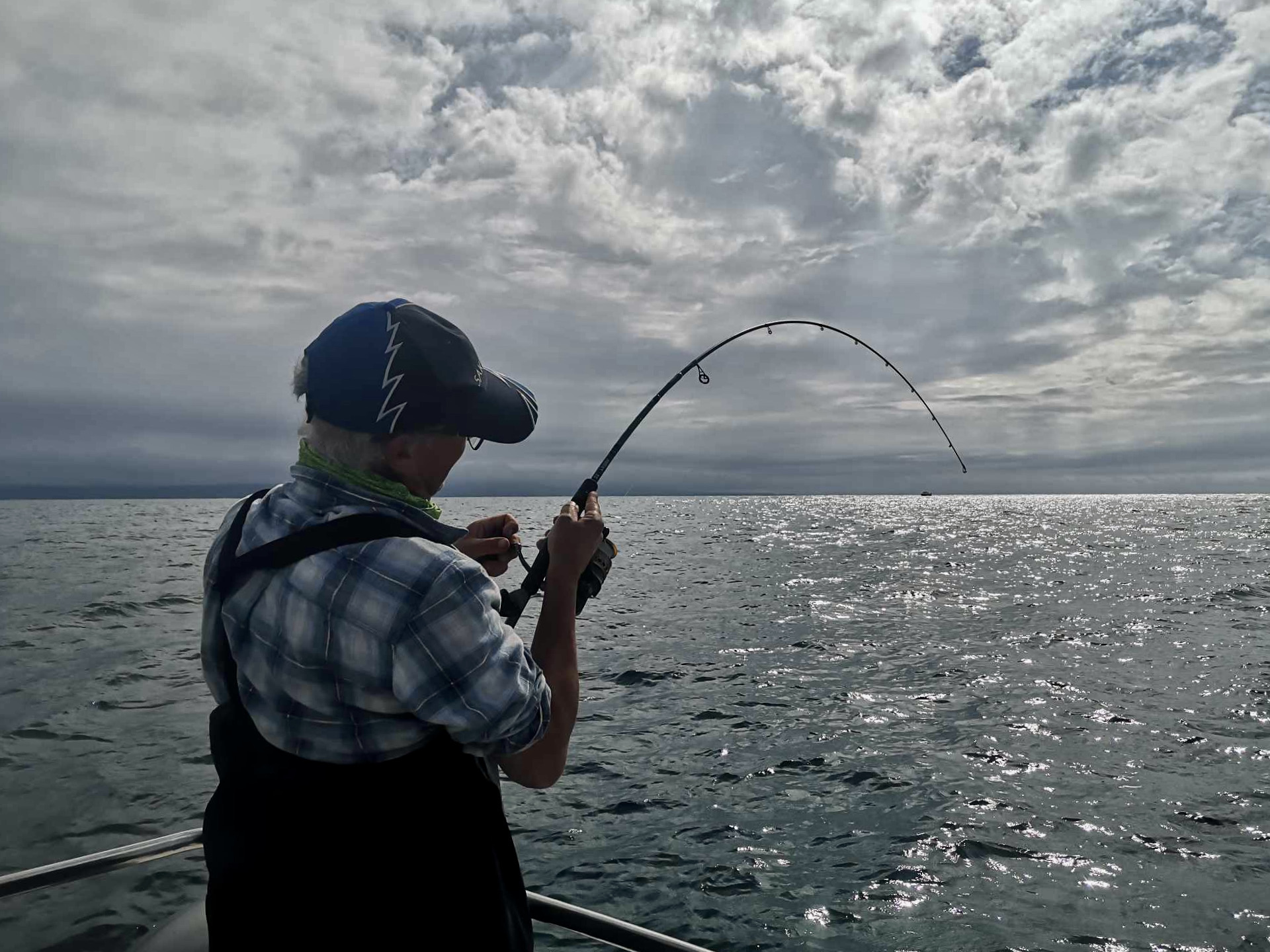
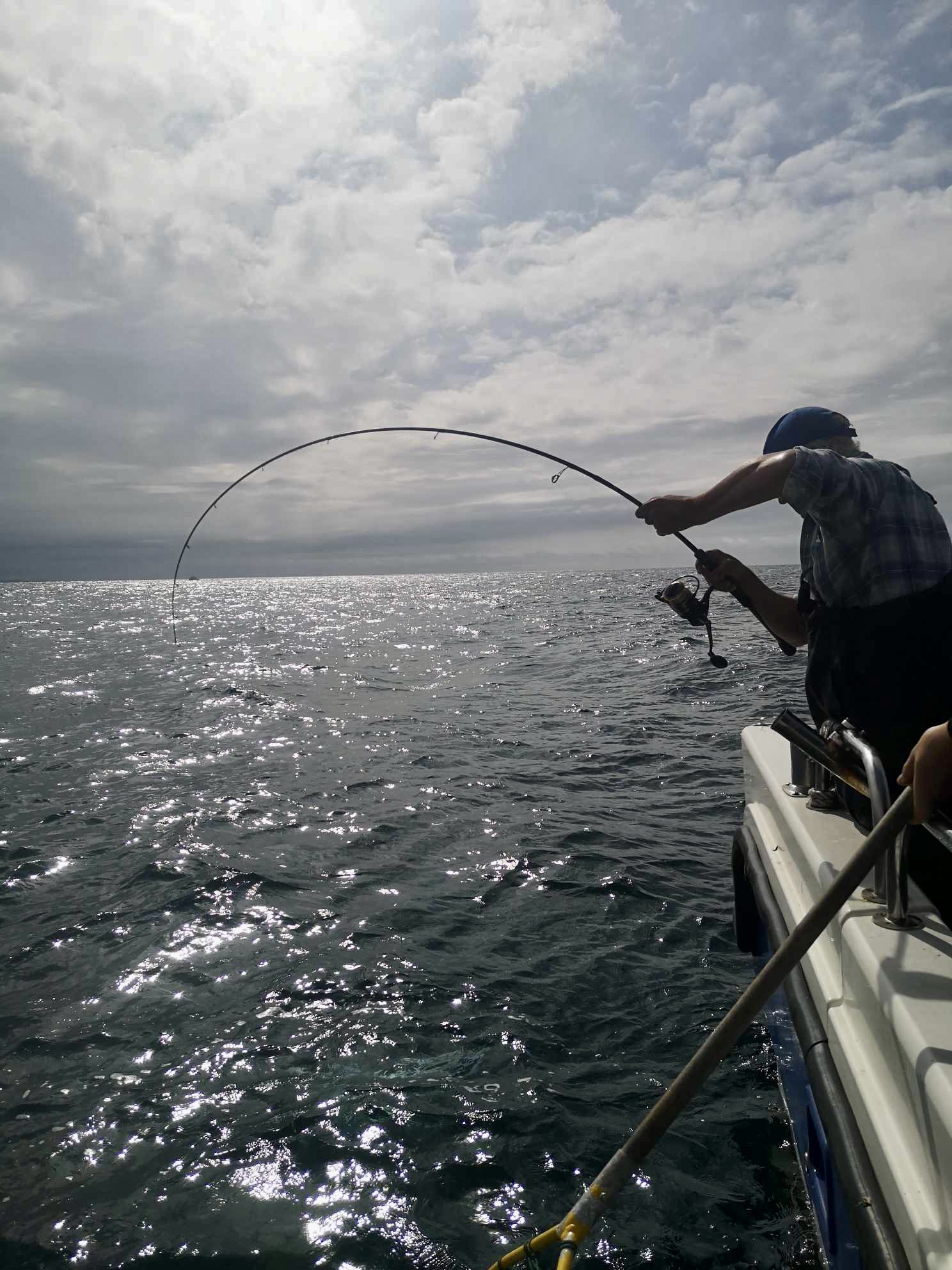
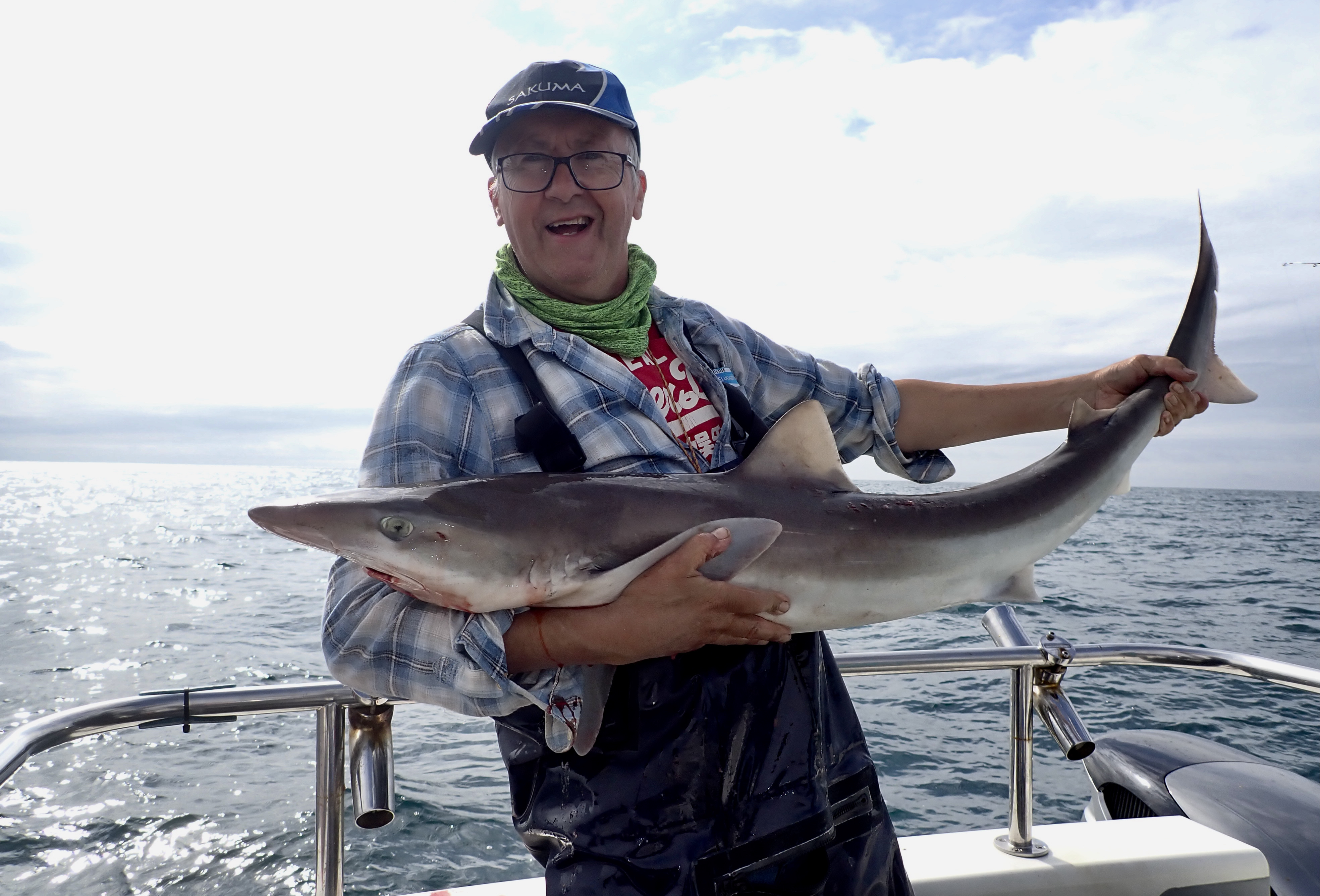
The action packed flurry of tope sport brought the day to an end all too soon. Reel Deal bounced comfortably over the lively sea past Hartland, Baggy and Morte Point the wild cliffs and coast as always pleasing to the eye. The occasional gannet was circling searching for fish.

We pondered on the lack of porbeagle, earlier in the year there had been some good days with multiple catches of shark. September is often a prime month and it is likely that they will show in numbers later in the month if of course the bait fish are there. Last year tuna arrived off the coast in late September will they arrive again? The only way of answering these questions is of course to drift in expectation.